Kanchenjunga Base Camp Trek - Updated Cost | Itinerary | Map

- Duration 22 Days
- Difficulty Level Moderate or Grade B (**)
- Destination Nepal
- Meals & Accommodation Breakfast, Lunch and Dinner
- Trip Start & End Kathmandu-Kathmandu
- Trip Type Camping and Adventure Trekking
- Major Attraction Dense rhododendron, pine, and oak forests, panoramic views of Makalu and Chamlang
- Maximum Altitude 5160 Meters
- Best Time April-May-June, September-October and November
- Kanchenjunga, the third-highest peak globally
- Dense rhododendron, pine, and oak forests
- panoramic views of Makalu and Chamlang
Kanchenjunga Base Camp Trek is a well-trailed route despite being a journey into the wilderness, as the region bears a mild topography and is easily accessible. Kanchenjunga, meaning Treasures of Snow, stands 28,198ft tall, the third-highest peak in the world. Considered a remote trek through Eastern Nepal, the trail passes restricted areas and takes the periphery of the border to the Indian state of Sikkim.
The trek starts after a flight to Biratnagar and a four-hour drive to Basantpur. The trail climbs through the settlements of the yak herders, Sherpa, and Chhetri villages with a backdrop of the Kanchenjunga massif. Crossing the ridge towards the Tamur River, panoramic views of Makalu and Chamlang appear. The trail crosses the Mewa Khola at Dobhan and follows the TamurKoshi. Dense rhododendron, pine, and oak forests pass along the way.
At Ghunsa, a Sherpa village, prayer flags and gompas are plenty. Jannu and other unclimbed peaks can be seen from a monastery nearby. Next, the trail passes through the edge of Kanchenjunga Glacier. After crossing the junction of Lhonak Glacier and the valley, we come to a gorgeous clearing with a magnificent landscape of unspeakable beauty, where we set camps for the day. Lhonak’s exploration continues for some days, including going to Pangpema to view Kanchenjunga’s north face. Then, slowly descending through Tortong, Yamphudim, Khebang, Phakholing, and Tharpu, we reach Bhadrapur, where we take a flight back to Kathmandu.
Eastern Nepal is distinguished by increased diversity on several levels, including ethnic groupings like the Rai and Limbu people, the richness of flora due to the region's higher summer rainfall, and some of the most breathtaking mountain vistas in the Himalayas. We enter a different environment by traveling along the glacial torrent of the Tamur and Ghunsa Rivers which originate on the northwestern face of the Kanchenjunga Himal. Peaks like Pyramid Peak, Jannu, the Twins, and of course, Kanchenjunga (8586m) dominate the landscape, which is eclipsed by an alpine majesty in practically every direction. On the return trip over the Mirgin La Pass, it is not any less dramatic as we traverse the mountain to the south (4500m). This is a difficult journey in a place that hasn't seen much travel lately.
A trek to Kanchenjunga's base camp is in and of itself an epic adventure that never lets up on the thrill. Compared to other treks in the Indian Himalayan range, the journey to Kanchenjunga Base Camp is considerably distinct from the others. Across the borders of Nepal, Tibet, and India, the Kanchenjunga massifs form a large cross (Sikkim). In India, Kangchenjunga was considered the tallest mountain until 1849, when Everest and K2 were discovered.
Geographically speaking, Kangchenjunga ranks third among the world's highest peaks, together with its five large massifs. Since 1988, there has been a significant increase in tourism to these five Himalayan massifs in the Sikkim region. In the beginning, trekking was prohibited in the region to protect its ecosphere. The explorers slowly revealed the hidden lakes, tribal communities, and forested areas home to a wide range of flora and species.
Starting at Yuksom, the exhilarating trip to Kanchenjunga base camp continues to Bakhim, Dzongri, Laxmi Pokhari, Bikhbari Chaurikhang, Rathong Glacier, Bikhbari, and eventually ends at Bakhim. Trekkers will marvel at the breathtaking views of Mt. Khangchendzonga (8,586 m), Mt. Kokthang (6,148 m), Mt. Pandim (6,691 m), and several other peaks in the area throughout the 11-day excursion. A trekker with an adventurous spirit, a desire to discover uncharted territory, and the resolve and physical stamina to meet the rigors of a physically taxing path through one of Nepal's most remote areas may consider undertaking the Kanchenjunga trek. This trek is typically performed for small groups of people searching for custom dates; we offer knowledgeable advice, preparation, and a high degree of professionalism and care on a trek with a great crew. This trek visits both base camps on the north and south side of the mountain.

What to expect at the Kanchenjunga Base Camp trek?
- Learning about the villages and culture of the Limbu people.
- Enjoy the expansive view of the nearby mountains, including Rating, Chandra Peak, Frey Peak (5830 m), Koktang (6,148 m), Kabru Peak (7,412 m), and the Kabru Dome (6600m). ∙ Meet and get to know the residents of isolated villages.
- An unforgettable experience is a trek to the third-highest mountain's base camp. ∙ Visit a Sikkim tea garden, learn about the many tea varieties, and spend some time outside.
- Take a monastery tour to learn more about Sikkim's vibrant culture.
- Abundant wildlife, including black bears, musk deer, snow leopards, and blue sheep ∙ Strolling across Yalung Glacier
The isolated and lengthy Kanchenjunga journey lasts 6–8 hours each day and is a remarkable vacation experience. This trekking area sees very few tourists. Compared to the Everest and Annapurna regions, Kanchenjunga is less populated. A chance to experience a local homestay and the Sherpa, Rai, and Limbus groups' cultures and traditions in a variety of settings is provided by the base camp trek to Kanchenjunga. The Himalayan black bear, musk, leopard, and red pandas can all be seen in the Kanchenjunga region, along with a variety of birds, shy dragons, amphibians, mammals, re-billed blue magpies, and pheasants.
Kanchenjunga, the third-highest mountain in the world at 8,586 meters, is visited by trekkers on the Kanchenjunga Circuit in both the north and south base camps.A decent degree of fitness and previous trekking experience is preferred for this trek because it takes place in a remote location. Nevertheless, despite its isolation, trekkers can visit Ramtang and Oktang Monasteries and acquire insight into the local culture. Along the way, the scenery is diverse and includes rivers, waterfalls, green meadows, birch and pine forests, the Yalung Glacier, and of course, the majestic mountains that line the route.
Regarding the mountains themselves, in addition to the Kanchenjunga peak, there are four additional peaks that are higher than 8,000 meters, with Kanchenjunga West, also known as Yalung Kang, being the most significant (8,505m). Twenty peaks higher than 7,000 meters are also present in this region, the tallest of which are Kambachen (7,903 meters), Janu (7,710 meters), Jongsong (7,483 meters), Kabru (7,353 meters), Tent Peak (7,365 meters), and the Twins (7,350m).
There are also many peaks higher than 6,000 meters. Five significant glacial systems can be found within this remarkable collection of peaks. These include the Zumu, Talung, and Rathong glaciers, which flow into Sikkim, and the Kanchenjunga and Yalung glaciers, which flow into Nepal's great Tamor River.
Is Kanchenjunga Base Camp Trek right for you?
The 220-mile Kanchenjunga trek is a challenging and demanding, necessitating high physical condition for three weeks of continuous walking while carrying a light rucksack. There are a few places around the base camps where it could be required to use short ropes to help move across rocky terrain because the terrain is frequently harsh with rocky roads and some long hills These provide protection and assistance for individuals crossing short rough portions. However, no climbing experience is necessary for the hike.
It is classified as a challenging trekking location in Nepal's Kanchenjunga. This hike is challenging. It's difficult if you have to navigate a variety of mountain passes while enduring challenging ascents and descents. Additionally, the length of time required for this expedition makes it challenging. For more than three weeks, you will be traveling through little towns in the countryside.
It takes a lot of effort to travel to the highest elevation of 5150 meters, which requires crossing multiple mountain passes. To continue, you need a ton of patience and tenacity. Otherwise, it is exhausting to travel across challenging passes, untamed glacier rivers, isolated forests, and mountainous terrains! Before climbing Kanchenjunga, one must first obtain a restricted area trekking permission from the government of Nepal. You can't continue there. You must travel with a licensed, qualified guide.
Although challenging, this walk is not insurmountable. Anything is achievable with a strong sense of purpose and well-thought-out strategies. Success depends on a variety of factors in addition to what you do. You must travel with the proper business that has a qualified crew and guide.
How to prepare for Kanchenjunga Base Camp Trek?
Enhancing aerobic and strength endurance as well as becoming accustomed to carrying a daypack upwards for extended periods of time are all important components of training for Kanchenjunga Base Camp. You should start going on long walks and hiking at least once a week eight to twelve weeks before to your trip (focus on duration more than distances). Build up a 4-6 hour hike or walk with little pauses.
If your neighborhood doesn't have any sizable hills or mountainous terrain, walk hill intervals on a treadmill and stair stepper twice a week. Two times per week of full-body strength training appear to be beneficial for the majority of people. Before undertaking a strenuous physical endeavor like hiking to Kanchenjunga Base Camp, you should always consult your doctor. Before beginning any fitness program, we advise you to consult your doctor.
Our Success Trips
We summited the summit and traveled to Nepal with thousands of people. Still, our true victory is to get your destination that brings us to the top with our complete service of trekking, mountaineering, and adventure tours.

Day to Day Info
Day 1: arrive kathmandu(1320m).
Arrival in Kathmandu. Our Airport Representative will meet you at the Tribhuvan International Airport. We can arrange a drop at the Hotel by private tourist vehicle. You can either take a rest or meet us at our office and know the detailed arrangement of the Trek.
- 30 Minutes From Airport
- 1320 Meters
Day 2: Trek preparation day
After breakfast, Mountain Rock Treks and Expedition will introduce you to the trek leader/guide at the hotel. This pre-trip meeting is for briefings on the trek and other necessary details. Please bring your passport, three passport-sized photos, and a copy of your travel insurance policy. Then, you can use your free time to rest or explore around for some last-minute shopping. A visit to the world heritage sites in Kathmandu , including Swayambhu, Boudha, Pashupatinath, Kathmandu Durbar Square, etc, is also arranged as per request.
Day 3: Fly to Bhadrapur and drive to Phikkal (1468m/5 hours)
After breakfast, we drive to the airport in Kathmandu, where we fly to Bhadrapur before continuing on to Phikkal, which is located at an elevation of 1468 meters above sea level. 5 hours or so are required. We believe that this option is the fastest and least expensive for the south to north Kanchenjunga Base Camp Trek, while it could also be used for the north to south trek with an additional day's hike to Mitlung.
- Breakfast, Lunch and dinner
- approx. 5 hours
Day 4: Drive to Taplejung /Suketar(1870m/ 8 Hours)
After 4 hours, passing via the main tea-producing town of Ilam (800m; tea and cardamom elanchai are widely farmed here), from which you may visit Darjeeling, and then proceeding to Phiddim (1038m) for lunch. The road rises to a cool 2300 meters and descends to a sweltering 800 meters. After 8 hours, we arrived at the district office in Taplejung (1870m; also known as the "fort of King Taple"). A 1.5-hour trek or a short drive in a jeep will get you to the Suketar (2420m) airstrip.
- Lodge/Tented Camp
- approx. 8 hrs
Day 5: Trek to Kande Bhanjyang (2129m, 5-6 hours walk)
Trek eastward along the airport, turn onto the right-hand road, and climb steadily upward to Deurali (2578 meters; deurali and bhanjyang both mean pass and saddle!). When a road turns left and leads to the day's walk distant pilgrim-attractive Pathibhara Devi Temple (3794m), take the right fork. Continue over the ridge covered with rhododendrons to Lali Kharka (2266m), where you may have delicious traditional Daal Bhat. Tractor-trailers and perhaps a jeep are present where the road now comes to an end. After an hour, descend and make a circle through a scrubby forest to Tembewa (1800 meters), then pass through Simbu (1700 meters, Simbuwa), or continue down a hot, steep path, cross the Phawa Khola (1430 meters), and then climb steeply to the hamlet of Kunjari with its strewn bamboo and banana trees (1800m). Spend the night in Kande Bhanjyang or Kunjari.
- approx. 5-6 hrs
Day 6: Trek to Phumphe (1858m, 6-7 hours)
A difficult climb leads to the welcoming 5-bed Gurung Kande Bhanjyang (2130m, Sinchebu, Sinchewa Bhanjyang) lodge. Lunch will be served in Delok (upper) Khesewa (2125m), where you can take in views of Kanchenjunga while descending steps through a forest through hot, humid hamlets that grow millet, maize, and rice. Drop steeply to a beautiful waterfall beneath Khesewa, make a long ascent pass around a ridge surrounded with clear, little waterfalls, then descend to the tidy homes of Phungphung Danda through an endless staircase of stairs (1860m Pumphe, Pumphe Danda). This time of year, workers collect fresh red cardamom under the threat of snakebite from the ginger-like plants that resemble them
- approx 6-7 hrs
Day 7: Trek to Yamphudin (2090m, 7 hours)
A short climb brings you to the charming and tidy Limbu Mamankhe (1780m), where there are various teahouses with beds, after going down stairs via a cardamom plantation to a high bridge. After that, there is a challenging climb in hot, humid circumstances with little shade, but welcome little waterfalls. A higher route to Sherpagoan (2000m, upper Yamphudin) can be taken one hour after Mamankhe, bypassing the descent to Yamphudin and minimizing the amount of ascending and descending the following day.
- approx 6 hrs
Day 8: 8. Trek to Tortong (2995m, 6 hours )
It will be a long day as we go to Tortong today. At Lasiya Bhanjyang, we are able to halt for an overnight stay, but the accommodations are rather basic. And before we leave, we have to make sure it's open. If Yamphudin is closed, we will need to travel another two to three hours to Tortong. The initial climb, some of which is in the shade, is cooler if you start early
- approx. 6 hrs
Day 9: Trek to Cheram (3780m, 8-9 hours)
This is one of the most magnificent treks, with the shifting sounds of the river, moss-hung forests with enormous pines and larches giving way to a great diversity of rhododendrons, all combined with varied broad leafs turning with fall. Today is a long and exhausting 900m ascent alongside the river. We discover a Yak Kharka after about an hour, where we may grab a lunch or some tea. There is a new, simple lodge at Anda Phedi after another 40 minutes, but it is closed during the winter. After 30 minutes, there is a Buddhist and Hindu shrine with a snake-shaped rock carving
Day 10: Acclimatization day at Cheram (3780m)
It is a acclimatization day at Cheram.
Day 11: Trek to Ramchaur (4580), excursion Okhardung (4730m) back to Cheram
You can ascend through rhododendrons and pines that are covered in moss, cross a wide, open gully, and then climb once more to reach Yalung's temporary yak pasture. The Kabrus, Rathong, and Kokthang tower above a stunning sequence of wide ablation valleys, juniper, cinnamon-scented dwarf rhododendrons, moraines, and lakes. Crossing the numerous 10 frozen creeks and leaks will require caution. Blue sheep herds and some yaks, some of which are completely wild, should be avoided. For views of the mountains and Yalung Glacier, climb the surrounding moraine wall while keeping an eye out for snow pigeons and a herd of blue sheep.
Day 12: Trek to Selela Camp (4290m, 6-7 hours)
Today, we complete our hike by joining it to the north side of Kanchenjunga by a beautiful pass that, in the fall at altitude, smells strongly of dwarf rhododendron honey-cinnamon. From those who have come down it, the 800m ascent up Cheram has a reputation for being very difficult. Reach Sele La (4725m) in roughly 3 hours of climbing. After a little descent, turn right and travel gradually uphill and downhill through wonderful alpine fields and scree, with views all the way to Makalu and even Everest. Pass a left-descending path to the blue lakes Anda Pokhari and further down to Anda Phedi after about an hour. At night, you will arrive at Selela Camp.
- approx. 6-7 hrs
Day 13: Trek to Gunsa (3415m,7 hours)
We continue the northern crossing on a rocky, narrow track for four hours to Selele La. (4200m) A chorten and prayer flags known as Tama La eventually appear and signal the beginning of a harder descent through old-growth rhododendrons, silver birch, silver pine, and larches below into Gunsa. There are many lodging options in Gunsa, and some of them advertise internet access.
Day 14: Trek to Khangpachen (4100m, 5 hours)
Pass over a bridge that is slippery in the mornings by taking the obvious path up through Gunsa. After three hours, cross a plank bridge to the true right, circle two large slides with a high risk of rock falls and breathtaking views of Jannu (7711m, Kumbhakarna), and then begin a difficult ascent. Then pause to take in Jannu's most breathtaking vistas! Enter Khangpachen (4145m; Khambachen), which has about 10–12 stone dwellings, after traversing and ultimately crossing a little brook.
- approx 5 hrs
Day 15: Trek to Lonak (4780m, 7-8 hours)
As the elevation grows, the terrain becomes wild and rough. We pass along rocky fields and a rough trail along the riverbank to a waterfall. Ramtang monastery is across the river along the trail, after which comes a landslide section from where we descend to the river and ascend again to reach Lhonak. Overnight stay in a teahouse.
- approx. 7-8 hrs
Day 16: Excursion Pangpema, Kanchenjunga BC (5388m) and back to Lonak.
The Kanchenjunga North Base Camp Excursion takes you deep into the mountains with plenty of time to enjoy and acclimate, but because the moraine terrace is crumbling due to glacial retreat, some sections demand special caution and there is a constant risk of stone falls. The walk is on grassy terraces for about two thirds of the distance. Surprising views of Kanchenjunga and the glacier may be seen. Retrace your steps to spend a second night in Lhonak because it usually gets windy up the valley around 10 a.m.
Day 17: Trek to Gunsa (3415m, 8-9 hours)
After an early morning exploration of Lhonak, we move down to Ghusna. The descent today gives time for more exploration and sightseeing. Overnight stay in a lodge.
- approx. 7 hrs
Day 18: 18. Trek to Amjilosa (2510, 8-9 hours)
Near the Yak Hotel, we will take a swing bridge across the Gunsa Khola. We'll trek for 6-7 hours today to get to Amjilosa. The historic Tashi Choding Gumba, Olangchunggola, Phale, and stony slopes will be encountered on our journey
Day 19: 19. Trekking to Chiruwa (1270m)
Eventually, a wide stone path narrows and becomes a level, lovely walk through rice, millet, and buckwheat fields punctuated by cardamom plantations There is nice shade along much of the track. There is a checkpoint for visitors entering the Kangchenjunga Conservation Region at Tapethok (1322 m), but none for those exiting the area. Arrive in the bustling, civilized Chiruwa (1185m) in 30 minutes, a place with attractive thatched homes, well-stocked stores, and ISD/STD phones.
Day 20: Trekking to Suketar (2420m) / Taplejung
The tractor road will lead you to Mayam (2000 meters). After that, we will go across the swing bridge below the road and take a number of steep detours uphill to avoid zigzagging to get to the next new road and the shops on the pass. Follow the route directly from here to Suketar (2420m) in around 2.5 hours, turning and descending in the final kilometers. You can see Taplejung ahead and below.Alternately jeep is available.
- Lodge/Guest house
Day 21: Fly back to Kathmandu, overnight in Kathmandu
We will fly to Kathmandu after breakfast. In the afternoon, rest and relax in Kathmandu.
Day 22: Final departure or onward for next program
Departure from Kathmandu. A drop from the hotel to the airport 3 hours before the scheduled flight time in a private tourist vehicle. You can also opt for another package with Mountain Rock Treks.
We are pleased to offer the flexibility of tailoring your journey to your desired duration and places, whether extended or shortened, as our proficient team of locals-cum-guides, porters, and accompanying staff have an in-depth understanding of every location traveled.

Cost Details
- Registered local Kanchenjunga trekking guide from Kathmandu.
- One porter between two trekkers to carry your main pack (weight limit 20 kg/porter)
- Kathmandu - Bhadrapur - Bhadrapur by domestic flight and airport taxes.
- Your guide and porter flight/transportation fare and all their expenses.
- Local ground-sharing transportation to/from trekking.
- Local sharing jeep transfers to Taplejung from Bhadrapur.
- Meals: breakfasts, lunches and dinners, tea, coffee.
- Lodge and camping accommodation on twin sharing basis during the trek.
- All necessary Kanchenjunga trekking permits.
- Government taxes and office service charges for documentation
- Accommodation, meals, and transfers in Kathmandu.
- Bar drinks and beverages such as coke, Fanta, mineral water in trekking
- Laundry, toiletries, internet, phone calls, and personal nature expenses.
- Personal travel insurance, trekking gear, international air ticket, Nepal visa, etc.
- Rescue operation charges in case of an emergency.
- Any cost arising due to a change of the itinerary, landslides, political trouble, strikes, etc.
- Gratitude and tips for your guide and porters. (Is expected)
Essential Info
What should you pack for kanchenjunga base camp trek .
The purpose of the gear is to keep you comfortable during the evenings and at night while also keeping you warm, dry, and protected from the sun. The weights of your daypack and major duffle bag should be between 8 and 10 kg and 15 kg, respectively.
Generally speaking, you should bring a good pair of trekking boots, thermal clothing, fleece or down jacket, a light wind cheater, trekking shorts and pants, long and short-sleeved T-shirts, a duffel bag, a day pack, gloves, enough pairs of socks, sunglasses, a headlamp, woolen beanie hats, water bottles, personal toiletries, technology, and books. Here is the list of types of equipment for the Kanchenjunga Base Camp trek:
Upper Body Layers
- ∙ T-shirts
- ∙ Fleece Vest
- ∙ Rain Jacket
- ∙ Down Jacket
- ∙ Thermal long-sleeved t-shirts
Lower Body Layers
- ∙ Trekking Trousers
- ∙ Thermal Long Underwear
- ∙ Underwear
- ∙ Hiking Shorts
- ∙ Rain Pants
Packs & Bags
- ∙ Day Pack
- ∙ Sleeping bag &compression sack
Footwear
- ∙ Hiking Boots
- ∙ Socks
- ∙ Camp Shoes
- Miscellaneous Items
- ∙ Water Bottles
- ∙ Water purification drops
- ∙ Sunscreen
- ∙ Lip Balm
- ∙ First Aid Kid
- ∙ Sunglasses
- ∙ Flashlight/ Head torch
- ∙ Travel towel
- ∙ Gloves
- ∙ Sun Hat
- ∙ Warm hat
- ∙ Trekking poles
- ∙ Toiletries
- ∙ Mosquito Repellent
- ∙ Sanitizers
- ∙ Book/Journal
- Experience the adventure of a lifetime at the foot of Kanchenjunga
The Kanchenjunga Base Camp Trek is a fantastic excursion that you should at least try once in your lifetime. Some people use the Kanchenjunga Base Camp Trek as a warm-up before considering climbing Everest. At the trekking camp, there are many exciting options available, and we promise you'll have a great time. Therefore, make travel plans for Nepal, don your hiking boots, and get ready for the Kanchenjunga Base Camp Trek, Peeps! A fantastic time.
Q1. How difficult is Kanchenjunga base camp trek?
It is classified as a challenging trekking location in Nepal's Kanchenjunga. This hike is challenging. It's difficult if you have to navigate a variety of mountain passes while enduring challenging ascents and descents. Additionally, the length of time required for this expedition makes it challenging.
Q2. Is trekking allowed in Kanchenjunga?
The Kanchenjunga Base Camp Trek has a 90 km overall hiking trip. Three days of the trip's eleven days are spent traveling, while the remaining eight days are spent trekking. Starting at Rs. 14700, the Kanchenjunga Base Camp Trek is pricey.
Q3. Where Exactly Is The Kanchenjunga Base Camp Trek?
With an elevation of 8586 m, Kanchenjunga is the third-highest peak in the world. It extends into Nepal, Tibet, and India's borders. At a height of 7000 meters, Kanchenjunga Himal, one of Kanchenjunga's Himalayan peaks, is found. Out of the five Kanchenjunga summits, the Main, South, and Central peaks are situated at the Nepal-India boundary in the northern section of Sikkim
Q4. How can I reach Kanchenjunga base camp from Gangtok?
The 61.7 KM flying distance between Gangtok and the heart of Kanchenjunga makes it impossible to travel there using just one mode of transportation. Instead, you would need to get to Yuksom and then hike the last 45 KM to Lamuney, which is the foothills of Kanchenjunga.
Q5. How long is Kanchenjunga base camp trek?
The 220 mile Kanchenjunga trek is challenging and demanding, necessitating high physical condition for three weeks of continuous walking while carrying a light rucksack.
Q6. Is Goechala base camp of Kanchenjunga?
Goecha La is a high mountain pass in Sikkim, India, in the Himalayan mountain range (el. 4940 mt or 16,207 ft). The pass, which serves as a base camp for those hoping to climb Mt. Kanchenjunga, the third-highest summit in the world, offers views of its southeast face.
Q7. What altitude is Kanchenjunga base camp?
Trekkers will marvel at the breathtaking views of Mt. Khangchendzonga (8,586 m), Mt. Kokthang (6,148 m), Mt. Pandim (6,691 m), and several other peaks in the area throughout the 11-day excursion.
Q8. Why is Kanchenjunga famous?
Nearly half of India's bird species, wild trees, orchids, rhododendrons, and one-third of the nation's floral plants can be found at Khangchenjunga National Park. In the Himalayan region, it has the largest and most extensive zone of krummholz (stunted forest).
Q9. What is the climate of Kanchenjunga?
The spring and fall seasons offer the best weather and climate for hiking to Kanchenjunga Base Camp. In comparison to the top section in the mountains, where temperatures may dip as low as minus 25 degrees, the lower region will be hotter and warmer. The typical wintertime temperature is below 15 degrees.
Q10. Is Kanchenjunga and K2 same?
Mount K2, also known as Godwin-Austen, is higher than Kangchenjunga but is located in Pakistan-controlled Kashmir (POK). K2 is the world's second highest peak.
- Online Booking
- Secure Payments
- Instant Response
Client Reviews
Long Trek but every step is memorable
Me and my son doing this trek from April till May. It was fantastic with less crowd. It is far better than the Everest base cam crowded trek in Nepal. I Recommended this trek and guide phurba Bhote from Mountain Rock Trek.
Extremely well organized trip
A breathtaking, difficult, four-week trip across a wild, inaccessible region of eastern Nepal. Extremely well organized, handling every logistical and organizational problem from airport pickup to Kathmandu's gear check through the entire 4-week journey. Throughout the walk, a well-organized, diligent group of guides, cooks, and porters provided great service, taking on every logistical problem head-on. Despite the fact that even experienced trekkers find the Kanchenjunga Circuit to be a challenging task, I ultimately felt quite well prepared for the difficulties presented by the altitude, the weather, and the difficult terrain. genuinely memorable.

Our team has extensive knowledge and experience of the Himalayas and can design your dream Trip based on your Expectation, location, time frame, and Budget.
Similar Trips

Dhaulagiri Circuit Trek

Makalu Base Camp Trek
Ask a question.
We use cookies to ensure that we give you the best experience on our website.

- Best Hikes In The World
- Appalachian Trail
- European Hikes
- Nepal Hikes
- Patagonia Hikes
- See All Hikes
- Mount Kenya
- Mount Kilimanjaro
- Mount Toubkal
- See All Mountains
- South Africa
- New Zealand
- Switzerland
- United Kingdom
- Packing Lists
Kanchenjunga Base Camp Trek – Hike To Kanchenjunga
Asia , Nepal
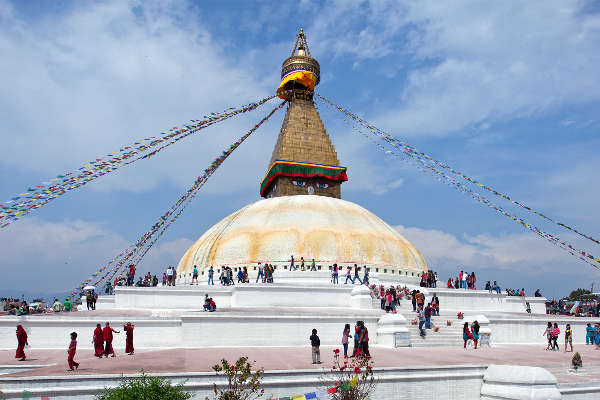
The Kanchenjunga Base Camp Trek provides unsurpassed views of snow-capped mountains. The forests of rhododendrons are also enchanting and there is much wildlife to be seen. The area is one of 200 recognised by the World Wildlife Fund as a global ecoregion – one of the Earth’s most biologically outstanding habitats. A quarter of Nepal’s red pandas live in this region.
On this page, you will find a comprehensive and impartial guide to the Kanchenjunga Base Camp trek.
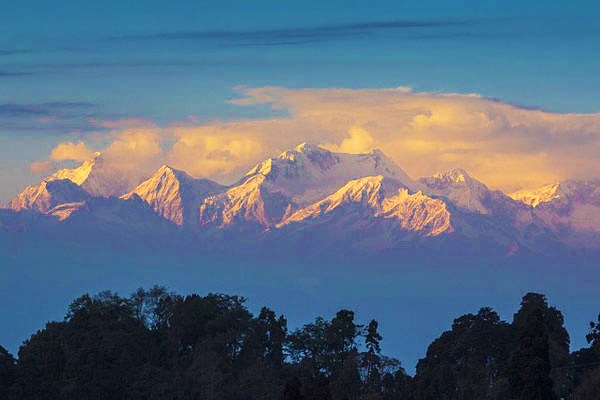
Kanchenjunga Base Camp Hike
Kanchenjunga, meaning “five great treasure houses of the snow,” is the third-highest mountain in the world and the second highest in Nepal. Until 1856, it was believed to be the highest of all.
The Kanchenjunga hike is one of the longest treks in Nepal , taking from 23 to 29 days. It is possible to make this a tea house trek, as the government has encouraged the building of infrastructure around not just Kanchenjunga but all of the Himalayas . However, in Lhonak, Kambachen and Kanchenjunga Base Camp, lodges only open when there are more trekkers.
The avalanches that can erupt on Kanchenjunga are widely believed to be the largest found anywhere in the world.
Kanchenjunga Regional Map
Kanchenjunga, one of the least-populated regions of Nepal, is on the country’s eastern border, next to India.
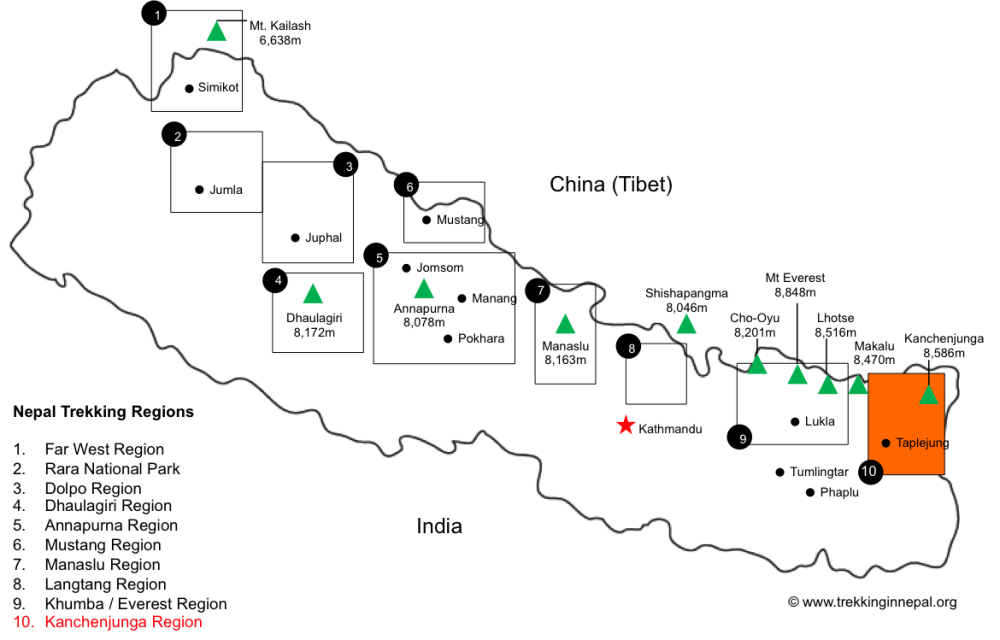
Recommended Kanchenjunga Map
We recommend the following map - A Trekking Guide to Kanchenjunga (Himalayan Travel Guides .
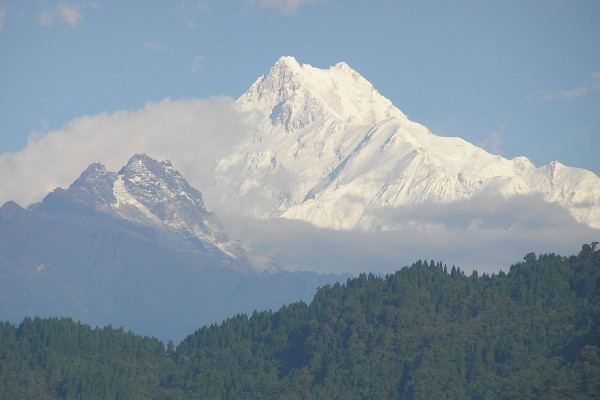
Kanchenjunga Base Camp Trek Itinerary
Below is a detailed Kanchenjunga Base Camp Trek itinerary.
Please note that there are several Kanchenjunga trek itineraries that can be done. Below, we have laid out the most popular version – 28 days, leaving from Kathmandu.
You will arrive at Kathmandu’s Tribhuvan International Airport and transfer to a hotel. Kathmandu is brimming with attractions. A major one is Boudhanath Stupa , one of the largest Buddhist shrines in the world. Another is Pashupatinath, the country’s most famous Hindu temple, where you can see sadhus (holy men) meditating, pilgrims bathing and sometimes funeral pyres ablaze. Another site is Bhaktapur Durbar Square, a medley of pagoda and shikhara-style temples surrounding a 55-window palace constructed of brick and wood.
I recommend checking out my article on the best things to do in Nepal , which includes lots of attractions in Kathmandu.
You will take an afternoon flight to Biratnagar which lasts for 40 minutes.
Another flight, this time lasting 30 minutes, transports you to Suketar Airport in Taplejung. In the afternoon, I recommend you get some exercise: an easy walk of two or three hours can be had along the ridgeline to the grazing area of Lali Kharka. You will most likely be camping from now until you return to Kathmandu.
You will traverse the hillside for a short distance and then descend to the village of Pakora on the Phawa Khola. You will cross a suspension bridge prior to a steep climb that heads for Kunjuri. After lunch, the campsite at Khesawa is not far. Here, you are presented with your first views of Kanchenjunga. The south and main summits and Kangchenjunga West, otherwise known as Yalung Kang, ought to be visible.
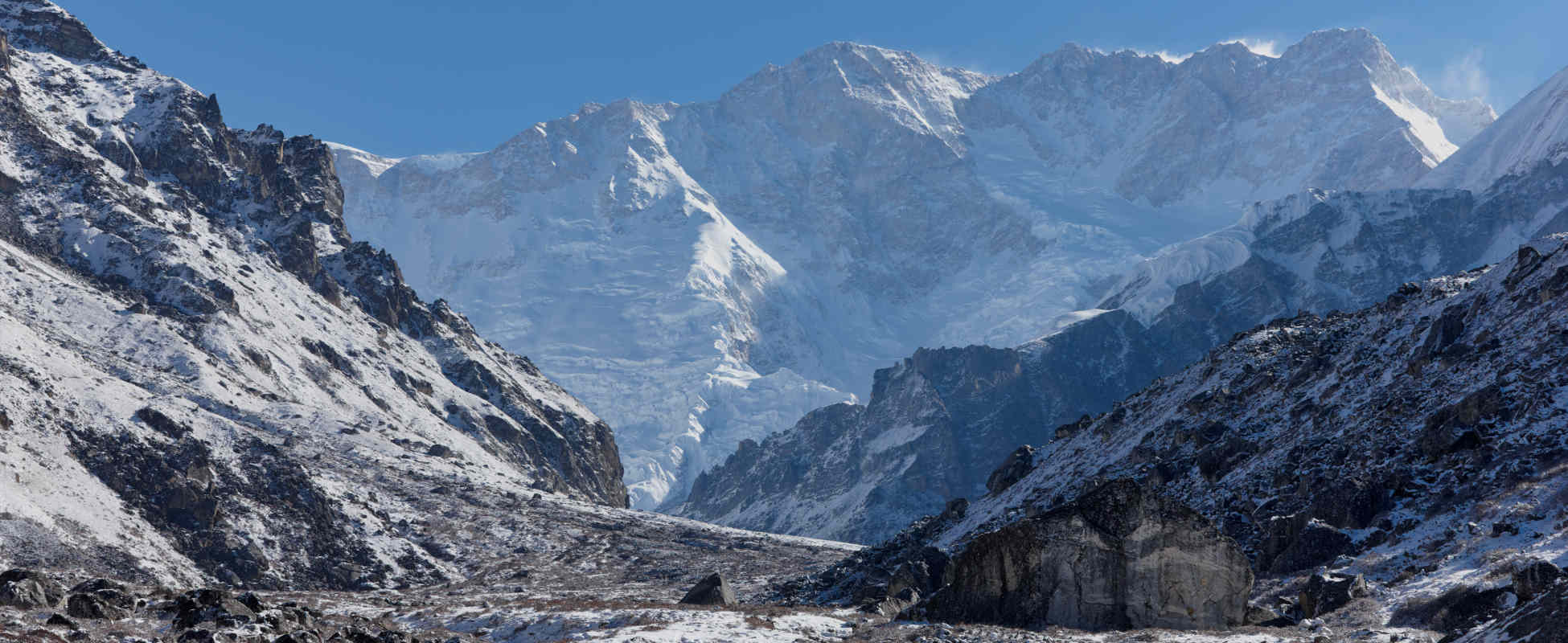
Today, you will cross steep hillside far above the Kabbeli Khola. There are ups and downs but no shortage of shady places to rest. Following lunch, you will pass the village of Anpan prior to descending to cross the Kashawa Khola. Then it is time to climb once more, through terraced fields to the village of Mamankhe.
Day 7
Walking begins with a gentle climb on a track above the Kabeli Khola. The path undulates as it passes ridges. After that, the ground is mostly flat. Eventually, the river becomes level with the trail, after which there are a few hours before Yamphudin is reached. This is the last village you will see before Ghunsa. This charming place is found below the ridge at Deurali Danda, which you will cross, and then the tent comes out.
Leaving Yamphudin, you will find yourself on a trail that ascends a steep spur, a sight to which you will grow accustomed. You will trek through pleasing forest. Lunch is in a meadow with a grand view to the north and south. A sharp drop to a river brings you to an interesting bridge over the Omje Khola and then your campsite at Chitre.
Your day begins with three hours ascending steeply to the crest of Deurali Danda, mostly through dense forest. You will arrive at a pass from which you can see Jannu. You will descend across steep and exposed areas and then go back into the beautiful forest. The path goes down the the valley of the Simjua Khola. You cross a very interesting-looking wooden bridge to reach Tortongn, where numerous rock shelters provide places to camp.
You will follow the river through more beauteous forest, with conifers giving way to rhododendrons. The valley climbs steeply and as the day progresses, trees become increasingly stunted and scattered. In the distance, you can see snow-capped giants. Just before you get to Tseram, the mammoth heights of Kabru and Rhong peaks come into sight. Tseram, where you stay, is a grazing area. The temperature at night is a reminder that you are really gaining height.
In the run-up to Ramche, the scenery is marvellous. You will pass the snout of Yalung Glacier, where there is a series of ablation valleys which make for easy walking. The highlights of this stroll are clear streams, a frozen lake and views of Kabru, Koktang and Rathong.
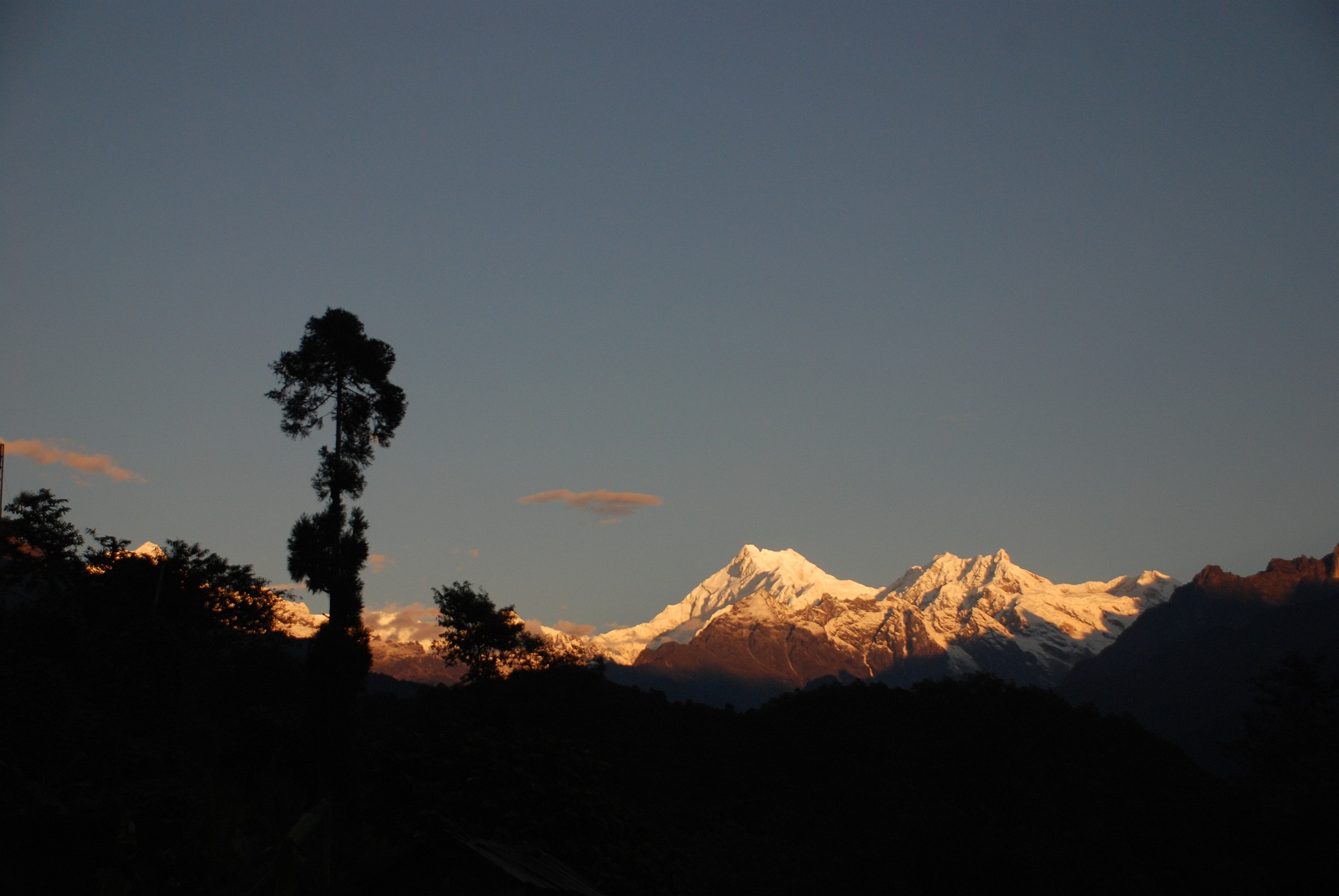
Kanchenjunga is clearly visible and stunning. You cross the Yalung Ri glacier. At Oktang, you will be on a massive ridge that forms a cirque – a steep-walled, bowl-shaped mountain basin – that is more than nine miles long and always more than 25,000 feet. Kanchenjunga’s three main summits can be observed – a breathtaking mountain panorama.
You will remain at a high altitude. Determination is called for. Crossing high passes is only possible in good weather – and with good logistics. Your abode for the night will be at Yalung Ri Base Camp.
Traversing the Yalung Glacier, the walking is good.
You will trek down a valley, then come to a pass that is rough and dangerous. After what begins as a steep climb with a number of false summits, you will reach Mirgin La. On the horizon are Everest, Jannu, Chamalung, Gyakung Kung, Lhotse and Makalu. To the south is the Terrai, a belt of marshy grasslands, savannahs, and forests that is a most worthwhile sight.
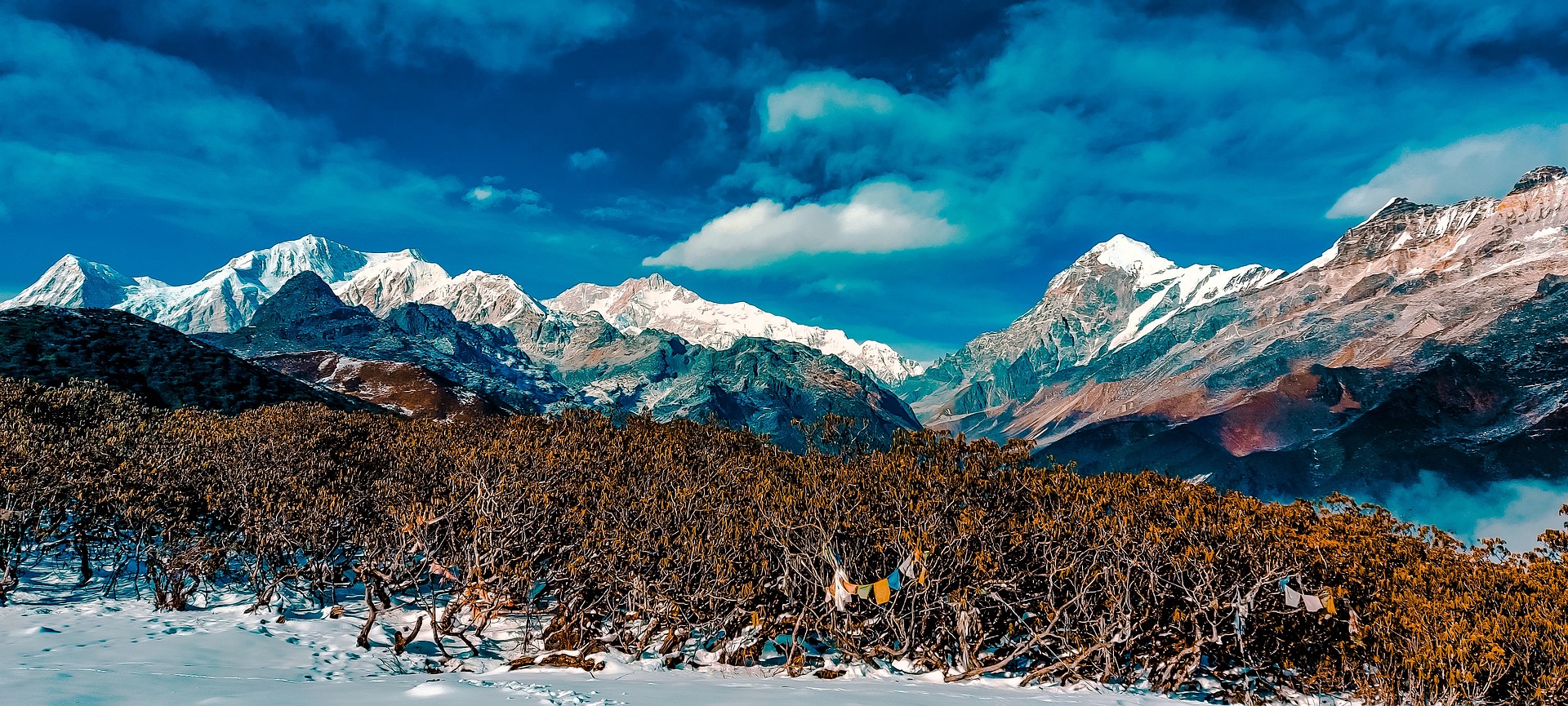
Now, you will face four more passes, although there is little by way of descent between them. After lunch, you will descend to Lamba Sumba Kharka, replete with more views of the impassive southwestern face of Jannu. From here, the going is easy, and you will follow a pleasant, forested trail that brings you to Ghumsa, a picturesque village where prayer flags flutter from wooden houses and there are two monasteries. This is a most welcome sight after so many days in the wilderness.
A local speciality is tongba, an unusual alcoholic drink: boiling water is poured into a jug or large bamboo cup filled with fermented millet seed. It is drunk through a special straw. After walking for between four and six hours, you may wish to partake of this.
South of Ghunsa Khola, the trail ascends. You will cross flood plains and emerge onto a pasture north of the river. There is a steep climb, and you will then cross a slide before descending to Lakepo. There is a short climb that puts you in the village of Kambachen.
This day is devoted to acclimatisation. A day hike will take you to Jannu Base Camp. A shorter hike will allow you to explore the vicinity of Kambachen. Or you could catch up on your laundry. Or even read a book, so long as you brought a good one.
A gentle climb through rocky fields puts you in Ramtang. You will cross northwest of the Kanchenjunga glacier to reach Lhorak, which is situated on a sandy plain close to a dry lakebed. There are beautiful mountain views in every direction. Water is scarce in Lhorak, so you should be abstemious. You will camp between boulders to protect yourself from the wind.
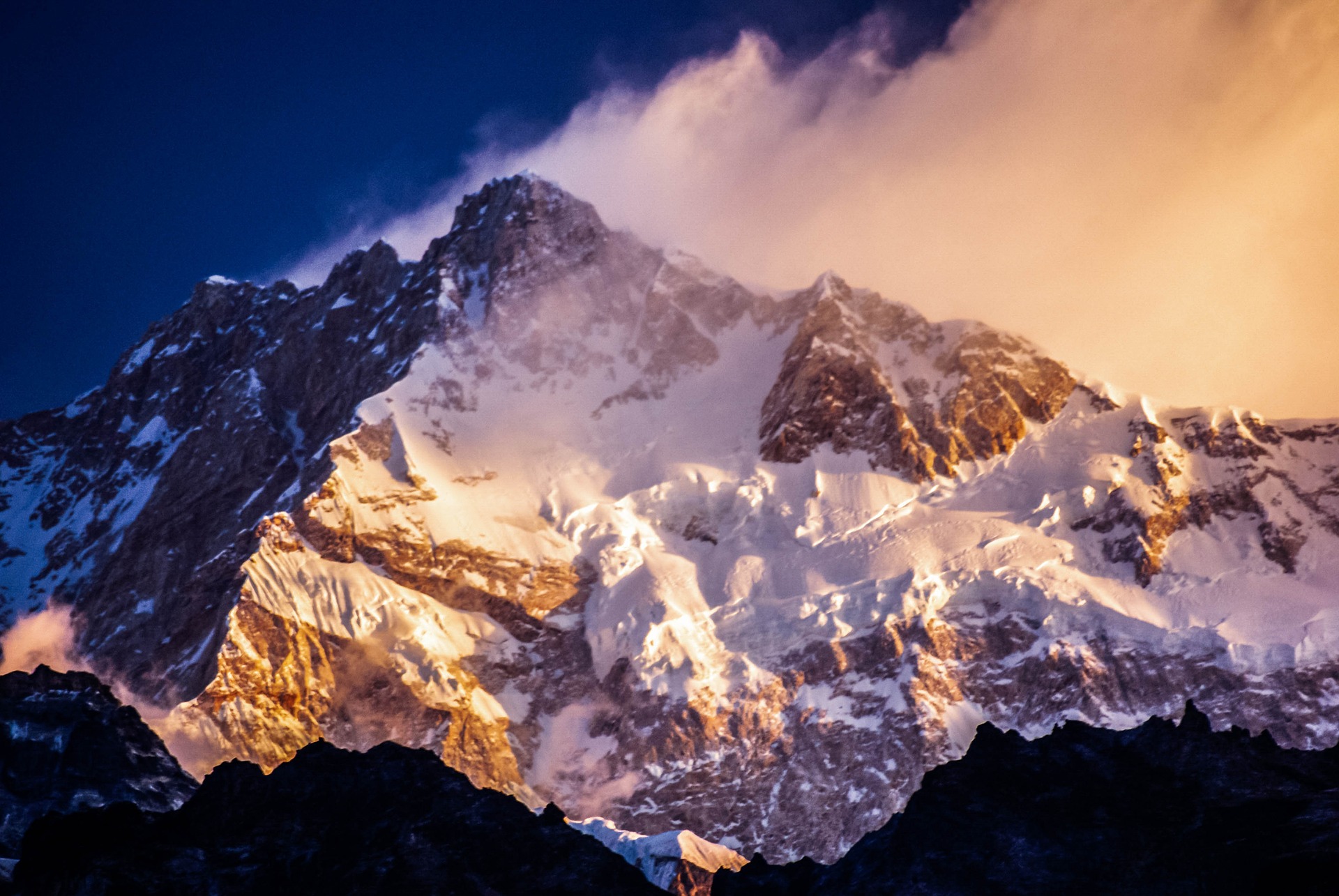
From Lhorak, the path ascends slowly through a plain but later becomes steeper. This will get you to Pang Pema, the base camp for Kanchenjunga, which is 16,900 feet up. Since Biratnagar was only 266 feet high, you will have come a long way. Here, you will get the best view of the peak of Kanchenjunga.
You will hike a few hundred feet up a ridge to the north of Pang Perma. This is a wonderful vantage point where Kanchenjunga, Tent Peak, the Twins and Wedge Peak stand before you. You will then descend to Kambachen.
You will descend once more, this time through magnificent forest. You will pass Ghunsa and, an hour later, Phole, a village split into two sections, one of which is for Tibetan refugees. After that is Yangswa, where you will camp for the night.
Today sees more lovely forest which soon turns into steep, grassy hillside. It is there that you will find Amjilosa.
Now, you will have a short climb and then a radical descent, which consumes most of the day. Camp will be at the junction between the Tamur and Ghunsa Kholas.
You will cross the Simbu Khola, which stems from Kanchenjunga’s southern base camp. It is pleasantly warm at such a low altitude – only 4,000 feet. Cardamom grows freely in this moist and shaded forest. You will cross a goodly number of small tributary streams to reach Chhirwa, a village surrounded by large boulders. Camp will be in a field before the village.
You will encounter minor valleys and picturesque villages before reaching Suketar Airport late in the afternoon.
Flying from Taplejung , you will have a final glimpse of the mountains with which you are now rather more familiar.
You will return to Kathmandu.
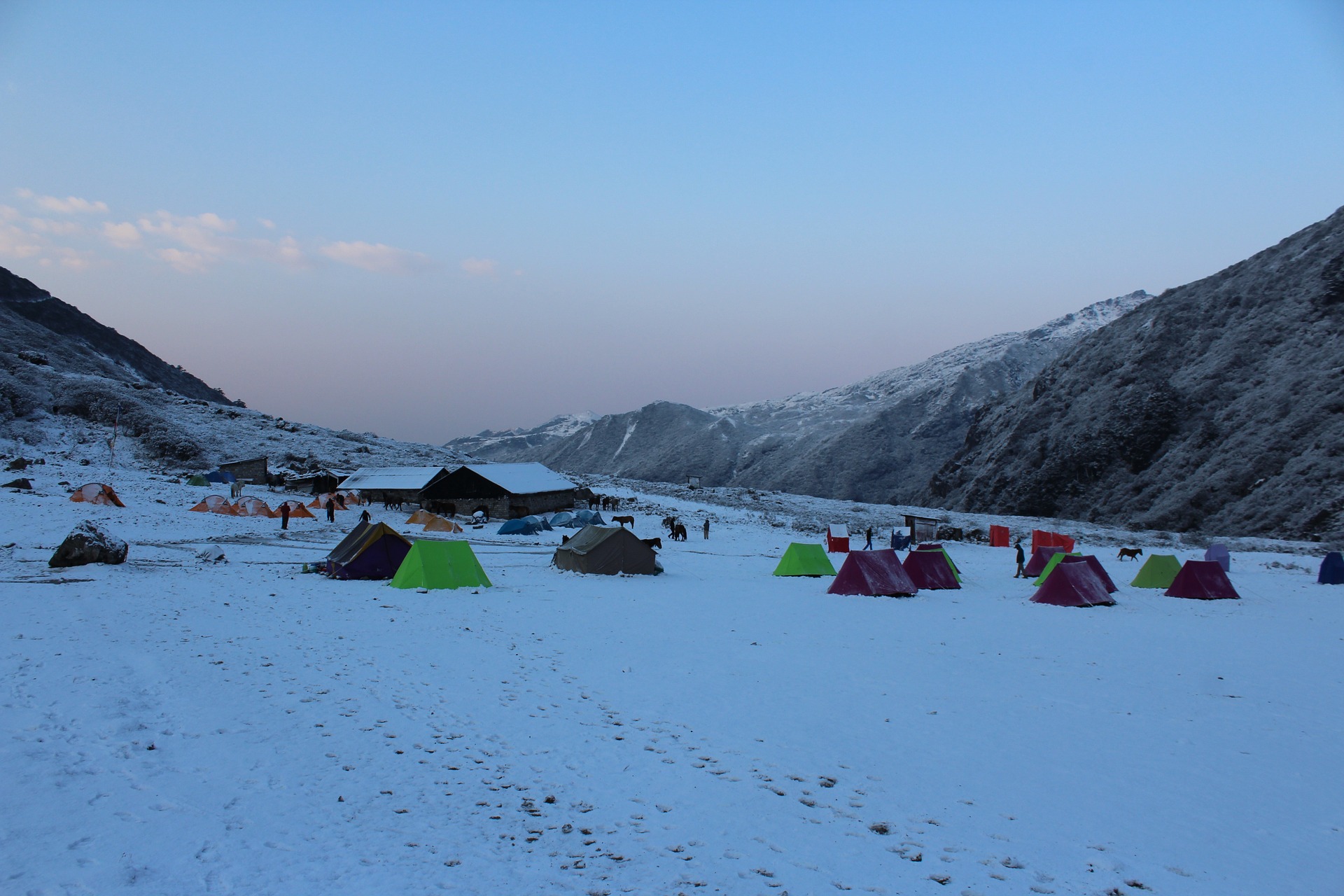
Kanchenjunga Base Camp Hike FAQ
How much does the kanchenjunga base camp trek cost.
Costs for the Kanchenjunga Base Camp trek tend to be above $5,000, but there are some Nepal trekking companies who will run the trek for as little as $3,000.
Are permits required for the Kanchenjunga Base Camp trek?
Yes, a permit is required for the Kanchenjunga Base Camp Trek (a restricted trekking region) which costs $10 per person per week. This obviates the need for a Trekkers Information Management System card. There must be at least two trekkers in your party and a registered guide who will cost roughly $35 a day. You also must pay for entrance to the Kanchenjunga National Park which costs about $20.
When is the best time to trek Kanchenjunga?
The best time to trek Kanchenjunga are autumn and spring. Fall/Autumn is from September to November and is the best time for Nepal Trekking in general, while spring is from March to May.
Is altitude sickness a risk on the Kanchenjunga Base Camp hike?
Yes, there is some risk of altitude sickness on the Kanchenjunga Base Camp trek because it ascends to some high altitude points. At its highest point, Pangpema, you will reach an altitude of 5,030 meters (16,500 feet). There are steep sections on this trek where you will ascend very rapidly. It is important to have a clear understanding of the risks associated with high altitude trekking and how the body acclimatises to high altitudes .
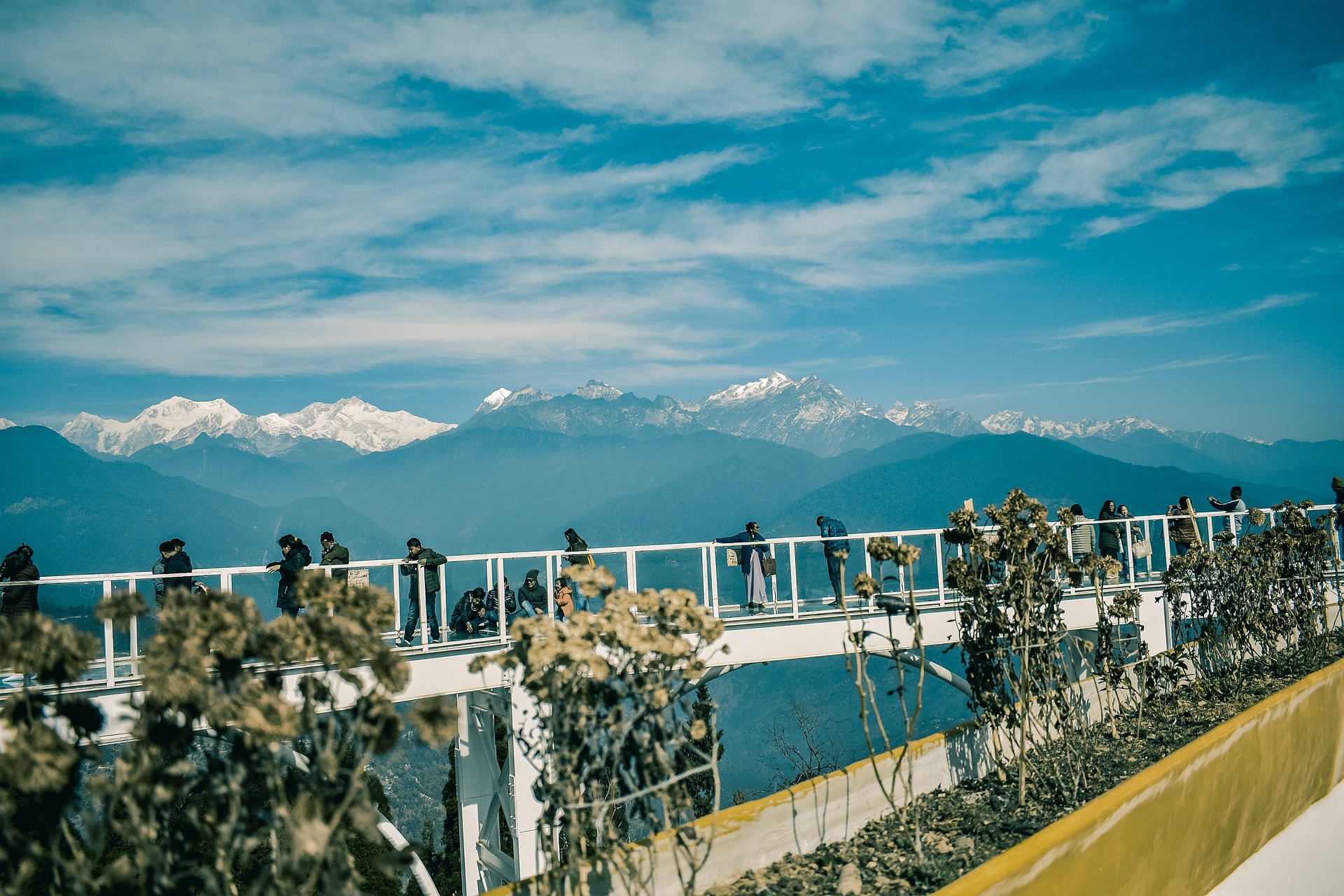
How difficult is the hike to Kanchenjunga Base Camp?
The Kanchenjunga Base Camp Trek is challenging. It is one of the longest treks in Nepal and requires constant hiking for over 3 weeks. You will need a good level of fitness and determination. There are some very steep sections and high-altitude points along the route that also make the trek a strenuous one.
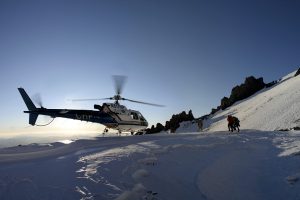
Do I need insurance for the Kanchenjunga Base Camp Trek?
I recommend you get insurance coverage for the Kanchenjunga Base Camp hike. If an accident or incident should occur that requires immediate medical assistance and evacuation, you will most definitely want hiking insurance that can cover the costs of air ambulance and treatment.
Make sure you have trekking insurance for Nepal that covers you for any travel related risks, like lost, stolen, damaged or delayed baggage, interruptions and flight delays and tour operators' default.
Are there any recommended guidebooks for Kanchenjunga?
Yes, there are a few Kanchenjunga guidebooks that we highly recommend.
In terms of guidebooks, we recommend A Trekking Guide to the Nepal Himalaya: Everest, Annapurna, Langtang, Ganesh, Manaslu & Tsum, Rolwaling, Dolpo, Kangchenjunga, Makalu, West Nepal by Sian Pritchard-Jones, Bob Gibbons and the Himalayan Map House.
There are dozens of books about the Kanchenjunga region as well. For instance, there's Living on the Edge: The Winter Ascent of Kanchenjunga by Cherie Bremer-Kamp. Kanchenjunga gets a mention in Do What Thou Wilt: A Life of Aleister Crowley by Lawrence Sutin. In his novel, A Movable Feast , Hemingway described Crowley, an occultist, as the most evil man in the world; to be mentioned in a book about him is deeply flattering - not that a mountain will feel it.
See our recommended library of Nepal books and guidebooks for more options.
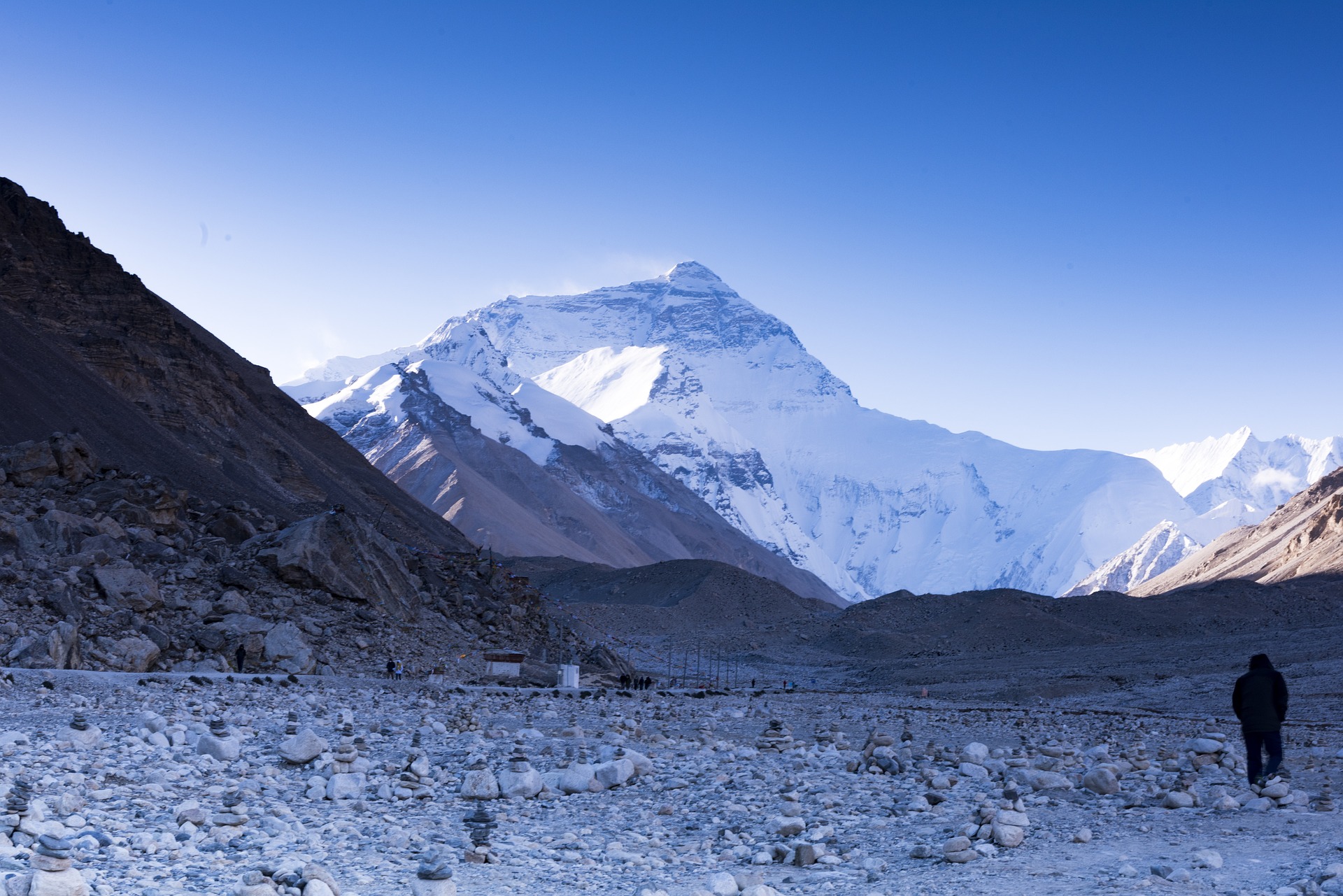
Are there are other Nepal trekking routes?
If the Kanchenjunga Base Camp Trek isn't your cup of tea, you can always try your hand at the Everest Base Camp hike , the Langtang Valley hike or the Manaslu Circuit hike . These treks are considered some of the best hikes in Nepal .
Continue browsing
See more information on Nepal . Or check out these other Nepal hiking articles:
- Short Treks in Nepal
- Easy Hikes in Nepal
- Food and Water on Everest Treks
- Royal Trail
- Kala Patthar Trekking Guide
- Rara Lake Hike
- Annapurna Circuit Trail
- Island Peak Climb
- Mera Peak Climb
- Manaslu Circuit Hike
- Helambu Trail
- Mustang Circuit Trek
- Gokyo Lakes Trekking Guide
- Makalu Base Camp Trek
- Gosainkunda Trail
- Limi Valley Hike
About the author
Mark Whitman
Mark has trekked extensively in Asia, Europe, South America and Africa. He founded Mountain IQ in 2014 with the sole aim to be the best online information portal to some of the most popular mountain destinations around the world. When not writing for Mountain IQ, Mark is out exploring the outdoors with his wife!
Leave a Reply
Your email address will not be published. Required fields are marked
We work with local guides to offer great value adventures at unbeatable prices
- Everest Region Trek
- Annapurna Region Trek
- Langtang Region Trek
- Pilgrimage Treks Tours
- New Trekking Routes
- Camping Trekking Routes
- Mount Everest Expedition
- Amadablam Expedition - 6812 M
- Manaslu Expedition - 8163m
- Mt- Saribung Expedition - 6346 M
- Mera Peak Climbing - 6470m
- Island Peak Climbing - EBC
- Lobuje Peak Climbing- 6,119 M
- Larkya Peak Climbing- 6,219 M
- Pisang Peak Climbing - 6,091 M
- Kusum Kangaru Climbing - 6,369 M
- Kwangde Re Climbing - 6011m
- Chulu West Peak Climbing - 6,419M
- Ramdung Peak Climbing - 5925m
- Pokhalde Peak Climbing - 5806 M
- Everest Base Camp Helicopter Tour
- Gosaikunda Helicopter Tour
- Mardi Himal Helicopter Tour
- Buddhist Pilgrimage Tour
- Namobuddha Tour
- Chitwan National Park
- Koshi Tappu Wildlife Reserve
- Bardia National Park
- Mountain Biking
- Bunjee Jumping in Nepal
- Paragliding in Nepal
- Volunteer in Village School
- Village Homestay Tours
- Kathmandu Lhasa Overland Tour
- Kathmandu - Mt. Kailash Tour
- Follow Us On
- 9779851014405
Kanchenjunga Base Camp Trek Guide 2023 - Cost, Map, Itinerary
25th march 2022.

Planning for Kanchenjunga Base Camp Trek in Nepal - Know about Kanchenjunga Base Camp Trek Guide 2023 - Cost, Map, Itinerary, Permit Kanchenjunga , the third-highest peak in the world at 8,586m, is an exciting option for anyone wanting to trek a route that remains relatively undiscovered. The number of trekkers allowed on the route has long been restricted by the government to preserve the natural beauty and diverse flora and fauna. There is more than one way to do the trek with long and short options, as well as arduous or simple routes and we can cater to whichever our client desires. The advertised 19-day trek is on the long and more adventurous side and we visit both the northern and southern base camps over the high pass at Sele Le.
To trek, this route special permits must be obtained through a registered company and all trekkers must be accompanied by a local guide and porter Peace Nepal Treks are here to ensure all those needs are taken care of. How do I prepare for the Kanchenjunga Base Camp Trek ? We have designed this 19-day itinerary for someone with a good level of fitness who can walk 7-9 hours daily. Due to the remote nature of the trek and lack of access to medical facilities, we advise those interested to train by carrying backpacks or around 8kgs on long walks while cycling and swimming will also help prepare. Our trek is designed to include a few days for acclimatization to the altitude and we suggest everyone walks slowly, drinks 2 liters of water each day, and eats plenty to maintain their health.
Kanchenjunga Base Camp Trek cost
Due to the restricted nature of the trek, the cost may be higher than more well-trodden routes. Listed below is everything included; there is more on the lodge and meal quality below. 01, Local guide: Daily wages and his insurance/meals and trekking equipment 02, Local porter: Daily wages and his insurance/meals and trekking equipment 03, Flight ticket: Kathmandu to Bhadrapur guest (return) 04, Flight ticket: Kathmandu to Bhadrapur local guide and porter (return) 05, Transportation: Bhadrapur to Taplejung by local jeep 06, Accommodation: Lodge accommodation 07, Special permit fees: Restricted permit fees for 2 weeks 08, Conservation fees: Kanchenjunga conservation area entry fees 09, TIMS CARD fees: Trekking Management System fees 10, Transportation: Taplejung to Bhadrapur by local jeep Note: During the trek, meals are paid for locally by the client. Your guide will help with understanding menus if needed. We advise a budget of around USD $30 each day per person to cover 3 daily meals. In total, the cost will be around USD 1475 to 1775 per person.
Best time for Kanchenjunga Base Camp Trek
The weather will play a huge role in the enjoyment of your trek, so it is important to choose the best time. Of course, the weather in the mountains can be unpredictable and over a long trek like this one, clients should always be prepared for some inclement weather conditions. In general spring (March/April & May) and autumn (September to early December) offer the best conditions and most moderate temperatures. However, it is likely to be cool at night. We strongly advise avoiding the monsoon season for this trek as the trekking trail will be slippery meaning a high risk of accidents and roadblocks. It is not possible to trek this route in winter due to the heavy snowfall.
Kanchenjunga Base Camp Trek permit
Kanchenjunga Trek is one of the restricted remote trekking areas of Nepal. A person who is planning to go trekking with a local guide and porter through the local trekking agencies, needs the special permit fees, Kanchenjunga Conservation entry fees, and the TIMS CARD from the Nepal government.
Here is the cost of Kanchenjunga permit fees
01, Kanchenjunga special permit fees are USD 10 for a week 02, Kanchenjunga conservation entry fees are USD $30 per person 03, TIMS CARD (Trekking Information Management System) is USD $10 per person
Accommodation and meals
This trek involves lodge accommodation however one should not expect the same quality of lodge that you may have experienced on other treks in Nepal such as Annapurna or Everest. Here the lodges will be basic with simple bathrooms. The meals are Nepali rice Dhal Bhat/vegetables/noodles/thukpa/Tibetan bread etc. We recommend using boiled water or water purifying tablets during the trek and advise against using bottled water and plastic utensils.
We always suggest carrying your own first aid kits and any medicine from your home country because the trek is remote with limited access to medical facilities. Our guides are trained in mountain first aid and will carry a basic first aid kit for emergencies.
What to bring and pack for this Trek?
Before traveling anywhere, you should check the necessary items and be fully prepared. Clothing items, accessories, toiletries & medicines should all be on your packing list. If you are happy to buy clothing/trekking gear in Nepal then it will likely be cheaper, but it may not be as reliable. Renting equipment is also possible if you wish.
Kanchenjunga Base Camp Trek Start and Ending
There are a few different ways to travel to Kanchenjunga Trek. Our Itinerary starts in Kathmandu and we take a plane to Bhadrapur before a jeep ride to Taplung where our walking both starts and ends. We then take the same route back, although there is also an option to drive the full route from Taplejung to Kathmandu, which is a full day.
Travel Document and Cash
Please ensure your passport has at least 6 months to run and that a valid visa is obtained before departure. We also advise that you carry a few passport-size pictures, a copy of your passport and travel insurance (which should cover emergency helicopter evacuation), and enough cash for your meals (about USD $500 to 600 per person for 19 days).
Challenges of Kanchenjunga base camp trek
As stated, the Kanchenjunga base camp i s a challenging adventure because of its diverse landscapes, long walking days, high-altitude passes, and unpredictable weather. Combine that with the basic meals and accommodation and this becomes a trek unsuitable for someone without some previous trekking experience. As such we do not recommend this trek for first-time trekkers. Due to the restricted nature of the area, it is also not possible to take on this trek as a solo traveler.
Table of Contents
Recent from blogs.

11th Jan, 2022

30th Jul, 2013

23rd Mar, 2016

2nd Jul, 2013

10th May, 2016

13th Jan, 2022

2nd May, 2016

23rd Feb, 2017

19th Jun, 2013

11th Aug, 2015

10th Jan, 2022

23rd Oct, 2022

18th Nov, 2022

21st Nov, 2022

22nd Nov, 2022

23rd Nov, 2022

25th Nov, 2022

28th Nov, 2022

29th Nov, 2022

3rd Dec, 2022

7th Dec, 2022

8th Dec, 2022

16th Dec, 2022

30th Dec, 2022

5th Jan, 2023
6th Jan, 2023

10th Jan, 2023

8th May, 2023

12th May, 2023

14th May, 2023

6th Jul, 2023

18th Oct, 2023

1st Feb, 2024

7th Feb, 2024

13th Feb, 2024

26th Feb, 2024

10th Apr, 2024
Our representatives, adrian mula.
- Mobile: +61-414527610
- Email: [email protected] Lisa Shuck Email: [email protected]
Robert and Arnica Reurekas
- Boterstraat 60, 3111 ND Schiedam
- [email protected] Paul Hogenbirk Email: [email protected] Remy Van Meel Email: [email protected]
Patrick Keulens Helmond
- Phone: 0031-613639901
- Email: [email protected]
Richard Kirtley
- Phone: +44 (0) 7891 072 550
- Email: [email protected] Alan Curr Email: [email protected]
Chang Jong Kwon
- Phone and whatsApp: 6013-8086065
- Email: [email protected]
Lim Tianshun
- Email: [email protected]
Switzerland
Mark eversham.
- Phone: 0041 78 608 1713
We Are Associated
Find & follow us on.
© 2011 - 2024 All rights reserved. Peace Nepal Treks.
We use cookies to improve user experience and analyze website traffic. By clicking Accept Cookies you agree to our website's Privacy and Cookies Policy.

- Mount Kilimanjaro
- Mount Kenya
- Mount Toubkal
- Mount Aconcagua
- Mount Everest
- Mera Peak and Island Peak
- Mount Kinabalu
- Himalayan Mountains
- Borneo treks
- Nepal treks
- Moroccan Atlas treks
- Treks in East Africa
- Trek in Europe
- Wildlife Safaris
- School Expeditions
- Family Holidays
- Medical Electives
- Private Expeditions
- Indonesia and Papua
- Experiences
- Trip Finder
- Trip Leaders
- Sustainable Tourism
- Adventure blog
- Add a review
- Trip reviews
Ask Us A Question...

Kanchenjunga Base Camp Trek
- Kanchenjunga base camp trek
Dates & Bookings
Our Kanchenjunga base camp trek is a superb 26 day holiday in the east of Nepal, with 21 days of actual trekking covering 220 km in an area which is far less visited by tourists and includes a wide range of wonderful scenery from lush, tropical jungle through to rhododendron, chestnut and oak forests and high onto the glaciated base camp of the third highest peak in the world.
Visitors numbers to this trekking area are restricted, so to trek in Kanchenjunga, you need a local guide and at least 2 trekkers fulfil and gain the necessary permits.
This trek visits both base camps on the north and south side of the mountain and is generally run for small groups of people looking for custom dates; we provide experienced advice and preparation for the trek and a high level of professionalism and care on trek with excellent staff.
The route to Kanchenjunga Base Camp passes through the Arun valley which is considered one of the most beautiful regions for trekking in Nepal, and one of the highlights is the Kanchenjunga Conservation area which covers an area of 2035 square kilometres.
The video shows the route on google map visiting north base camp first and then to the south side.
Have a look at these two videos of some trekkers who first went to the North base camp and then the South base camp . They both show the level of trekking, the habitats passed through and the trails very well.
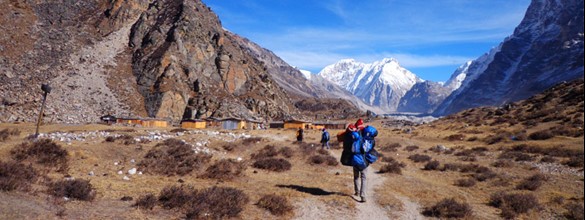
SUMMARY OF KANCHENJUNGA BASE CAMP TREK ITINERARY
The trek begins at Taplejung which is a 45 minute flight from Kathmandu to Bhadrapur, followed by a jeep to Birtamod and then to Taplejung. The broad itinerary for the whole trek is below, and we visit the north base camp first. Days 1 - 3: Arrival in Kathmandu, rest, then fly to Biratnagar and drive to trek start Days 4 - 24: Trek up to Kangchenjunga base camps Days 25 & 26: Travel back to Kathmandu, spare day and depart for home
This walk around Mount Kanchenjunga visits both the North and South Base Camps. The route begins by approaching the North side of Kanchenjunga where you will have great views of Tent Peak, Nepal Peak, Cross Peak before the bulk of Kanchenjunga itself becomes visible.
From Pangpema on the north side the trek returns to Ghunsa and then crosses Mirgin La pass over to the south side of Kanchenjunga. Once over this pass, you follow the route through Ramche and Oktang where there are impressive views of the South West face of Kanchenjunga.
KANCHENJUNGA BASE CAMP TREK MAP
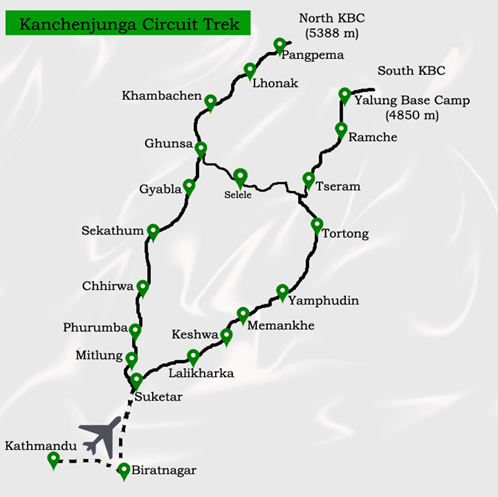
LENGTH AND TERRAIN OF THE KANCHENJUNGA BASE CAMP TREK
The Kanchenjunga trek is long (220 km) and quite strenuous, requiring a good level of fitness needed for three weeks of sustained walking with a light backpack. The terrain is often rough with rocky paths and some long hills and there are a few areas around the base camps where it might be necessary to use short ropes to aid moving across rocky terrain. These are for safety and assisting people over short rocky sections. However there are no climbing skills needed for the trek.
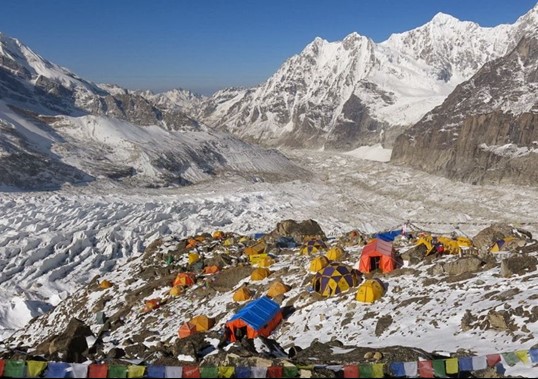
The mountain tracks are easy to follow; early on they follow the rivers and valleys and then ascend abruptly over ridges and shoulders, which means steep sets of rough steps and zig zags uphill.
It is a remote area with little access to medical help, so being fit and having good boots and being used to hiking many days carrying a pack is an important requirement. Training at home with pack on by going on long walks is a good start, plus some leg exercise in the gym and swimming for cardiovascular fitness. Since this is a long trek, do get a health and dental check before going.
When approaching Base Camp, the exposure to altitude makes the walking harder and the likelihood of altitude sickness higher, so it's necessary to allow rest days and walk slowly. The trek will have a wide range of temperatures depending on the altitude and the time of day. In the mountains between 1,000m and 3,500m, the nights will be cool, normally around 5ºc, and during the day temperatures sometimes rise to 25ºc. At higher altitudes temperatures range from about 15ºc to -20ºC at night so it will be important to have a good selection of clothing to provide layers and protection against the cold and the sun.
KANCHENJUNGA BASE CAMP TREK ALTITUDE PROFILE
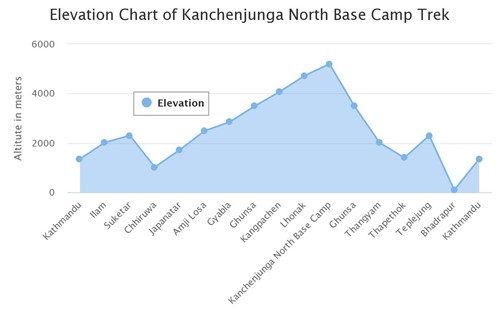
ACCOMMODATION ON THE KANCHENJUNGA BASE CAMP TREK
Accommodation is in lodges which offer western and Nepalese food and sometimes camping when our staff will cater for you. At places on this trek the lodges will be more rudimentary than in the Khumbu region and more likely to offer only Nepali food, which means lots of rice and dal bhat. We recommend using boiled water on the trek or using good quality water purifiers, and we do not recommend buying bottled water in plastic containers.
The itinerary is designed to allow for optimal acclimatisation to the altitude gain, and we do carry drugs like Diamox and Dexamethasone for managing high altitude sickness. Our staff are also trained in mountain first aid. The best advice is to go slowly, eat well, drink well and sleep well. There are no vaccinations needed for visiting the Kanchenjunga region.
PACKING LIST FOR THE KANCHENJUNGA BASE CAMP TREK?
The basic idea of the kit is to keep you warm, dry, protected from the sun, able to move efficiently on the mountains and able to be comfortable in the evenings and night. Your daypack should weigh around 8 - 10 kgs and your main duffle bag should weigh around 15kgs.
Generally speaking a good pair of trekking boots, thermal wear, fleece jacket, down jacket, light weight wind cheater, trekking trousers and shorts, long sleeved and short sleeved T-shirts, duffle bag and day sack, gloves, enough pair of socks, sunglasses, headlight, woollen beanie caps, water bottles, personal toiletries, gadgets and books.You can split your requirements into sections:
- BAGS - Duffle bag ~80L (for a porter) + Medium Daypack ~40L (carried by you)
- SHELL - Top and bottoms to keep dry from wind/rain/snow
- INSULATION - Warm layered system of fleeces, trousers, tops and gloves and hats for sun and cold
- BASE LAYER - Thin layers to wick away sweat and wear on very cold mornings or evenings
- FEET - good quality waterproof ankle high boots and camp/lodge shoes
- SLEEPING - Warm 3 to 4 season sleeping bag and a full length sleeping mat
- DRINKING - Water bottles and purifiers
- WASHING & MEDICAL - wash kit and personal first aid and items for personal hygiene
We recommend reviewing our Nepal Trekking Kit List Guide so you know what you'll need for this journey
FREQUENTLY ASKED QUESTIONS (FAQS) FOR THE KANCHENJUNGA BASE CAMP TREK
What is the flora and fauna like on the kanchenjunga base camp trek.
The trek starts from the subtropical region of Taplejung, through beautiful temperate forests of maple, chestnut and birch trees. Even though farming is less productive in the hilly regions, you can still see terraced fields around these lower regions.
Around Chitre you enter the upper temperate climatic vegetation of rhododendron, pine, firs, and orchids. Above here and across the Sele La (pass) towards Ghunsa begins the more subalpine and alpine climatic zone with shallow and dwarf shrubs and open meadows. Base Camp at 5143m is at the snowline with a rocky and icy landscape.
Snow Leopard, Himalayan Asian black bear and red pandas have been seen in this region although they are obviously shy and difficult to spot. Blood pheasant (below) and the Chestnut-breasted partridge are common bird species.
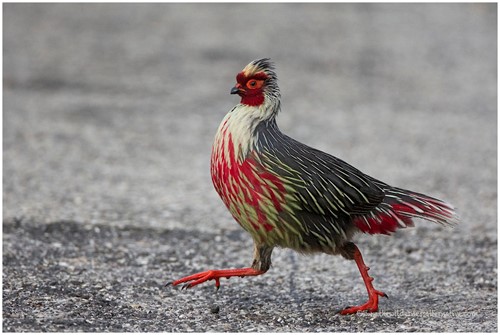
WHAT ETHNIC GROUPS WILL YOU MEET ON THE KANCHENJUNGA BASE CAMP TREK?
This trek explores Nepal’s border with Sikkim and Tibet. The lower region has a mixed community following Hinduism dominated by ethnic group Limbu (below) and the Rai people who follow animist beliefs. The upper region has a distinct community of Bhote and Sherpa people who follow Buddhism.
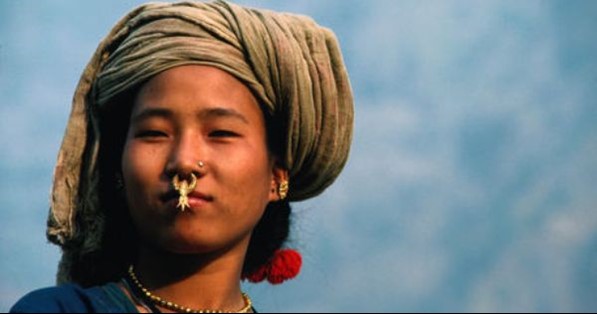
WHERE IS KANCHENJUNGA?
The third highest mountain in the world is in the Great Himalaya Range on the border between Sikkim state, northeastern India, and eastern Nepal, and 46 miles (74 km) north-northwest of Darjeeling.
WHEN IS THE BEST TIME TO TREK TO KANCHENJUNGA?
You can trek the Kanchenjunga Circuit in April, May and early June, and during October and November to early December. During these trekking seasons expect generally stable weather, clear skies, warm days and cool nights. The Kanchenjunga trek is quiet, you will meet other people on the trails and in the lodges but far fewer than in the central region.
WHAT IS THE HISTORY OF THE KANCHENJUNGA REGION?
Spectacular views of the Kanchenjunga range from the summer retreat town of Darjeeling (in India) first raised the curiosity of early British explorers. Then, due to a porous border, easy access to eastern Nepal from bordering Sikkim made adventures to the area possible as early as 1848 (whilst the rest of Nepal was closed to foreign visitors for another 100 years until the 1950s).
For many years Kanchenjunga was considered the highest mountain in the world, until 1856, when Peak XV, (Mount Everest) was discovered. Kanchenjunga literally translates to "Five Great Treasures in the Snow".
There are five peaks within the Kanchenjunga range, and local people believe that each of the five peaks is a repository of different treasures: gold, silver, gems, grains and sacred texts. Kanchenjunga is a sacred mountain, therefore the first summiteers stopped a few meters short of the summit in 1955.
WHAT IS KANCHENJUNGA PEAK LIKE?
Mount Kanchenjunga lies on the eastern end of Nepal, near the border with Sikkim, a tiny Himalayan state in the north-east of India. Until the mid 1800s Kanchenjunga was thought to be the highest peak in the world but it is actually the third and it is a sacred peak which means mountaineers generally avoid standing on the summit itself.
The main peak is 8586 metres, but the massif has four subsidiary summits exceeding 8000 metres, including Kanchenjunga West, also known as Yalung Kang (8,505m). Around the massif and seen on the trek are around twenty peaks more than 7000 metres high,the highest being Kambachen (7,903m) and also including legendary Jannu (7,710m) and Jongsong (7,483m), Kabru (7,353m), Tent Peak (7,365m) and the Twins (7,350m).
Five major glacial systems are found in this huge cluster of peaks and of these Zumu, Talung and Rathong flow into Sikkim while to the west, the Kanchenjunga and Yalung glaciers descned into the Tamor River of Nepal. Do have a read of our various Blogs about treks in Nepal and also the 'More Information' section, both have tabs on this page and will answer every question you may have! We also have a lot of useful information on our Nepal Preparation page.
KANCHENJUNGA TREK REVIEW
"Just a quick note to say thanks for getting my "missing bag" up the mountain for me. What initially looked like a disaster at the start of my trek turned out to be the most fantastic 3 weeks I have ever spent anywhere so far. The whole trek just blew my mind, from the culture, scenery and most of all the people, especially the Adventure Alternative sherpas & porters. I dont think I could praise enough the likes of Pasang, Jangbu & Gelgun who looked after us at times above & beyond the call of duty. Please pass on my sentiments to all of the crew out there". (Richard O'Donovan)
DAY BY DAY ITINERARY
Day 1 Arrive Kathmandu. Hotel.
Day 2 Rest day and acclimatisation to jetlag, sightseeing plus trek briefing.
Day 3 Kathmandu – Biratnagar Flight to Biratnagar which takes around 1hour and 30 minutes.
Day 4 Biratnagar – Suketar – Mitlung (5 – 6 hours) 921m Flight from Biratnagar to Suketar (airfield above Taplejung). It is possible to fly direct to Taplejung, however, at times flights to Biratnagar can be delayed due to bad weather. After the flight, it is quite an easy day of trekking to Mitlung along the Surke Danda ridge.
Day 5 Mitlung – Chirwa (5 hours) 1270m Quite a challenging day beginning on rough paths high above the river. The route passes through the villages of Sinwa, Tawa and Porke and the valley narrows while passing over old landslide debris. The trail then descends across the Thiwa Khola River on a wooden bridge and follows a few more ups and downs before arriving at Chirwa. The village of Chirwa, set among huge boulders and houses made from bamboo, has a bazaar and a few shops where you can buy souvenirs.
Day 6 Chirwa – Sekathum (5 – 6 hours) 1660m The day begins by follwing the Tamur River and climbing steeply before descending to the Simbua Khola (the river that comes from the Yalung Glacier on the south of Kanchenjunga). The trail then crosses a ridge and joins the steep and narrow Ghunsa Khola Valley and on to the Tibetan village of Sekathum, for an overnight stay. From here you will have incredible views of the high Himalayas, including Jannu.
Day 7 Sekathum – Amjilossa (5 – 6 hours) 2510m Another day of following a steep and narrow trail, up the north bank of the Ghunsa Khola to the Tibetan village of Amjilossa.
Day 8 Amjilossa – Gybala (5 hours) 2730m On leaving Amjilossa, there is a short ascent through oak, bamboo and rhododendron forests offering a great view of the south western side of Kanchenjunga. The route makes numerous steep climbs and short descents and passes a beautiful large waterfall before the final steep climb up to Gybala.
Day 9 Gybala – Ghunsa (4 – 5hours) 3595m From Gybala, the trail carries on to the village of Kyapra and then climbs easily up the right bank of the river. The trail crosses a large meadow past few villages and ascends a gentle hill before descending across the river into beautiful village of Ghunsa. This Tibetan village has several lodges, gompas and shops where you can buy a few souvenirs.
Day 10 Ghunsa – Khambachen (5 – 6 hours) 4100m The route climbs gradually along the south bank of the Ghunsa Khola, through beautiful rhododendron and pine forests, passing many mani walls, colourful prayer flags and chortens along the way. The trail climbs steeply up scree slopes to reach the Tibetan settlement of Khambachen, providing wonderful views of the huge north face of Jannu.
Day 11 Rest day at Khambachen. A day of rest and relaxation after a week of trekking. There is an optional day walk to the high ridge behind the village for impressive views of the surrounding Himalayas.
Day 12 Khambachen – Lhonak (5 hours) 4785m From Khambachen the trail climbs up through exposed rocky fields to the village of Ramtang and then crosses North West of the Kanchenjunga Glacier and past large stone huts to the village of Lhonak. From Lhonak there are impressive views of the Himalayas, including Wedge Peak (6750m), Mera Peak (6344m), Nepal Peak (6910m) and Twins (7351m).
Day 13 Lhonak – Pangpema (Kanchenjunga north side base camp) (5 hours) 5143m An early start for the trek the Kanchenjunga north side base camp at Pangpema (5143m), for majestic views of Tent Peak, Nepal Peak, Cross Peak, the Twins and the impressive Kanchenjunga, and returning to Lhonak for an overnight stay.
Day 14 Lhonak – Ghunsa (5 – 6 hours) 3595m Return to Ghunsa, following back along the same path for around 5 hours.
Day 15 Ghunsa – High Camp (5 hours) 4100m From Ghunsa, the trail climbs a steep 500m to a high camp, for an overnight stay in preparation for the trek to Mirgin La Pass.
Day 16 High Camp – Mirgin La Pass 4663m – Tseram (5 – 6 hours) 3870m For impressive views of the Himlayas the route crosses five passes, first Tamo La (3900m), an unnamed pass (4115m), Mirgin La (4663m), Sinion La (4660m) and another unnamed pass at 4724m. From this last pass there is a steep descent of 1000m to the small settlement of Tseram, high above the Simbua Khola.
Day 17 Tseram – Ramche (5 – 6 hours) 4580m The route passes the nose of the glacier into an ablation valley, offering magnificent scenery and views of all the peaks to the east along the India-Nepal border, such as Koktang (6147m), Rathong (6679m) and many more above 7000m. It then follows along a lake, meadow and stone houses to reach Ramche, for an overnight stay.
Day 18 Day trek to Oktang (4 - 5 hours) 4730m Leave early in the morning and follow the ablation valley to Oktang for a view of the south face of the magnificent Kanchenjunga and the climbing route to the summit, first climbed in 1953. From Oktang, the views of the surrounding Himalayas are incredible; the whole cirque is above 7500m. After spending some time in Oktang, we trek back to Ramche to rest for the evening and stay overnight.
Day 19 Ramche – Lamite Bhanjyang (5 – 6 hours) 3310m The trail descends steeply through rhododendron forest to Torontan, and then climbs up through mossy forest to reach the pass at Lamite Bhanjyang after around 5hours. From here, there are fantastic views of Kanchenjunga and Jannu.
Day 20 Lamite Bhanjyang – Yamphudin (5 hours) 2080m The trek descends over 1000 metres today, beginning with a steep descent to Imja Khola, and then crosses along the Dubi Pass. From here there is a further descent for a couple of hours until reaching the village of Yamphudin.
Day 21 Rest day at Yamphudin. Take a day’s rest and some time to explore this beautiful village, home to a mixed community of Sherpas, Gurungs, Rais and Limbus.
Day 22 Yamphudin – Ponphe (5 hours) 1900m From Yamphudin, the trail descends steeply to the Kabeli Khola River and crosses a log bridge before reaching the village of Mamanke. From here, the trail then enters a side canyon and crosses a stream over a long suspension bridge, then climbs up steeply to Ponphe village for an overnight rest.
Day 23 Ponphe – Khunjari (5 – 6 hours) 1928m The trail climbs high to two tea shops on the ridge above the village, and then crosses through a series of valleys and past numerous villages. The route continues down to Bhanjyang and crosses a ridge to descend steeply to the Limbu village of Khunjari, where you will spend the night.
Day 24 Khunjari – Suketar (4 – 5 hours) 2300m The route descends to the Pha Khola and then climbs steeply through Pokhara and Shimu villages to Thenbewa. The trail continues through forest to Lali Kharka and on to a ridge, then follows a gradual descent to Suketar for an overnight stay and to prepare for the early flight to Kathmandu in the morning.
Day 25 Flight from Suketar to Biratnagar, then another flight to Kathmandu.
Day 26 Depart Kathmandu*. If you leave in the morning it is possible to arrive in London the same day, or arrive home on day 27. *This trek relies on 3 internal flights, which can at times be delayed. Please allow at least one extra day in Kathmandu at the end to accommodate delays.
Kangchenjunga Base Camp Trek - £2895 per person based on 2 people £2495 per person, based on 4 people.
- Airport transfers
- All accommodation in lodges/tea houses and in tents on the camping days
- All meals on trek, either from the menu in the lodges or prepared by our staff at the camps
- National Park Fees and permit for Kangchenjunga area
- Sherpa guides (English speaking, trained in first aid) and porters
- Internal flight to Biratnagar
- Staff insurance
- First aid kit and group equipment
- International flight to Kathmandu
- Hotel in Kathmandu - we have a choice of options available during booking or you can book yourself
- Personal costs on trek - hot and cold drinks, hot showers, charging, wifi, snacks.
- Travel Insurance
The price is based on minimum two people, it will be more expensive for a solo traveller and there would be a discount for larger groups. We offer quality, service, security and an ethical stance on tourism in a developing country. We don’t want to be so expensive to end up running fewer trips and have our staff idle, but on the other hand we can't run cheap trips that compromise standards and promote the practise of skimming budgets which would result in the porters getting next to nothing. We also do not operate kitties because we believe it is better to offer an all-inclusive price that reassures people they have all their accommodation and food covered. Additionally we plan treks with sufficient rest days and with achievable daily altitude increases in order to acclimatise. Reducing the number of days may make the price cheaper but the chances of successfully completing the trek also greatly reduce. We include professional staff and a porter for each member. We have our own licensed company in Kathmandu, Adventure Alternative Nepal and full time staff to operate all our treks, climbs and tours in Nepal.
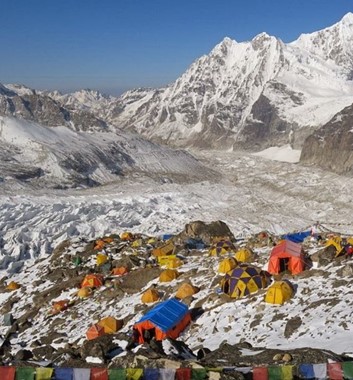
3 season sleeping bag
A good quality 3 season synthetic mummy shaped bag rated to a low of -12°C and a comfort rating of -5°C. Comes with a liner.

Trekking poles
A pair of adjustable trekking poles.

Hotel Manang
3 nights twin/double standard room in the heart of Thamel in Kathmandu. Hotel Manang is a 4 star establishment with excellent facilities, spacious ensuite rooms and a good restaurant.

Yak and Yeti Hotel
3 nights twin/double standard room in this luxury 5 star hotel offering a blend of modern day sophistication and cultural heritage with its 100-year-old palace and the newly designed structure of the hotel.

Kathmandu Guest House
3 nights B&B in a standard twin or double in the famous 4 star Kathmandu Guest House in Thamel, central Kathmandu. KTMGH is set in beautiful grounds with a number of restaurants and gardens, shops and museum pieces.

Kathmandu Eco Hotel
Budget hotel near city centre, price is for 3 nights double or twin room.
Choose a scheduled date or contact us to set up private dates or a bespoke itinerary. The minimum deposit is £100.00 and the balance is due four weeks before travel.
- Trekking days 21 days
- Highest altitude 5388m
- Trekking grade Stenuous
- Accommodation Lodges and camping
- Best time April-June, Oct - Dec
- Region Eastern Nepal
- Local airport Biratnagar
- Nepal trip preparation
- Health and altitude
- Trekking boot advice
- Acclimatising safely
- Kathmandu Accommodation
- Nepal trek kit list
- Nepal: Local price guide
- Sleeping bag advice
- Himalayan Flight Delays
- Guest House in Kathmandu

Speak to Our Experts: [email protected]
- Mount Everest Expedition (8848.86m)
- Mount Kanchenjunga Expedition (8586m)
- Mount Lhotse Expedition (8516m)
- Mount Makalu Expedition (8463m )
- Mount Cho Oyu Expedition (8188 m)
- Mount Dhaulagiri Expedition (8167m)
- Mount Manaslu Expedition (8163m)
- Mount Annapurna Expedition (8091m)
- Ama Dablam Expedition (6812m)
- Mera Peak Climbing (6476m)
- Island Peak Climbing (6189m)
- Lobuche Peak Climbing (6119m)
- Short Annapurna Base Camp Trek Via Poonhill – 7 Days
- Annapurna Circuit Trek via Tilicho lake – 11 Days
- Ghorepani Poonhill Trek – 4 Days
- Mohare Danda Trek – 6 Days
- EVEREST BASE CAMP TREK – 12 Days
- Three Passes Everest Trek – 16 days
- Short Everest Trek- 5 days trek
- Gokyo Trek – 10 Days
- Kanchenjunga Trek – 21 Days
- Langtang Valley Trek – 7 Days
- Manaslu Trek via larke pass – 14 Days
- Mardi himal Trek – 6 Days
- Upper Mustang Trek – 11 Days
- Khopra Danda Trek – 9 Days
- Hiking in Nepal
- Chisapani- Nagarkot Hiking 2Nights 3Days
- Budget Tour- 11Nights/ 12Days
- Diamond Tour- 6Nights/ 7Days
- Pilgrimage Tour- 5Nights/ 6Days
- Kathmandu Sightseeing- 1Day Tour
- Pokhara Sightseeing- 1Day Tour
- Lumbini Sightseeing- 1Day Tour
- All Nepal: Tour Packages
- Astam-Landruk Ecotour
- Chepang Hill Siraichuli Trek
- White water rafting in Nepal
- Bungee jumping in Nepal
- Paragliding Pokhara Nepal Price
- Cycling/ Mountain bike in Nepal
- Chisapani- Nagarkot Hiking: 2N/3D
- Jungle Safari Price in Chitwan
- Kailash Mansarovar Yatra By Land
- Kailash Mansarovar Yatra via Lhasa
- Tibet Tour with Yamdrok, Yerpa & Tsedang
- Tibet Tour With Lhasa & Everest Base Camp
- Bhutan Travel – 7Nights/ 8Days
- Bhutan Tour- 5Nights/ 6Days
- Bhutan Tour- 4Nights/ 5Days
- Bhutan Tour- 3Nights/ 4Days
Kanchenjunga Base Camp Trek – 21 Days

- Destination: Kanchenjunga
- Activities: trekking, city tour in Kathmandu
- Trip Grade: A
- Departure from: Kathmandu
- Arrival on: Kathmandu
- Group size: 1-12
- Best Seasons: Sept- Oct- Nov & March- April- May
- Meals: All Meals are Included (Breakfast, Lunch & Dinner with Tea/ Coffee) - during the trek
- Accomodation: All Accommodations are included during the entire trip. In Kathmandu , pokhara - 3Star level Hotel. During the trek- Lodge as per itinerary.
- Transportation: All Transportation (including Air Flight)
Kanchenjunga Base Camp Trek:
Mt. Kanchenjunga is the 3rd highest mountain in the world and is situated in eastern part of Nepal. The trek is famous for beautiful scenery and wilderness. The place is also culturally rich. Kanchenjunga Base Camp Trek tinerary & Cost gives you insights into how to plan this beautiful trek.
During the trek you can see several high mountains, including Mt. Everest (8848m), Mt. Kanchenjunga (8586m), Mt. Makalu (8485m) and many more other mountains. The trek starts from Kathmandu fly to Badrapur and then drive to Taplejung via Ilam. Ilam is a beautiful place with full of tea farms.
Here you can enjoy freshly brewed tea. The landscape here is superb for the picture. Kanchenjunga is a protected area. So, during the trek you’ll have great chance to see wild animals including Snow leopard and Red panda.
The trek brings you through several Villages of Rai and Limbu people. So, it gives you chance to experience their culture as well. Please see below for the detail itinerary for Kanchenjunga Base Camp Trek.
For Optional trekking route you also can have a look at Everest Base Camp Trek.
“Apex Nepal Treks & Tours” is a guide owned company and we organize best Kanchenjunga trek in Nepal giving you the best Himalayan Experience.
Trip highlights.
- Detail Itinerary
What's Included
- Best view of the 3 rd highest mountain in the world, Mt. Kanchenjunga (8586m)
- Rich in culture
- Tea Gardens
- Waterfalls, Birds, Wild animals, etc.
- Best local food
Day to Day Itinerary
Day01: Arrival in Kathmandu (1,300m)
Day02: Fly from Kathmandu to Bhadrapur- Drive to Taplejung (45 min flight & 9 hrs drive)
Day03: Taplejung to Lalikharka (2265m), 4 – 5 hrs trek
Day04: Lalikharka to Khesewa (2120m),5 – 6 hrs trek
Day05: Khesewa to Mamankhe (1785m), 5 – 6 hrs trek
Day06: Mamankhe to Yamphudin (2080m), 4 -5 hrs
Day07 : Yamphudin to Tortong (2,995m), 7 -8 hrs
Day08: Tortong to Cheram (3,870m), 2 -3 hrs
Day09: Cheram: Acclimatization and Rest
Day10: Cheram to Ramchaur (Ramche) (4,580m), 3 – 4 hours
Day11: Ramchaur (Ramche) to Yalung Base Camp (4500m), back to Cheram: 3 – 4 hours
Day12: Cheram to Sele La (4290m/), 6 -7 hours
Day13: Sele La to Ghunsa (3,595), 2 -3 hours
Day14: Ghunsa to Kambachen (4,050m), 5 -6 hours
Day15: Kambachen to Lhonak (4,780m), 5 -6 hours
Day16: Kanchenjunga base camp, overnight at Pangpema (5,143), 6 -7 hours
Day17: Pangpema to Lhonak : 3 – 4 hours
Day18: Lhonak to Ghunsa (3475m), 6 -7 hours
Day19: Ghunsa to Amjilosa (2,308m), 5 -6 hours
Day20: Amjilosa to Chirwa (1,270m), 6 -7 hours
Day21: Chirwa to Taplejung via Mitlung (921mm), 7 -8 hours trek
Day22: Taplejung to Bhadrapur: 9 hours drive
Day23: Fly to Kathmandu
Day24: Final departure
- Airport pickups and drops in a private vehicle
- 3-star hotel accommodation in Kathmandu
- Teahouse accommodation during the trek
- All meals (Breakfast, Lunch and Dinner) during the trek
- All ground transportation on a comfortable private vehicle as per the itinerary
- Domestic flights (Kathmandu- Bhadrapur -Kathmandu)
- Guided city tour in Kathmandu by private vehicle
- Entrance fees for sightseeing/monument visits as per the itinerary
- An experienced, English-speaking and government-licensed trek leader and assistant trek leader (6 trekkers: 1 assistant guide)
- Porter service (2 trekkers: 1 porter)
- Staff costs including their salary, insurance, equipment, food and accommodation
- All necessary paperwork and trekking permits, TIMS
- All government and local taxes
Accommodations
All Accommodations are included during the entire trip. In Kathmandu ,. During the trek- Lodge as per itinerary.
All Meals are Included (Breakfast, Lunch & Dinner with Tea/ Coffee) – during the trek
Best Time to Travel
Sept- Oct- Nov & March- April- May
0 Reviews on Kanchenjunga Base Camp Trek – 21 Days
Leave a Reply Cancel reply
Your email address will not be published. Required fields are marked *
Related Package
- Print This Trip
- Book This Trip
Photo Gallery

- Why with Odyssey
- Odyssey Team
- Legal Documents
- Terms and Conditions
- Client Reviews
Photo Gallery
- Upper Dolpo Trek – 22 Days
- Lower Dolpo Trek – 15 Days
- Rara Lake Trek – 15 Days
- Rolwaling Tashi Lapcha Pass Trek – 16 Days
- Jugal Himal Trek – 14 Days
- Ganesh Himal Trek – 15 Days
- Bhairav Kunda Trek – 10 Days
- Api Himal Trek – 19 Days
- Makalu Base Camp Trek – 16 Days
- Kanchenjunga Trek – 22 Days
- Khopra Ridge Trek – 11 Days
- Dhaulagiri Trek – 17 Days
- Guerrilla Trek – 13 Days
- Everest Base Camp Trek – 14 Days
- Everest Base Camp Trek – 13 Days
- Everest Base Camp Short Trek – 12 Days
- Everest Base Camp Trek via Salleri – 16 Days
- Everest Chola Pass Trek – 16 Days
- Everest High Passes Trek – 18 Days
- Everest Gokyo Lake Trek – 12 Days
- Everest View Trekking – 8 Days
- Pikey Peak Trek – 08 Days
- Short Everest Trek – 5 Days
- Everest Thame Legendary Trek – 06 Days
- Everest Yeti Trail Trek – 8 days
- Everest Classic Trek – 20 Days
- Annapurna Circuit Short Trek – 12 Days
- Annapurna Tilicho Lake Trek – 15 Days
- Annapurna Base Camp Trek – 14 Days
- Annapurna Circuit Trek – 19 Days
- Australian Camp Trek – 5 Days
- Mohare Danda Trek – 8 Days
- Dhampus Trek – 5 Days
- Ghorepani Poon Hill Trek – 8 Days
- Jomsom Muktinath Trek – 12 Days
- Mardi Himal Trek – 09 Days
- Royal Trek – 6 Days
- Annapurna Panorama Trek – 7 days
- Nar Phu Valley Trek – 16 Days
- Sikles Trek – 8 Days
- Panchase Trek – 6 Days
- Langtang Circuit Trek – 19 Days
- Langtang Tilman Pass Trek – 18 Days
- Langtang Ganjala Pass Trek – 14 Days
- Gosainkunda Frozen Lake Trek – 7 Days
- Langtang Helambu Trek – 7 Days
- Langtang Valley Trek – 08 Days
- Langtang Gosainkunda Trek – 14 Days
- Langtang Tamang Heritage Trek – 09 Days
- Manaslu Trek- 15 Days
- Manaslu Tsum Valley Trek – 12 Days
- Manaslu Circuit Trek – 18 Days
- Upper Mustang Trek – 16 Days
- Lower Mustang Trek – 12 Days
- Chisapani Trek – 6 Days
- Balthali Village Trek – 5 Days
- Nagarkot – Dhulikhel Trek 3 Days
- Namobuddha Trek – 2 Days
- Nagarkot Trek – 3 days
- Dhulikhel Trek – 04 Days
- Helicopter Trip to Everest Base Camp
- Annapurna Base Camp Helicopter Tour
- Nepal Pilgrimage Tour – 10 Days
- All Nepal Tour – 15 Days
- Kathmandu City Sightseeing Tour – 06 Days
- Nepal Heritage Tour – 11 Days
- Nepal Historical Tour – 13 Days
- Best of Nepal Tour – 10 days
- Basic Nepal Tour – 3 days
- Nepal Cultural Tour – 12 Days
- Nepal Adventure Tour – 14 Days
- Nepal Buddhist Tour – 9 Days
- Island Peak Climbing – 13 Days
- Mera Peak Climbing – 15 Days
- Lobuche Peak Climbing – 15 Days
- Tharpu Chuli Peak Climbing – 14 Days
- Pisang Peak Climbing – 15 Days
- EBC with Island Peak Climbing – 15 Days
- Mera & Island Peak Climbing – 19 Days
- Yala Peak Climbing – 10 Days
- Chitwan Jungle Safari Tour – 04 Days
- Bardia Jungle Safari – 04 Days
- Koshi Tappu Wildlife Safari – 4 days
- Namobuddha Hiking
- Shivpuri Hiking
- Phulchowki Hiking
- Champadevi Hiking
- Nagarjun Hiking
- Trishuli River Rafting
- Sunkoshi River Rafting
- Bhotekoshi River Rafting
- Ultra Light Aircraft
- Mountain Flight
- Paragliding
- Bungee Jump
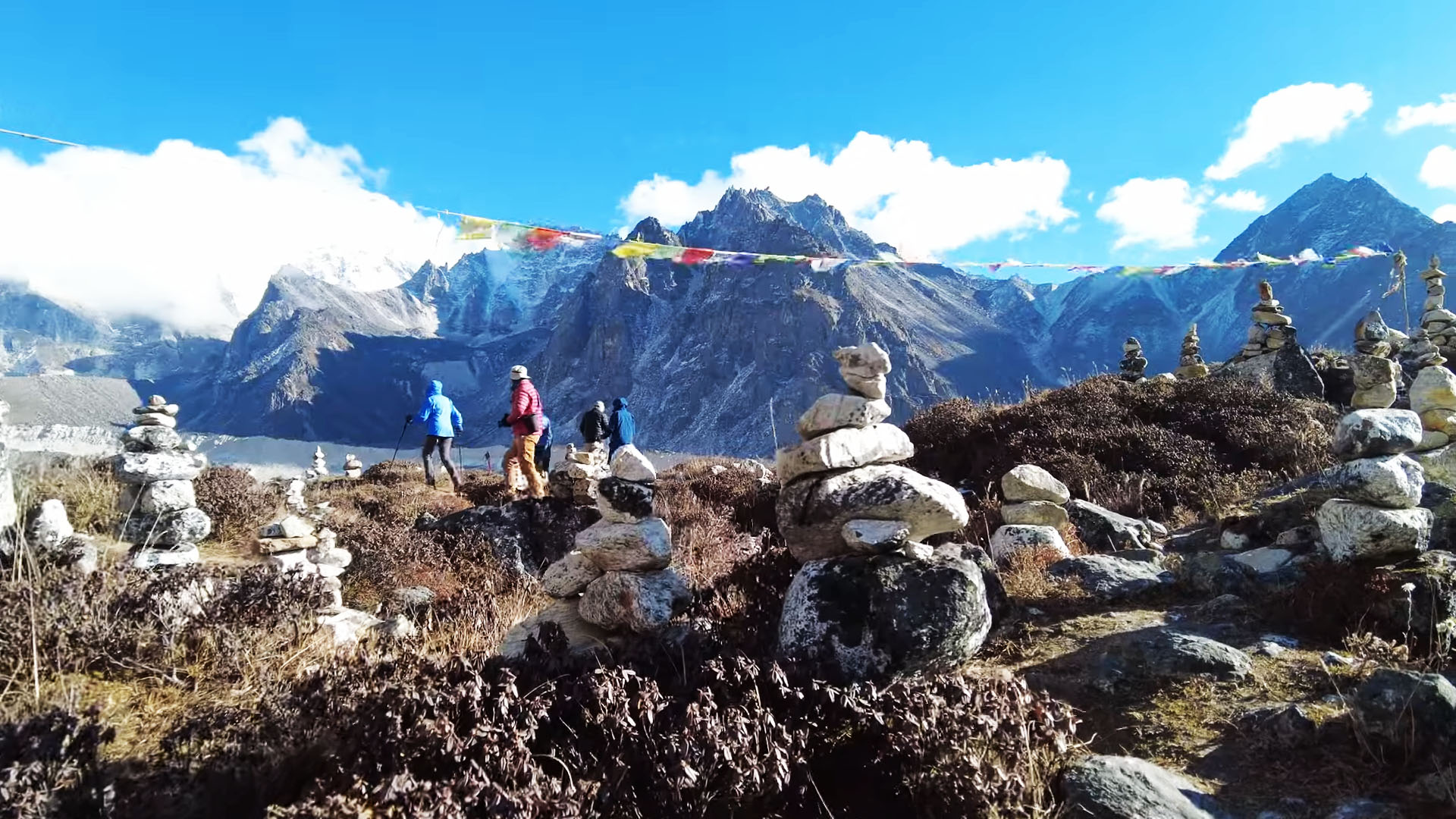
Kanchenjunga Trek – 22 Days
Guest review, trip overview.
Odyssey Treks Navigation:
Introduction to the Kanchenjunga Trek
“In the heart of the Himalayas, the Kanchenjunga trek reveals a story of beautiful nature and majestic peaks.”
Nepal is a paradise for trekkers looking for adventure and tranquility in nature. Among the numerous trekking routes in Nepal, the Kanchenjunga trek stands out as an untouched and mysterious journey that beckons the intrepid traveler. This 22-day trek takes you to the base camp of the magnificent mountain Kanchenjunga .
Kanchenjunga Trek is a wilderness and unspoiled trekking trail that was opened to foreigners for trekking only in 1988. Kanchenjunga Mountain is in the eastern part of Nepal. Mount Kanchenjunga is the third-highest mountain in the world, with a height of 8,586 meters.
This trekking trip in the Kanchenjunga Conservation Area is more exciting and challenging. This is a wonderful trekking experience in the Himalayan region of Nepal. The trek starts at 920 meters and reaches 5,143 meters above sea level.
The hike includes challenging high passes such as Mirgin La Pass and Selle La Pass. The panoramic views during the pass are nothing short of awe-inspiring, making the challenges worthwhile. From the base camp, you have a unique view of the surrounding peaks, including Jannu, Yalung Kang, and the Kanchenjunga massif .
The Kanchenjunga trek should be the dream of every traveler. But the remoteness of the place attracts only those travelers who prefer to stay away from the crowds. It is also suitable for those who want to enjoy solitude, are willing to walk on the beaten trail, and are ready to explore the unspoiled natural beauty.
Explore the Tibetan Buddhist culture.
This long trekking trail takes you to the border of Nepal, India, and Tibet and allows you to explore the beauty of the mountains. The region is mainly inhabited by people of the Rai and Limbu ethnic groups. These ethnic groups have their own unique culture, traditions, and ways of life. Tibetan Buddhist culture is mostly practiced by the people here. So you will find monasteries, stupas, and gompas on your way. Visits to monasteries and holy places during the Kanchenjunga base camp trek add a spiritual dimension.
During the trek, you will cross lush valleys, dense rhododendron forests, vibrant villages, and various floras and faunas. The area is home to many birds and animals, and if you are lucky, you will encounter animals like snow leopards, red pandas, and Himalayan black bears.
Attractions of the Kanchenjunga Trek
- Explore Kanchenjunga, the third-highest mountain in the world, with a height of 8586 meters.
- Walk through the Kanchenjunga Conservation Area, which is rich in flora and fauna.
- Experience lush green forests, mesmerizing waterfalls, rivers, and beautiful villages on a less-crowded trail.
- Cross passes, thrilling suspension bridges, and grasslands reach the base camp of the Kanchenjunga Mountains.
- Experience the lifestyle of the locals with a blend of traditional Nepali and Tibetan culture.
- Visit ancient monasteries along the trail.
- Interact with locals in Gurung, Limbu, Rai, and Sherpa villages.
- There is an opportunity to see endangered species such as snow leopard, red panda, musk deer, and various species of birds and butterflies.
- You can enjoy amazing panoramic views of high peaks and glaciers while crossing high passes like Sele La Pass and Mirgin La Pass.
What can you expect from the Kanchenjunga Trek?
Stunning Scenery: You will have panoramic views of the Kanchenjunga massif, the world’s third-highest mountain, and the surrounding peaks.
Various Scenarios: The Kanchenjunga Base Camp Trek takes you to different landscapes and remote areas. Experience different landscapes, from the dense forests of the lowlands to the high mountain terrain.
Rich Biodiversity: Explore the Kanchenjunga Conservation Area. This conservation area is home to diverse flora and fauna. It covers a range of ecosystems, from subtropical forests to alpine meadows.
Cultural Immersion: Along the trekking route are the traditional villages of the Limbu, Rai, and Sherpa communities. Experience their unique culture, traditions, and hospitality.
Remote and off-the-beaten path: The Kanchenjunga trek route is less crowded than other popular treks in Nepal. It provides a more peaceful and pristine trekking experience.
Challenging terrain: The Kanchenjunga Base Camp trek combines ascent and descent. It involves traversing steep mountain passes and navigating rugged terrain. Being on a physically demanding trek requires good fitness and stamina.
High Altitude Experience: The trek leads to an altitude of over 5,000 meters (16,404 ft). Experience high-altitude trekking at Kanchenjunga Base Camp. Proper acclimatization is essential to reduce the risk of altitude-related problems.
Tea House and Camping: Stay at teahouses at lower elevations, offering basic accommodation and food. Camping at high altitudes may be necessary, which adds a sense of adventure to the trek.
Unique scenario: Discover unique landscapes such as the Yalung Glacier and Pangpema. It adds a sense of exploration and adventure to your trip.
Visit Spiritual and Holy Places: Along the trail, visit monasteries and holy sites. This adds a spiritual and cultural dimension to your trek.
Is the Kanchenjunga trek suitable for you?
The Kanchenjunga Trek is a challenging and remote trek. It takes you around Kanchenjunga, the third-highest mountain in the world . Whether the Kanchenjunga trek is suitable for you depends on various factors. Before starting a trek, you should consider physical fitness, trekking experience, health condition, personal preferences, etc. Here are some considerations:
Physical Fitness: Kanchenjunga trekking is a challenging and demanding adventure. It involves long and strenuous days of walking over varied terrain, steep ascents, and descents. Physical fitness is essential to covering long distances and varying terrains. Ensure you have a good fitness level and are comfortable with high-altitude trekking. Before trekking, you can do regular cardiovascular exercise and strength training.
Altitude: This trek takes you to altitudes above 5000 meters, with a high risk of altitude sickness. It is essential to be aware of the risks associated with high altitudes and take necessary precautions. Proper acclimatization is also vital to avoid altitude sickness. We recommend taking rest days and ascending slowly to acclimate well. It is good to consult a healthcare professional before attempting this trek.
Trekking Experience: Some sections of Kanchenjunga trekking can be challenging. Previous trekking experience is not essential but is beneficial, especially at higher altitudes. Many people complete the trek without prior experience. However, being physically fit enhances the overall trekking experience. If you are a beginner, consider starting with shorter and less strenuous treks before trekking.
Duration: The Kanchenjunga is a long-day trek that takes about three weeks to complete. However, the duration also depends on your pace and rest days, so make sure you have enough time to complete the trek.
Terrain and Climate: The trek includes rocky paths, forest paths, and high mountain terrain. At high altitudes, the weather can change unpredictably. So, be prepared for rugged, high-altitude trails and different weather conditions.
Basic amenities: Accommodations at the Kanchenjunga base camp are usually tea houses or lodges. The tea house on the trail is like a small lodge with basic facilities. Foods are also more basic and limited, especially at high altitudes. This trek may suit you if you are comfortable with basic food and accommodations.
Personal Interests: When choosing a trek, it is essential to be clear about your interests and expectations. On the trek, you can enjoy stunning snow-capped mountain views, diverse landscapes, and cultural experiences. So, make sure that this trek matches your interests and expectations.
Benefits of booking a Kanchenjunga trek with Odyssey
- Free private vehicle service for pick-up and drop-off at the airport
- As souvenirs, an Odyssey Trek duffel bag and t-shirt
- Map of the Kanchenjunga Trek
- Use an oxygen meter at a high altitude to measure the oxygen saturation of the blood.
- Arrangement of emergency medical kit
- Accessible extra luggage storage facility for the duration of the trek
- Arrangement a down jacket and sleeping bag for trekking if you don’t have your own
Food and accommodations during the Kanchenjunga Trek
As Kanchenjunga is a challenging and remote trek, you should prepare well, considering food and accommodation. Food facilities during the trek may vary, and the options are generally more basic than in famous trekking areas. Along the trekking route, many villages have teahouses. These teahouses are like small lodges that provide basic accommodation and food.
Teahouses usually have a basic menu with various local and international dishes. The menu usually includes Dal Bhat (rice, lentil soup, and vegetables), noodles, soups, and sometimes Western food options. The menu in tea houses can be limited, especially in higher altitudes and remote areas.
You can also find a variety of hot drinks, such as tea, coffee, and hot lemonade, which can be comforting in cold weather. It is a good idea to carry some snacks and energy bars for extra energy during the trek.
Drinking water is available everywhere, but always make sure that the water you consume is safe. Purifying water using water purification tablets or a water filtration system is advisable. You can also buy bottled water if it is available.
Rooms in teahouses are basic, with simple beds and shared facilities. You can expect simple rooms in teahouses with beds, pillows, mattresses, and blankets. Extra blankets are available if it gets too cold. But it’s a good idea to bring a sleeping bag, as temperatures can drop significantly at higher altitudes.
Difficulty of Kanchenjunga Trek
The Kanchenjunga base camp trek is one of the most challenging treks in Nepal. Therefore, preparing for the challenges that may arise before attempting trekking is essential. Below are some factors that make this trek difficult:
Remote and Less Developed Areas: It is remote and less developed than popular trekking destinations such as the Annapurna and Everest regions. Food and lodging facilities in teahouses are very basic, and infrastructure is limited.
High Altitude: The trek leads to an altitude of over 5,000 meters. Altitude-related challenges, such as acute mountain sickness (AMS), are a concern in high-altitude trekking. The body needs to adjust to the change in altitude. So, ascending gradually with proper acclimatization is important to avoid altitude sickness.
Long Duration: It is a long trek that takes about three weeks to complete. The long duration and challenging terrain demand good physical fitness and endurance.
Variable Weather Conditions: The weather in the Kanchenjunga region can be unpredictable. During the trek, you may encounter rain, snow, and cold temperatures, especially at higher altitudes.
Trail Difficulty: The trek covers a variety of terrains, from lush subtropical forests to alpine meadows and high mountain landscapes. The trails are steep, rocky, and rugged, making the trek challenging.
Isolation: Compared to other popular routes, this area is less crowded and has limited access to services. This solitary trek contributes to the sense of adventure but also requires careful planning.
Due to the difficulty level, preparation is essential before attempting the trek. Previous trekking experience and good physical fitness are beneficial for completing the trek. It is advisable to go trekking with local and experienced guides for safety and navigation.
best time for Kanchenjunga Trek
The best seasons for Kanchenjunga trekking are spring (March to May) and autumn (September to November). The weather is usually stable during these seasons, and clear skies and moderate temperatures make trekking ideal.
In spring, the landscape is adorned with colorful rhododendron flowers . The trails are relatively dry, which makes the journey more comfortable. Autumn has less rainfall and a low chance of snowfall at higher altitudes, which can make trekking safer. Spectacular views of the surrounding landscapes are more likely due to low cloud cover. However, it is important to note that the weather in the Himalayas can be unpredictable. Therefore, checking the latest weather forecasts before planning a trip is always a good idea.
Trekking during the monsoon season (June to August) can be challenging due to heavy rains, muddy trails, and leeches. Similarly, the winter season (December to February) is extremely cold. Snow can fall during this season, especially at higher elevations, posing additional risks. So, the monsoon and winter seasons are generally not recommended for the Kanchenjunga trek.
High altitude sickness and acclimatization
Altitude sickness, also known as acute mountain sickness (AMS), affects hikers and climbers at high altitudes. The Kanchenjunga trek offers breathtaking scenery and challenging terrain that attract many adventurers. However, high-altitude treks can cause altitude sickness.
Altitude sickness occurs when the body cannot adjust to the reduced oxygen levels at high altitudes. At higher altitudes, the air pressure decreases, which reduces the amount of oxygen. Lack of oxygen can cause various symptoms, from mild discomfort to serious illness. Symptoms of altitude sickness include headaches, nausea, fatigue, dizziness, and shortness of breath. These symptoms usually occur at altitudes above 2,500 meters (8,200 feet). So, it is important to be aware of altitude sickness while trekking.
Altitude sickness is a serious concern, but the risk can be minimized with proper preparation, acclimatization, and awareness. To minimize the risk of altitude sickness, it is necessary to acclimatize the body and ascend gradually.
Rest days at certain altitudes should be included in your itinerary to allow the body to adjust to reduced oxygen levels. Staying hydrated also helps reduce symptoms and aid in adaptation. If the condition is severe, a low-altitude evacuation or medical assistance may also be necessary. Taking proper precautions allows you to safely enjoy the unique beauty of the Himalayas on the Kanchenjunga trek .
Kanchenjunga Trek Cost
The cost of the Kanchenjunga Base Camp Trek depends on various factors. It may vary depending on the duration of the trek, route, and services included (e.g., guide, porter, accommodation, food, and permits). Similarly, the cost of trekking also depends on the size of the group. According to your budget, you can choose a teahouse trek package or a luxury package with a camping trek.
The teahouse package includes basic teahouse service on trekking routes. A teahouse is a small guesthouse that provides travelers with basic accommodations and food. Depending on various factors, this package can range from $2,200 to $3,000 per person.
If you want better service than the basic teahouse package, you can opt for the luxury camping trek option. This luxury package offers complete luxury service. It includes high-quality accommodation in comfortable tents or lodges, professional chefs, hot showers, portable toilets, etc. Depending on various factors, you can expect to pay $3,500 to $6,500 or more per person for a luxury camping trip.
However, prices may fluctuate depending on the luxury you prefer and any additional services you require. Researching various trekking companies and finding the best option that fits your budget and preferences is advisable. Let us know your requirements, interests, and group size, and we will prepare an excellent package price per your requirements.
Water, toilet, shower, mobile charger, internet and wi-fi
Facilities like water, toilets, showers, mobile chargers, and internet on the trekking route may vary depending on the location and type of accommodation. Access to clean water is essential during the trek. Along the trekking trail, you come across teahouses or lodges where you can buy bottled water. You can also refill your water bottles with filtered or boiled water at these teahouses for a small fee. Treating the water using purification tablets or filters for clean water is a good idea.
Along the Kanchenjunga Base Camp trekking route , teahouses or lodges usually have basic toilet facilities. Depending on the location, these can range from squat toilets to more Western-style toilets. In some remote areas, you may also encounter simple pit latrines at high altitudes. It is advisable to carry toilet paper, small towels, soap, hand sanitizer, etc.
Teahouses have shower facilities, but their availability and standards may vary. In some places, you have to pay extra for a hot shower, while in others, only a cold water shower may be available. The availability of shower facilities in mountains at higher altitudes may be limited.
Many teahouses along the trail have charging facilities for electronic devices such as mobile phones and cameras. However, the availability of this facility may vary depending on location and teahouse infrastructure. They usually provide charging outlets in common areas or guest rooms.
Electricity in the Kanchenjunga region is generally generated from solar energy sources. Some teahouses provide electricity 24 hours a day, while others offer limited hours, usually in the evening. At some teahouses, charging may be free, while others may charge a small fee for each device. Carrying a portable power bank as a backup is a good idea.
Internet and wi-fi access are generally limited in Kanchenjunga trekking . Some teahouses offer wi-fi for a fee, but the connection can be slow and unreliable. As you climb higher, the availability of wi-fi and internet facilities decreases. Most teahouses in remote and high-altitude areas do not have any wi-fi or internet facilities. You can use satellite phones for alternative communication, but remember that it is expensive.
Permits for Kanchenjunga Base Camp Trek
A permit is mandatory for trekking in the Kanchenjunga region . The main permits you need for the Kanchenjunga trek are:
Restricted Area Permit (RAP):
Due to its sensitive nature, the Kanchenjunga area has been declared restricted. Trekking in this area requires a special permit, which can be obtained only through a registered trekking agency in Nepal . Since independent trekking is not allowed in this area, you must arrange a permit through a trekking agency.
This permit costs US$20 per person per week for the first four weeks. After the first four weeks, you pay US$25 per person per week. A minimum of 2 people are required for a special permit, as solo trekking is also prohibited in this area. Note that the cost of the special permit is the same for foreigners and SAARC nationals.
Kanchenjunga Conservation Area Project Permit (KCAP):
Another permit required for trekking is the Kanchenjunga Conservation Area Project Permit (KCAP). You can get this KCAP permit in Kathmandu or at the entry point to the conservation area. The KCAP fee is NPR 500 (approximately USD 4) per person for SAARC countries. The KCAP fee for nationals other than SAARC nationals is NPR 2000 per person (approximately USD 16).
Health and fitness training for Kanchenjunga trek
Kanchenjunga is a challenging trek that requires good health, physical fitness, and mental preparation. The trail leads through rugged terrain, high altitude, and varying weather conditions. It is better to do health and fitness training before going on the Kanchenjunga trek . Here are some health and fitness tips to help you prepare for the Kanchenjunga trek.
Cardiovascular Fitness:
Cardiovascular endurance is important for walking long distances at high altitudes through uneven terrain. To improve cardiovascular fitness, do aerobic exercise such as walking, running, cycling, or swimming. Gradually increase the intensity and duration of the workout to build endurance and stamina.
Strength Training:
Strength training strengthens the leg muscles, core, and upper body. It can help with vertical ascents and descents and comfortably carry bags. Include exercises such as squats, lunges, calf raises, push-ups, planks, and shoulder presses in your daily exercise routine.
Flexibility and Mobility:
Flexibility and mobility are essential to prevent injuries and maintain agility while trekking. Include stretching exercises and yoga into your workouts to improve flexibility and range of motion.
Trekking Practice:
Practice trekking on uphill and uneven terrain 1 month in advance. Gradually increase the duration and difficulty of your trekking to build endurance.
Height simulation:
If possible, engage in altitude simulation training by hiking at high altitudes. This helps your body adapt to the reduced oxygen levels and prepares you for the trek’s altitude challenges.
Hydration and Nutrition:
Staying hydrated is essential, so drink plenty of water throughout the day and during your workouts. Consume high-energy snacks and meals during training sessions. A balanced diet of carbohydrates, proteins, healthy fats, vitamins, and minerals will fuel your body for the trek.
Mental Preparation:
Remote and challenging trekking can be mentally demanding. Practice meditation or visualization techniques to stay focused and positive on the trek. Be prepared for unexpected weather changes, physical exertion, and possible obstacles during trekking.
Medical check-up:
Consult a doctor before starting the trek to ensure you are physically fit for high-altitude trekking. They may recommend particular medications or precautions for altitude sickness and other illnesses. It is also a good idea to carry essential medicine or first aid with you
Equipment packing list
Packing the right equipment and gear is important for a successful and comfortable Kanchenjunga trek. Depending on the season, the things you need may be slightly different. However, here is a comprehensive packing list to consider for the Kanchenjunga trek:
- Synthetic or merino wool tops and bottoms to wick sweat away from the skin.
- A fleece jacket or insulated vest for warmth in colder conditions.
- Insulated pants or down pants for extreme cold.
- Waterproof and breathable jacket with hood.
- Waterproof and breathable pants or rain pants.
- Lightweight, quick-drying trekking pants with zip-off legs for versatility.
- Thermal leggings or long underwear for layering in colder weather.
- Lightweight, long-sleeved trekking shirts for sun protection.
- A wide-brimmed hat or cap for sun protection.
- A beanie or warm hat for cold weather.
- Neck gaiter or scarf for wind protection.
- Lightweight gloves for mild conditions.
- Insulated waterproof gloves or mittens for cold and wet weather.
- Moisture-wicking liner socks.
- Thick, woolen trekking socks for warmth and cushioning.
- Spare pairs of socks for changing during the trek.
- Sturdy, waterproof trekking boots with ankle support.
- Break them in before the trek to prevent blisters and discomfort.
- Lightweight sandals or camp shoes are ideal for resting at tea houses.
Backpacking Essentials:
- Down or synthetic sleeping bags are rated for sub-zero temperatures.
- Inflatable or foam sleeping pad for insulation and comfort.
- Large, comfortable backpack with padded shoulder straps and a hip belt.
- Use a rain cover or waterproof liner to protect gear from rain.
- Adjustable trekking poles for stability and reducing strain on the knees.
- Lightweight, durable headlamp or flashlight with extra batteries.
- Insulated water bottles or hydration bladders help you stay hydrated.
- Detailed trekking map or GPS device for navigation.
- Sunglasses with UV protection.
- Sunscreen with high SPF.
- Lip balm with SPF.
- Basic first aid kit with bandages, antiseptic wipes, pain relievers, and any personal medications.
- Toilet paper, biodegradable soap, hand sanitizer, and personal hygiene items.
- Multi-tool, sewing kit, duct tape, and repair supplies for gear.
- Lightweight emergency bivy sack or space blanket.
Miscellaneous:
- A waterproof pouch to keep trekking permits, passports, and other identifications safe.
- Sufficient cash in Nepali rupees for trekking expenses.
- Credit and debit cards are available for emergencies (ATMs are unavailable in many villages).
- Camera or smartphone for capturing memorable moments.
- Extra batteries or a portable charger.
- Guidebook or map of the Kanchenjunga trek route.
- Notebook and pen for journaling or taking notes.
- High-energy snacks like nuts, energy bars, chocolates, and dried fruits.
- Ziplock bags or garbage bags for packing out waste.
- Water purification tablets, or filters, are used to treat water from natural sources.
Personal Items:
- Passport, visa, and trekking permit.
- A copy of the travel insurance policy with emergency contact information.
- Any prescription medications, along with a copy of the prescriptions.
- Toothbrush, toothpaste, biodegradable soap, and other personal hygiene items.
- Earplugs and sleep masks for a better night’s rest in teahouses.
- Quick-drying, lightweight towel for personal hygiene.
- Moisturizer and lip balm to protect skin from dryness and chapping.
The Kanchenjunga trek is for those looking for the perfect blend of adventure, nature, and cultural immersion. This trek is a physical and spiritual journey for those who dare to reach the lap of the Himalayas. It is a trek of a lifetime , a journey to the roof of the world. Explore the beauty of the Kanchenjunga region with Odyssey Treks . For more information about trekking and tours, feel free to contact us at [email protected]
You may like to visit: Nepal Adventure Tour in 14 days, tour, package, cost, itinerary .
Trip Itinerary
Fly kathmandu to taplejung (2,320m) and trek to mitlung (920m) - 3 to 4 hours walk., mitlung to chirwa (1,270m) - 6 to 7 hours walk., chirwa to sukathum (1,576m) - 6 to 7 hours walk., sukathum to amjilosa (2,308m) - 7 to 8 hours walk., amjilosa to gyabla (2,730m) - 7 to 8 hours walk., gyabla to ghunsa (3,595m) - 6 to 7 hours walk., free day at ghunsa., ghunsa to kambachen (4,050 m) - 6 to 7 hours walk., acclimatization day at kambachen., kambachen to lhonak (4,780m) - 7 to 8 hours walk., lhonak to pangpema/kanchenjunga north base camp (5,143m) - 7 to 8 hours walk., kanchenjunga north base camp to kambachen (4050m) - 7 to 8 hours walk., kambachen to ghunsa (3,595m) - 6 to 7 hours walk., ghunsa to sele le (4,290m) - 7 to 8 hours walk., sele le to cheram (3,870m) - 7 to 8 hours., cheram to ramche (4,580m) and return back to cheram - 5 to 6 hours walk., cheram to tortong (2,995m) - 6 to 7 hours walk., tortong to yamphudin (2,080m) - 7 to 8 hours walk., yamphudin to mamanke (1,800m) - 7 to 8 hours walk., mamanke to lalikharka (2,265m) – 5 to 6 hours walk, lalikharka to suketar (2,320m) – 5 to 6 hours walk., fly suketar to kathmandu., why not list the price.
Each client's needs may be different. The price of the trip varies according to the size of your group and the service you want. The cost of the trip is calculated according to the type of service and accommodation chosen by our customers.
Each trip is customized to fit the client's needs and group size, so the price of each organized trip is different. Please let us know the service you want and the size of the group. We create trips to suit your taste and travel budget per your requirements. Hope you find our price calculation reasonable according to your needs and preferences.
Get A Quote
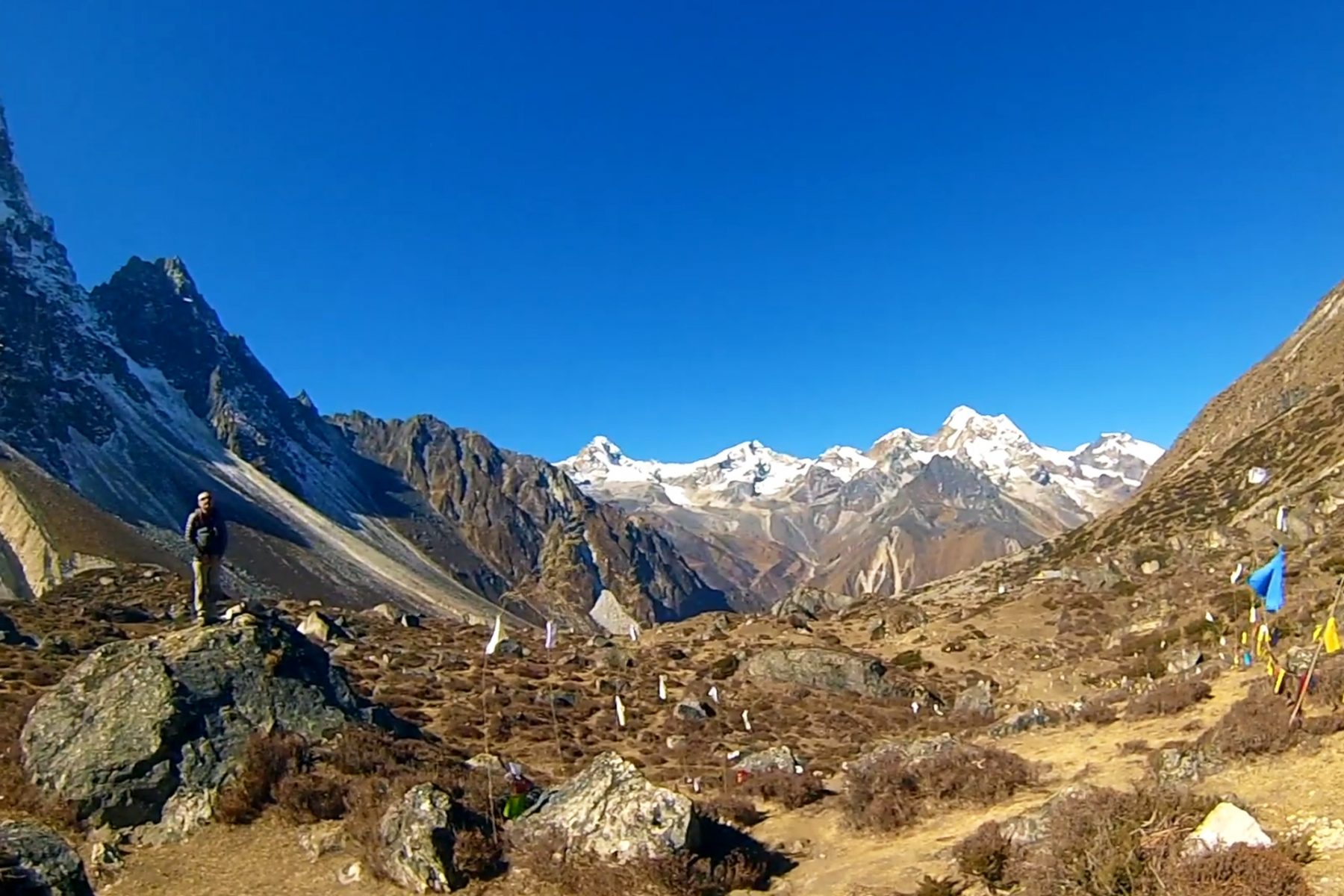
Frequently asked questions about this trip
How difficult is the trek.
The difficulty depends on where and how long you want to trek. The short trek is easy while the long trek requires some physical fitness.
What is altitude sickness?
Altitude sickness is normally known as acute mountain sickness. This can happen when people rapidly climb up to an altitude of more than 3000 meters. We ensure minimal risk by adding rest to our trekking itineraries. Most people will feel some effects of altitude, some shortness of breath and possibly light headache, this is normal enough. Acute mountain sickness patients are quite different and usually have a serious headache, sickness, and lose awareness. In almost all possible cases there are sufficient warning signs to take action properly. Descending to a lower altitude is usually enough to prevent any further problems.
What type of accommodation is available during the trekking?
There are mainly tea houses and lodges available for trekking and they are usually made using local materials and are very comfortable. These accommodations are often family-run and usually provide single and double rooms. The dining room is on the ground floor and is often on fire. All food will be cooked in order in the family kitchen. Toilet facilities are sometimes separate and sometimes outside. Most lodges provide mattresses and blankets. It's a good idea to always have a sleeping bag, which can be useful, and perhaps an inflatable pillow.
How long do we walk every day on trekking?
Trekking programs are classified into three different categories: soft, moderate and hard. Soft treks are only about 7 days to 10 days in duration. They generally do not go above 4000 meters; you can expect to walk about 4-5 hours each day. Moderate treks are challenging enough and long treks that go to the high hill country. Physically exhausting, this involves trekking along the cliffs of the mountains for about 6-8 hours. Harder treks are longer treks that go farther away from the general abode of trekkers and tourists. These physically challenging treks involve walking for 7- 9 hours each day.
How much weight do I need to carry on the trek?
You carry some of your personal belongings, such as warm clothing, water, snacks, sun block, cameras and more. Generally, these items will be lightweight, from 5 to 10kg (10 to 20 pounds). Our porters are available for other heavy goods and for your information one porter would be sharing by two people. The maximum weight carried by one porter is total 20 kg. this means 10 kg. per person is allowed for the trek. In case if you wish to carry more than this weight then you need to hire additional porters.
What is the best time for trekking in Nepal?
October and November are considered as the best times for trekking in Nepal due to dry season. December and January are also considered good times for trekking but it is extremely cold at high altitudes.
Google Review
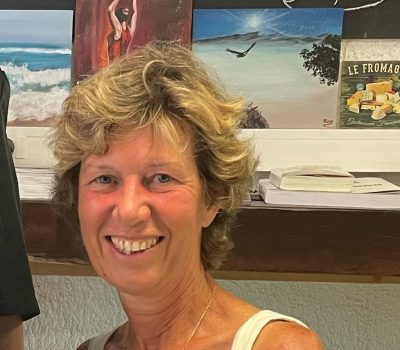
Elisabeth Meusy
Thank you a lot for your organization about my trek. It was a superb experience; all was perfect. Karma is a very nice person and a good guide. I appreciated trekking with Odyssey (a reliable Nepal trek operator). If I come back to Nepal, I will be happy to ask you to trek with me again. I am thinking about Annapurna or the Everest trek.
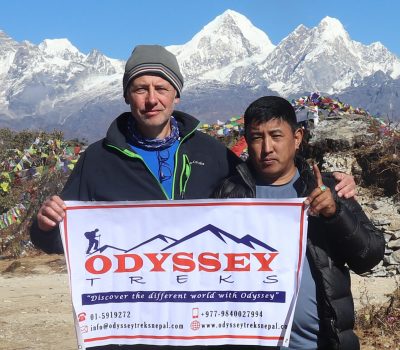
Have just returned from my fourth trip to Nepal and as always Odyssey Treks organized everything superbly. We visited Makalu relatively late in the season and were rewarded with empty trails and amazing weather. Karma was as entertaining, friendly, and informative as ever along with Ang Dawa Sherpa who together made the three weeks perfect.
They also organized a few days to Helambu at short notice as I had some time spare, all done easily and professionally. Thanks for the company both and I will be back again. I cannot recommend Odyssey highly enough as a genuinely friendly, locally based company that provides not only unforgettable experiences but also great service at a very reasonable cost.
Trip Highlights
- Trip Durations 22 Days
- Trip Destination Nepal
- Group Size 2-20
- Accomodation Tea House/Camping
- Trip Grade Moderate / Strenuous
- Best Season Sept-Dec, March-May
- Max Altitude 5,143m
Similar Trip
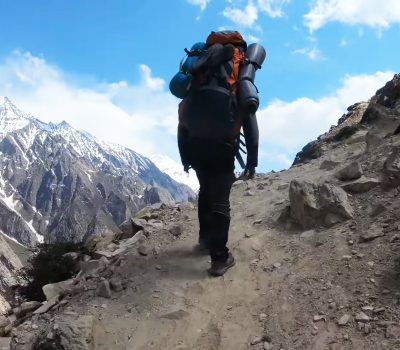
Upper Dolpo Trek – 22 Days
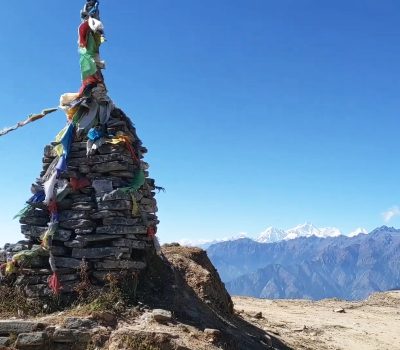
Ganesh Himal Trek – 15 Days
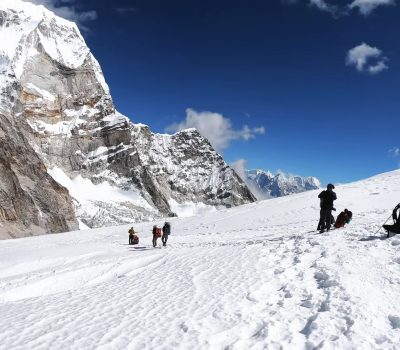
Rolwaling Tashi Lapcha Pass Trek – 16 Days
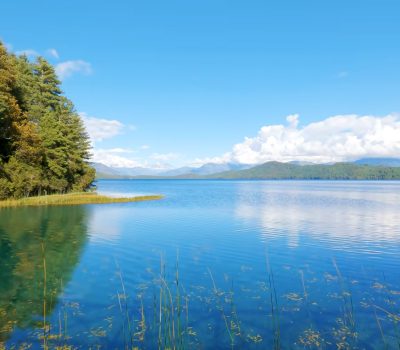
Rara Lake Trek – 15 Days
Booking form.
Arrival Date
Departure Date
Price Inquiry
Arrival Date*
Kanchenjunga Base Camp Trek - 27 Days
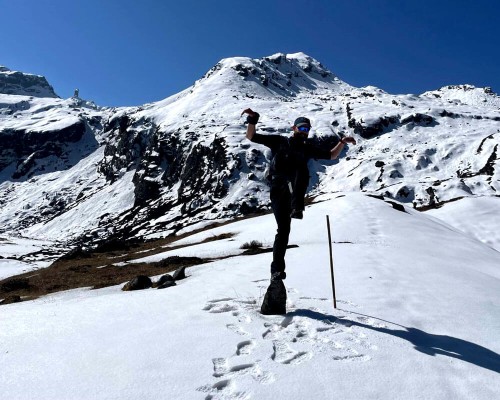
- Duration 27 Days
- Difficulty Level Strenuous
- Destination Nepal
- Trip Type Logde Based Trekking
- Best Season Spring (March - May) & Autumn (Sept - Nov)
- Group Size 2 to 16
- Maximum Altitude 5,143 m
Kanchenjunga Base Camp Trek is also called the Kanchenjunga Circuit Trek, so do not get confused. Kanchenjunga Circuit borders Tibet and Sikkim (India). Kanchenjunga Conservation Area is a restricted part of Nepal that demands a special permit from the government of Nepal to enter. Unlike the famous Annapurna Circuit Trek and Manaslu Circuit Trek , the 26-day Kanchenjunga Circuit Trek is rarely visited by trekkers. The trail is unspoiled and less crowded.
Kanchenjunga Base Camp Trek explores the eastern part of Nepal overflowing with Buddhist culture and diverse flora & fauna. It is the trek for true adventurous hearts who are willing to get uncomfortable and ready to accept challenges.
The Kanchenjunga means five great treasures in the snow: gold, silver, grain, holy scriptures, and precious stones. Mt. Kanchenjunga (8,586 m) is the third highest mountain in the world, and the Kanchenjunga Circuit Trek takes you to the north (5,160 m) and south (4,780 m) base camps of this giant mountain. The region was long prohibited from entering for foreign travel and only opened in 1988. And thanks to that, to this date, Kanchenjunga is thriving in terms of natural heritage and wildlife.
If you wish to experience authentic Nepali culture and village lifestyles not hampered by the modern world, then this trek is perfect. As it is a teahouse trek, the services are very limited and basic. The locals mostly follow Tibetan Buddhism and are descendants of Tibetans. Their houses are built of stones, not found in any other place. Along the way, you visit ancient monasteries and stupas decorated with colourful prayer flags.
Things to experience on Kanchenjunga Circuit Trekking
- No crowds and unspoiled scenery
- Reach the north and south base camps of Mt. Kanchenjunga, the third-highest mountain in the world.
- Experience the rich cultural heritage of Tibetan Buddhists.
- Pass by beautiful remote villages and lush forests.
- Come across a range of flora and fauna.
- Witness diverse landscapes.
- Enjoy surreal mountain views.
- Off-beat trails, steep paths, and crossing many gorges
- Trek in the restricted area of Nepal
Views during the Kanchenjunga Base Camp Trekking
During the Kanchenjunga Base Camp Trekking, you see breathtaking mountain views of Mt. Kanchenjunga (8,586 m), Mt. Makalu (8,463 m), Mt. Everest (8,489 m), Mt. Baruntse (7,162 m), Mt. Jannu (7,710 m), Mera Peak (6,476 m), etc. The trek offers diverse scenery, from verdant valleys to rocky hills, frozen streams, and stunning glaciers.
How difficult is the Kanchenjunga base camp Trek route?
Not many travellers know about Kanchenjunga Base Camp Trek because of the other iconic treks in the Himalayas. This long 26-day Kanchenjunga Base Camp Trek route amidst high Himalayan mountains, streams, and remote villages is only for experienced trekkers who are physically strong and can go without the internet for multiple days. The terrain is rough and steep. It is an off-beat trek. There were a lot of long walks and numerous ups and downs throughout the trek. So this trekking is graded as strenuous.
Preparation for the Kanchenjunga circuit trekking
Kanchenjunga Circuit Trekking requires serious preparation. You have to bring yourself to walk 7 to 8 hours a day on a rough path. Stamina, core body strength, and mental preparation are also needed. Hit the gym, do cardio, and do muscle training.
Our team will provide you with a packing list that you can choose to shop for on the journey. Packing accurately is crucial for having a smooth journey.
What do we offer in our Kanchenjunga circuit trek package 2024?
We offer the best Kanchenjunga Circuit Trek package 2024 and price. Our itinerary has multiple rest days. You trek with a friendly guide who can speak your language. Likewise, our service standard, attention, and safety guarantee allow guests to hassle-free trek with us.
For more information or to book Kanchenjunga Circuit Trek 2024, Contact Us . Check out these other strenuous treks in the Himalayas - Makalu Base Camp Trek , Lower Dolpo Trek , Everest Three High Passes Trek , and Gosaikunda Laurabinayak Trek .
Day 1 Arrival in Kathmandu
We welcome you at the international airport on your arrival day. Our team escorts you to the hotel in a private vehicle. The remaining day is free. You can rest and stroll in Thamel.
- Accommodation Hotel
- Maximum Altitude 1,310 m
Day 2 Kathmandu sightseeing and trek preparation - Duration: 5-6 hours
In the morning, we take our time to explore Kathmandu and visit famous tourist sites. It's a guided tour, so you get to know about Nepal's history, art, and some major historical events from our tour guide. Some of the places we explore during the tour are Boudhnath Stupa, Pashupatinath Temple, Monkey Temple, and Kathmandu Durbar Square.
Later in the afternoon, we return to Thamel and meet our trek guide. We arrange all the documents and do the packing for the trek. If needed you also purchase trekking essentials.
- Meals Breakfast
Day 3 Fly to Bhadrapur, then drive to Phidim
After breakfast, we load our luggage and drive to the domestic airport. We take an early morning flight to Bhadrapur. From here, we drive to Phidim, enjoying the beautiful scenery and countryside views.
- Meals Breakfast, Lunch & Dinner
Day 4 Drive to Taplejung by local jeep - Duration: 7-8 hours
Today, it is another long day that involves a scenic drive to Taplejung. The route we follow during the drive passes by Suketar. It's an impressive drive.
- Accommodation Lodge
- Maximum Altitude 1,820 m
Day 5 Trek Taplejung to Chirwa - Duration: 5 hours
We begin our trek today. It's a gradual walk from Taplejung to Chirwa. The trail ascends along foothills via small remote settlement areas.
- Maximum Altitude 1,270 m
Day 6 Trek Chirwa to Sukethum - Duration: 5-6 hours
Following the Tamur river, we steeply ascend and then descend to Sumbua Khola. Further, we cross a ridge and continue trekking through steep, narrow Gunsa Khola valley to reach Sukethum. It's a Tibetan village with fantastic views of the snow-capped mountains like Jannu.
- Maximum Altitude 1,660 m
Day 7 Trek Sukethum to Amjilosa - Duration: 5-6 hours
The trail today is gorgeous. We begin the day trekking along the Ghunsa Khola river bank. Gradually the trail becomes rugged, and we get to see the rocky landscape. Before reaching Amjilose, there is an uphill climb. It is a small village resided by Sherpas and migrated Tibetans.
- Maximum Altitude 2,310 m
Day 8 Trek Amjilosa to Gyabla - Duration: 4 hours
The trail goes through dense forests of pine, oak, rhododendron, and bamboo. The scenery and people begin to resemble more Tibetan. Along the way, we may come across sheep, yaks, and goats. We walk by verdant forests and cross a wooden bridge to reach Gyabla.
- Maximum Altitude 2,730 m
Day 9 Trek Gyabla to Ghunsa- Duration: 4 hours
We leave Gyabla and continue walking through forests. The trail reaches Phale village, an old Tibetan refugee camp not used as a winter settlement village. From here, the trail moves towards the big Ghunsa village, where we can find heath post, police station, telephone, internet service, etc.
- Maximum Altitude 3,595 m
Day 10 Acclimatization day - Duration: 4 hours
Before moving further, we spend a day in Ghunsa and rest. We ascend to an ancient monastery located on a ridge. The views of Jaanu peak from here are phenomenal. Later in the day, we explore Ghunsa village and take our time to mingle with locals.
Day 11 Trek Ghunsa to Khambachen - Duration: 5-6 hours
We gradually ascend, following the south bank of Ghunsa Khola. The trail passes through pine & rhododendron forests. There are many mani walls, chortens, and prayer flags on the way. The final ascent is steep along the scree slope to Khambachen.
- Maximum Altitude 4,100 m
Day 12 Acclimatization day - Duration: 4 hours
Another rest day to acclimatize our body before we climb further. Today, we hike to the north base camp of Mt. Kanchenjunga. The views of snow-capped mountains are breathtaking. We'll have a lot of time to unwind and enjoy the serenity of the Himalayas.
Day 13 Trek Khambachen to Lhonak - Duration: 5 hours
Today, we walk on exposed rock fields to Ramtang village. The trail then crosses the northwest of the Kanchenjunga glacier and passes by large stone huts. Soon we reach Lhonak village. The views of Mera Peak, Twins, Wedge Peak, etc, are seen on the way.
- Maximum Altitude 4,785 m
Day 14 Trek Lhonak to Pang Pema - Duration: 5 hours
The trail continues to the moraine of the Kanchenjunga glacier. We ascend to the north base camp of Mt. Kanchenjunga today. The fluttering Buddhist prayer flags along the way with the backdrop of stunning mountain scenery are heavenly. Reaching this point is a huge achievement. We spend some time here and descend to Lhonak to spend the night.
Day 15 Trek Pang Pema to Khambachen - Duration: 7-8 hours
Following the same route back, the trail descends to Khambachen. We walk by stony huts and walk by the glacial path. The trail then continues through lush forests.
Day 16 Trek Khambachen to Ghunsa via Sele La pass - Duration: 7-8 hours
We trek and reach Gyabla. The rail goes by rhododendron forests, and we follow an uphill steep path to Sele La pass. At Sele Le, there are two small teahouses that offer some basic services. The trail further crosses Mirgin La pass. The views of mountains like Makalu, Kanchenjunga, Baruntse, and others are outstanding from these passes. After a long walk, we finally reach Ghunsa.
- Maximum Altitude 4,290 m
Day 17 Trek Ghunsa to Tseram - Duration: 7-8 hours
Today, we cross Sinion La pass (4,450 m) and Sinelapche La pass (4,830 m). It's another long day with a breathtaking mountain panorama. After crossing the passes, we descend to Tseram to spend the night. It's the only settlement area on the route this day.
- Maximum Altitude 4,830 m
Day 18 Trek Tseram to Ramche to Boktoh (viewpoint) - Duration: 5-6 hours
We pass by the nose of the glacier and trek towards an ablation valley. The trail offers views of Koktang, Rathong, and numerous 7,000 meters above peaks. Before reaching Ramche, we walk by a lake, meadow, and stone houses. If the time allows, we can hike to Boktoh viewpoint.
- Maximum Altitude 4,580 m
Day 19 Day hike to Oktang - Duration: 4-5 hours
Another ablation valley, Oktang, offers a sensational view of Mt. Kanchenjunga's south face. It's a gradual walk today with great scenery. This hike will help us acclimatize. We spend the night in Ramche village.
- Maximum Altitude 4,730 m
Day 20 Trek Ramche to Lamite Bhanjyang - Duration: 5-6 hours
After breakfast, we begin trekking, following a downhill route that goes through rhododendron forest to Torontan. Further, we climb up via mossy forest and continue ascending towards Lamite Bhanjyang. This place offers an incredible perspective of the Jannu and Kanchenjunga mountains.
- Maximum Altitude 3,310 m
Day 21 Trek Lamite Bhangang to Yamphudin - Duration: 5 hours
It's a relatively short trek day, however we descend over 1,000 meters. The first part of the route drops steeply to Imja Khola. We cross the Dubi pass and further descend for a couple of hours to reach Yamphudin.
- Maximum Altitude 2,080 m
Day 22 Trek Yamphudin to Phonphe - Duration: 5 hours
Leaving Yamphuding, we continue trekking on a steep downhill route to the Kabeli Khola river. The trail crosses a log bridge and reaches Mamanke village. From here, walk along a side canyon and cross a stem over a long suspension bridge. The final part of the route steeply ascends to Phonphe.
- Maximum Altitude 1,900 m
Day 23 Trek Phumphe to Khunjari - Duration: 5-6 hours
After breakfast, we ascend to a ridge where two tea houses are located. The trail further crosses a series of valleys and small villages. We descend to Bhanjyang and cross a ridge before descending to Khunjari.
- Maximum Altitude 1,928 m
Day 24 Trek Kunjari to Taplejung - Duration: 5-6 hours
It's the last of our trek. Most of the trail is an uphill climb. We pass by Suketar on the way to Taplejung.
- Maximum Altitude 1,700 m
Day 25 Taplejung to Bhadrapur drive - Duration: 7-8 hours
After breakfast, we hop on the jeep and begin driving towards Bhadrapur. The drive will be comfortable and offer wonderful landscapes. We spend the night in Bhadrapur.

Day 26 Bhadrapur to Kathmandu fly back
We fly back to Kathmandu today. The flight is short and scenic. The remaining day is leisure. You can do shopping and rest. In the evening, we meet over a farewell dinner and bid our last goodbyes.
- Meals Breakfast & Farewell dinner
Day 27 Departure
Our airport team will escort you to the airport as per your flight departure time. They will also help you in check-out.
This is our standard and recommended itinerary. If this itinerary doesn’t suit to you, we can customize your trip as per your interest and time-frame. Click here for Tailor-Made program.
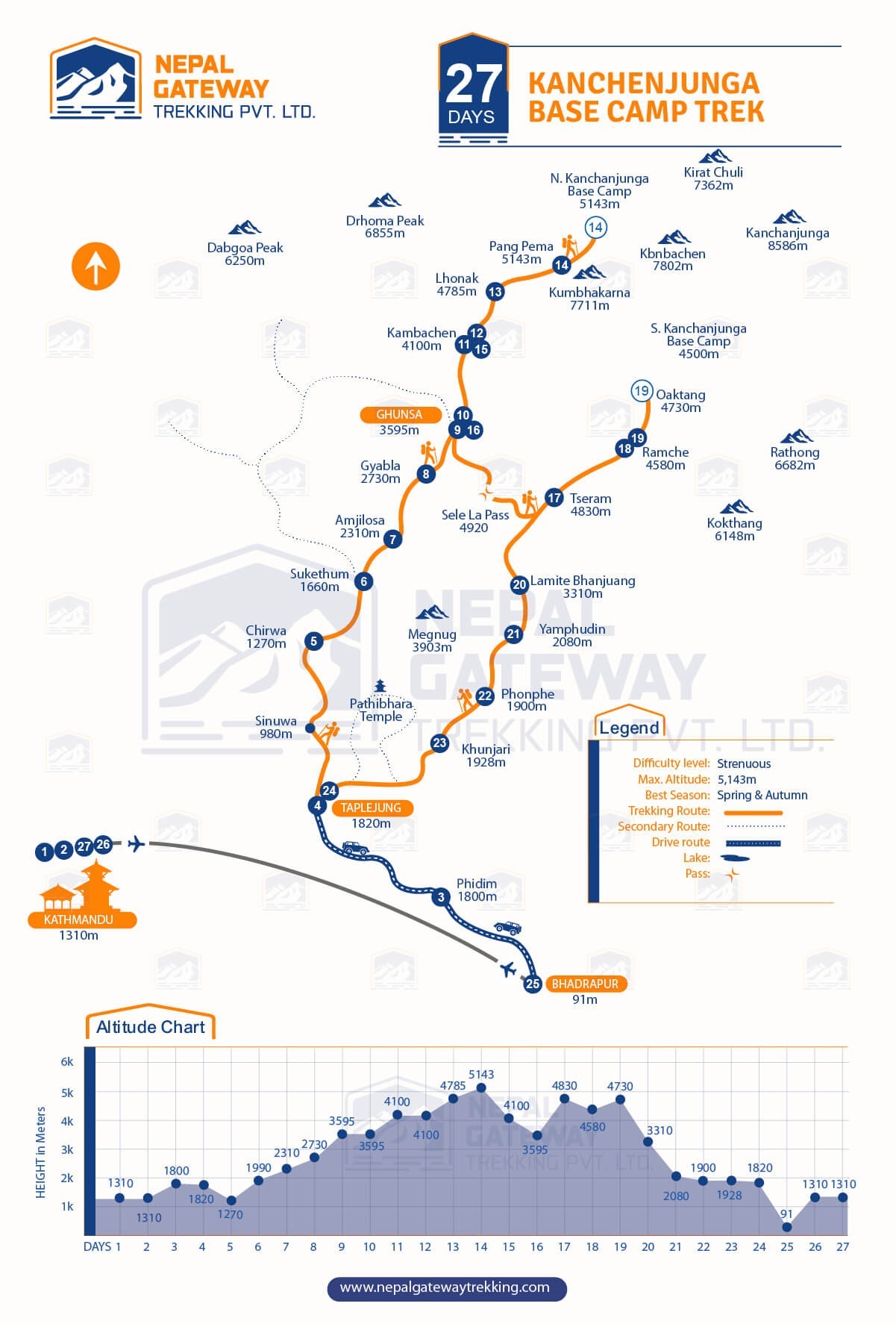
- All grounded transportation as per itinerary by private car
- One expert tour guide for Kathmandu Valley Sightseeing inclusive entrance fees
- Three nights’ accommodation in Kathmandu inclusive of breakfast
- Kathmandu – Bhadrapur – Kathmandu round flight ticket inclusive of domestic taxes
- Full board meals with tea and coffee prepared by our expert cook
- One highly experienced English speaking & friendly trekking guide and required porter including their expenses
- Kanchenjunga special permit fee and other necessary permits
- Kanchenjunga Base Camp Trekking map
- Nepal Gateway Company T-shirt
- Local fresh fruit
- First aid kit
- Evacuation assistance if needed
- Government taxes
- Office service charge
- Lunch and Dinner in Kathmandu
- Your travel insurance – Compulsory
- Nepal entry visa.
- Your international flight ticket to/from Kathmandu
- Your personal nature expenses, equipment and medical kit
- All kinds of hot and cold drinks and alcoholic beverages in trekking
- Hot shower, internet and phone call unless it is free
- Tipping to field staffs (Tipping is not mandatory but expected)
Useful Info
Altitude sickness in kanchenjunga circuit trekking (kanchenjunga base camp trek).
Because Kanchenjunga Circuit Trekking is a high-altitude venture, there are chances of altitude sickness. It is also widely known as acute mountain sickness that trekkers face if their bodies do not acclimatize while trekking.
If you follow our Kanchenjunga Circuit Trek itinerary, the risks of altitude sickness get very low. Our itinerary is professionally designed with ample rest days and many small hikes.
Kanchenjunga Circuit Trek Permit Cost
You need two permits for this trek. One is the Kanchenjunga Conservation Area Project Entry Permit (KCAP), and another is the restricted area permit (RAP). Our Kanchenjunga Circuit Trek cost includes both permit costs.
Kanchenjunga Conservation Area Project Entry Permit (KCAP) fee: Rs. 2000 per person
Restricted area permit (RAP) fee: USD 10 per person each week
Best Time for Kanchenjunga Base Camp Trek
The best time for the Kanchenjunga Base Camp Trek is spring (March to April) and autumn (October to November). It is a time when forests bloomed with a range of floras, and the trail becomes very impressive. The suitable conditions make the journey fabulous, and the clear sky presents fantastic views.
Wildlife and Vegetation in Kanchenjunga Circuit Trek
The Kanchenjunga Circuit trekking route ranges from the lowlands of Terai to coniferous forests, grasslands, and meadows. The Kanchenjunga Conservation Area is famous for its exotic wildlife like the red panda, royal Bengal tiger, Himalayan bear, musk deer, snow leopard, etc. The region is home to a variety of rhododendrons along with 69 varieties of orchids. You see pine, bamboo, fir, and hemlock forests along the way. At high elevations, more pines and junipers are found.
Last Minute Booking for Kanchenjunga Circuit Trek Package 2024
To book the Kanchenjunga Circuit Trek Package 2024 at the last minute, please call us or mail us. We do our best to make all the arrangements and organize the trek. You have to be available in Kathmandu on the day the trek begins. For last-minute bookings, 100% package cost payment is mandatory. If you cancel the last-minute booking, there will be a certain cancellation charge, and we refund the rest of the money.
Travel Tips for Kanchenjunga Base Camp Trekking Route
Accommodation: It's a tea house trek. Carry a warm sleeping bag. The washroom is generally common. Small twin-shared rooms are mostly available.
Food: The food option is quite limited on this trek. You get Nepali and Tibetan dishes. The upper part of the trail has more Tibetan meals like thenduk, Tibetan bread, momo, thukpa, etc. Carry snacks and bars to munch while trekking.
ATM: No ATM on the trekking route. You have the last chance to withdraw money in Kathmandu to use while trekking. Budget USD 12 to USD 15 each day.
Charging: We do not recommend you heavily rely on charging your device during the trek as it costs extra money. Instead, carry a solar charger and spare batteries.
Luggage: Porters carry duffel bags. One porter carries up to 20 kg, and the weight is divided between two trekkers. Trekkers can use a day pack during the trek.
Personal Expenses: Our trek package does not cover your souvenir shopping, additional snacks & beverages expenses, tipping, etc. Keep some money on you to pay for these things.
T ravel Insurance: Kanchenjunga Circuit Trekking needs travel insurance. As you have to get travel insurance in your home country ensure that it covers heli rescue and medical bills.
Tipping: Freely tip if you are happy with our staff members. There's no limit to tipping.
Q1. How difficult is Kanchenjunga Base Camp Trek?
Kanchenjunga Base Camp Trek is very difficult. If you are a new trekker, then do not go on this, or it will become a nightmare for you given the height, terrain, and isolation of the region.
Q2. Can we trek to Kanchenjunga?
Yes, you can trek to Kanchenjunga from Nepal. We have an adventurous trekking package that explores the north and south base camps of Mt. Kanchenjunga.
Q3. How long is the Kanchenjunga base camp trek?
We have a 27 days long Kanchenjunga Circuit Trek or Kanchenjunga base camp trek. Approximately, we cover 220 km during the trek. The itinerary and number of days may differ from one travel company to another.
Q4. What to expect from the Kanchenjunga trek?
You can expect sick mountain views, gorgeous waterfalls, lush forests, picturesque villages, and very simple accommodation & food from Kanchenjunga Circuit Trekking.
Q5. How is the Kanchenjunga circuit trek compared to others?
From other circuit treks in the Himalayas, Kanchenjunga is the most strenuous one that offers breathtaking diverse landscapes. It is not as famous as other circuit treks and relatively fewer tourists traverse its trodden routes. The trekking route has little tourist infrastructure.
Q6. How to hike the Kanchenjunga circuit?
To do Kanchenjunga Circuit Trek, you have to contact a local Nepali trekking company. You cannot trek solo or with an independent guide because of the restricted area. The travel company will get the permits for you and arrange the trek.
Q7. Is solo trekking allowed?
As we said earlier, solo trekking is not allowed in the Kanchenjunga area. The uneven topography and exotic flora & fauna of the region have made it a restricted area in Nepal. Rarely do travelers trek in this region.
Q8. What kind of person should avoid this trek?
If you are a novice trekker or not physically & mentally ready to endure the challenges of the journey, you should avoid Kanchenjunga Circuit Trek.
Client Reviews
Kanchenjunga Circuit Trek
We had a wonderful time on the Kanchenjunga circuit trek. Two base camps and a high mountain pass made for some truly spectacular scenery away from the crowds of Everest. Our guides, Dinesh and Tira were warm, friendly, attentive to our every need, knowledgeable and prepared for adventurous detours and spontaneous snowball fights. The route feels authentic and far removed from the modern world. Highly recommended. I’m told the scenery is just as good as Everest /Annapurna if not better.
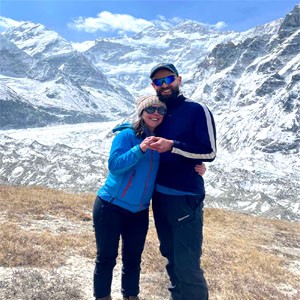
Similar Packages
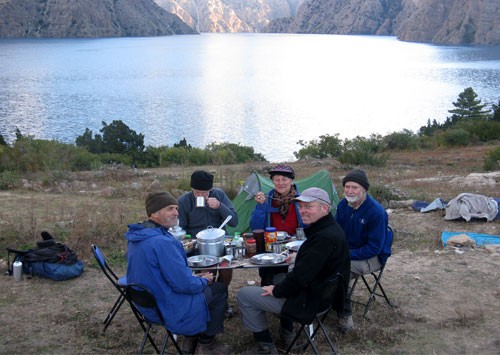
Lower Dolpo Trek - 17 Days
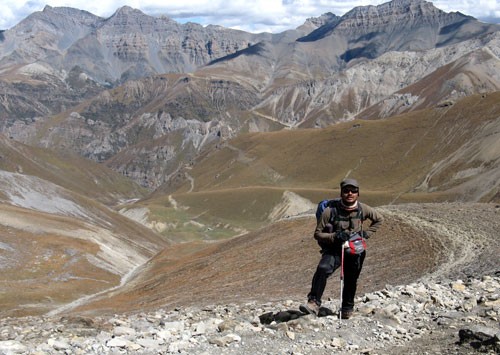
Upper Dolpo Trek - 27 Days
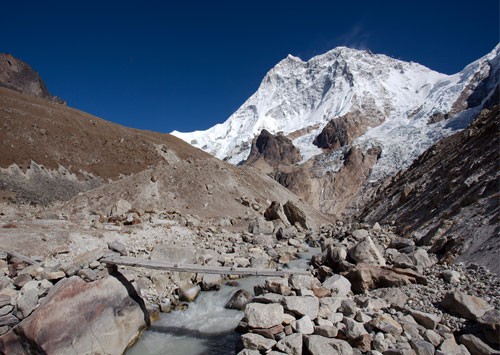
Makalu Base Camp Trek - 22 Days
Ask a question.
We use cookies to ensure that we give you the best experience on our website.
Mt Everest Base Camp Trekking Nepal with Base Camp Excursion
Base camp trekking in Nepal travel agency Kathmandu
Mount Kanchenjunga base camp trek Nepal complete guide
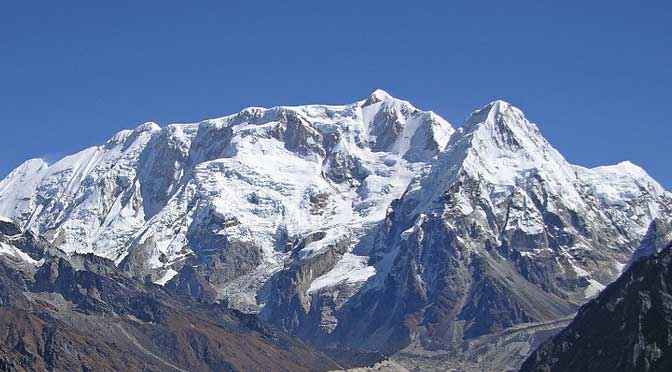
Mount Kanchenjunga base camp trek overview
Kanchenjunga base camp trek is an ideal trekking trial in the far eastern Nepal. Kanchenjunga base camp trek is opened in 1988 for foreign travelers. Put your own courage to the test with the Kanchenjunga base camp trek, coming in from the Nepal side. Kanchenjunga is the third highest mountain in the world at 8,586m and the 2nd highest peak of Nepal .
Kanchenjunga base camp trek suitable for those; who have enough time for walking holiday and interested to venture into the isolated corners of Nepal. Kanchenjunga base camp route is little bit long comparatively then other trekking routes of Nepal but worthwhile follows remote mountain ranges of Nepal explore around Kanchenjunga both the south and north base camp.
Besides main Kanchenjunga peak there are four subsidiary mountains all over 8000m and more than fifteen peaks over 6,000m to the surrounding. Trekking to Kanchenjunga is to explore wide range of scenery lush, tropical jungle including Rhododendron, chestnut and oak forests to the alpine zone.
Kanchenjunga region is also well known for home of the Red Panda and other snow animals, birds and plants. Kanchenjunga trip is the best option to familiar with culture, tradition and lifestyle of local people, villages. Kanchenjunga base camp trekking area is protected by the Kanchenjunga conservation area project.
There are two base camps of Kanchenjunga south and north given treks takes you both base camp of the third highest peak Mt. Kanchenjunga 8586m. Kanchenjunga is a huge massif located in the far northeast part of Nepal on the borders of Sikkim and Tibet.
Main attraction of the Kanchenjunga base camp trek are the magnificent views of the snow capped mountain, varied landscapes from the subtropical lowlands to the stunning glacial plateau, enchanting forests of rhododendrons and plenty of wildlife including the famous musk deer and blue sheep.
Best time for trekking in Kanchenjunga is spring and autumn season trek can arrange on camping and tea house basic. From the North base camp Pang Pema 5140m trek continue to south base camp crossing two passes, Lapsang La and Sinion/Mirgin La finally reach at Ramche.
Early in the morning hiking to south base camp, Yalung Glacier then trek continues back to Suketar. The Kanchenjunga base camp trek Nepal is a challenging series of hikes that will call out all of your physical resources so make sure you get in good shape before your scheduled trip.
Regular jogging, running, and other intense aerobic exercise are recommended. Suggested Kanchenjunga base camp trek cost & itinerary given below, if it is not suitable for you, we are happy to design another as per your desire and duration of holidays .
Mt. Kanchenjunga base camp trek itinerary
Day 01: Arrival day in Nepal.
Day 02: Kathmandu tours and preparation for Kanchenjunga trek.
Day 03: Flight from Kathmandu to Bhadrapur then drive to Ilam.
Day 04: Drive from Ilam to Taplejung (1820m).
Day 05: Trek from Taplejung to Mitlung (890m).
Day 06: Trek from Mitlung to Chirawa (1185m).
Day 07: Trek from Chirwa to Lelep (1510m).
Day 08: Trek from Lelep to Amjilessa (2498m).
Day 09: Trek from Amjilessa to Gyabla (2725m).
Day 10: Trek from Gyabla to Ghunsa (3415m).
Day 11: Rest day at Ghunsa for acclimatization.
Day 12: Trek from Ghunsa to Kambachen (4145m).
Day 13: Trek from Kambachen to Lhonk (4792m).
Day 14: Trek to Pang Pema (Kanchenjunga B. C. North (5140m) back to Lhonak
Day 15: Trek from Lhonak to Ghunsa (3415m).
Day 16: Trek from Ghunsa to Selele Kharka.
Day 17: Sinion la, Margin la & Selele pass 4685m camp at Tseram (3868m).
Day 18: Trek from Tseram to Ramche (4610m).
Day 19: Explore south base camp (4740m) Yalung glacier, back to Ramche.
Day 20: Trek from Ramche (4620m) to Torantan (2980m).
Day 21: Trek from Torntan (2990m) to Yamphudin (1692m).
Day 22: Trek from Yamphudin (1690m) to Phumphe danda.
Day 23: Trek to Kande Bhyanjyang 2190 meters / 7185 feet
Day 24: Trek to Lalikharka 2266 meters / 7434 feet
Day 25: Trek to Deurali than drive to Taplejung
Day 26: Drive to Bhadrapur evening flight to Kathmandu.
Day 27: Flight to Kathmandu, evening farewell dinner.
Day 28: After this amazing Kanchenjunga base camp tea house trek if you are interested for other activities like Safari , Rafting, Biking, Tours, Peak climbing or more trekking in other region we organize trip according to your desire. If you decide to leave Nepal we will transfer to airport for your onward destination.
Service include
# Airports pick up and drop by private vehicle.
# 5 star hotel in Kathmandu for 3 Nights twin sharing with breakfast.
# Full day guided sightseeing tour in Kathmandu.
# Grounded transportation and Flight KTM to Bhadrapur, suketar to KTM
# All meals and accommodation during Kanchenjunga trekking period
# An experienced English speaking guide trained by gov. of Nepal .
# Highly experienced Kanchenjunga base camp trekking staffs
# All governmental procedure permits fees and local taxes.
# Down jacket, sleeping bag, duffel bag, medical kit etc.
# Travel and rescue arrangements
# Welcome and farewell dinner at typical Nepalese restaurant.
Service exclude
*Visa fees / international airfare to and from Kathmandu
*Lunch and dinner in Kathmandu
*Travel / medical insurance and emergency evacuation cost.
*Hot shower, battery recharge during Kanchenjunga trek
*Personal expenses phone calls, bar bills, extra porters etc.
*Personal Kanchenjunga base camp trekking equipment’s / gears
*Tips for guides, porters and driver
*All others expenses not mentioned on price include section.
Base Camp Excursion , Kathmandu, Nepal always thinking about guest’s safety; It is our paramount concern whilst traveling with us. Trekking is an adventure tour we reach remote mountain region. Sometime health condition of member, natural disaster, and weather condition of mountain region changed unexpectedly we cannot guarantee it. Please note that trekking guide has the authority to cancel any part of Kanchenjunga base camp trek cost itinerary if it is necessary due to safety concerns, be prepared to be flexible if required, otherwise trekking group leader follow the above itinerary.
Additional information
Content of this website provide you the information as possible about Kanchenjunga base camp trekking cost of trip. If you need extra information and wish to discuss any aspect of Kanchenjunga base camp trek or your suitability for it please contact us; If you would like to speak with a reservations consultant, feel free to make a call at 977 9843051359
Holiday Trip Fact
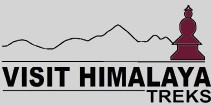
- Company Profile
- COVID-19 Update
Kanchenjunga Base Camp Trek
- Manaslu Tsum Valley Trek
- Kanchenjunga Yangma Valley Trekking
- Kanchenjunga Circuit Trek
- Makalu Base Camp Trek
- Lumba Sumba Pass Trek
- Makalu Base Camp Sherpani Col Trek
- Rara Upper Dolpo Trek Via GHT Trail
- Rolwaling Tashi Lapcha Pass Trek
- Kanchenjunga To Makalu Base Camp Trek
- Rara Lake Humla Yari Valley Trek
- Manaslu Circuit Trek
- Upper Dolpo Trek
- Lower Dolpo Trek
- Humla Limi Valley Trek
- Rara Lake Trek
- Manaslu Circuit Rupina La Pass Trek
- Tsum Valley Ganesh Himal Base Camp Trek
- Annapurna Circuit Trek
- Annapurna Tilicho Lake Trek
- Annapurna Base Camp Trek
- Ghorepani Poon Hill Trek
- Upper Mustang Trek, Itinerary, Package, And Cost.
- Annapurna Community Lodge Trek
- Mardi Himal Trek
- Nar Phu Valley Trek
- Nar Phu Annapurna Tilicho Pass Trek
- Nar Phu Teri La Pass Upper Mustang Trek
- Dhaulagiri Circuit Trek
- Jaljala Dhorpatan Trek
- Everest Base Camp Trek
- The 13 Days Everest Base Camp Trek
- Gokyo Lake Cho La Pass EBC Trek
- Gokyo Lakes Renjo La Pass Trek
- Gokyo Lakes Cho Oyu Base Camp Trek
- Everest Three Passes Trek
- Jiri To Gokyo Everest Base Camp Trek
- Everest Panorama Trek
- Everest Luxury Trek
- Pikey Peak Dudhkunda Lake Trek
- Pikey Peak Trek
- Numbur Cheese Circuit Trek
- Everest Base Camp Chola Pass Gokyo Trek
- Tamang Heritage Trek
- Langtang Gosainkunda Lake Trek
- Helambu Circuit Trek
- Ganesh Himal Base Camp Trek
- Ganesh Himal Panorama Trek
- Langtang Valley Trek
- Jugal Himal Base Camp Trek
- Mera Peak Climbing
- Everest Three Peaks Climbing
- Mera Peak And Island Peak Climbing
- Island Peak Climbing With Everest Base Camp Trek
- Lobuche Peak Climbing With Everest Base Camp Trek
- Nirekha Peak Climbing
- Parchamo Peak Climbing
- Ramdung Peak Climbing
- Larkya Peak Climbing With Manaslu Circuit Trek
- Chulu Far East Peak Climbing
- Pisang Peak Climbing
- Naya Kanga Peak Climbing
- Yala Peak Climbing
- Saribung Peak Climbing
- Bokta Peak Climbing
- Norbu Kang Peak Climbing
- Ama Dablam Expedition
- Mount Baruntse Expedition
- Mount Himlung Expedition
- Putha Hiunchuli Expedition
- Chitwan National Park 2N 3D Luxury Tour
- Chitwan National Park 3N 4D Luxury Tour
- Chitwan National Park 4N 5D Luxury Tour
- Chitwan Tiger Tops Safari 3N 4D Tour
- Chitwan National Park 2N 3D Budget Tour
- Chitwan National Park 3N 4D Budget Tour
- Chitwan National Park 4N 5D Budget Tour
- Bardiya National Park 2N 3D Tour
- Bardiya National Park 3N 4D Tour
- Bardiya National Park 4N 5D Tour
- Mountain Flight Everest Experience
- Everest Experience Trekking Tour
- Family Holiday Tour Package In Nepal
- Experience Best Of Nepal Tour
- Discover Nepal Tour
- Chitwan National Park Tour
- Bardia National Park Tour
- Bandipur Village Tour
- Muktinath Temple Tour
- Khotang Halesi Tour
- Nagarkot Day Hike
- Dhulikhel Day Hike
- Shivapuri Hill Day Hike
- One Day Trisuli River Rafting
- Marshyangdi River Rafting
- Mustang Tiji Festival Trek
- Everest Base Camp Helicopter Tour
- Annapurna Base Camp Helicopter Tour
- Luxury Holiday Tour In Nepal
- Upper Mustang Jeep Ride Tour
- Everest Base Camp Trek With Helicopter Return
Adventure Activities Awaits You
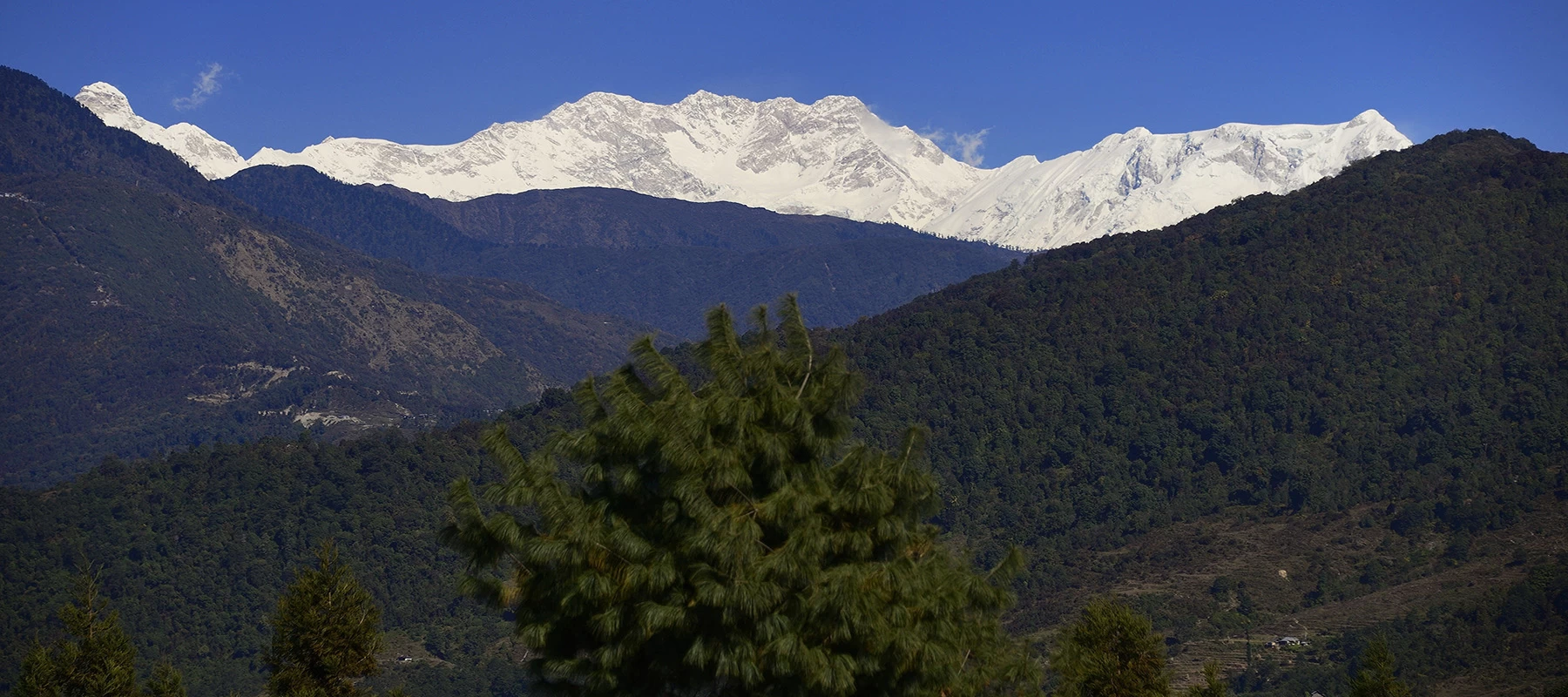
Janu, Kanchenjunga and Talung Panorama View
- Trekking & Hiking >>
- Off The Beaten Track >>
- Kanchenjunga Base Camp Trek >>
The Kanchenjunga Base Camp Trek is of 26 Days , with actually 22 days of challenging and unforgettable trek that will take you through some of Nepal's most beautiful landscapes. The entire trek to Kanchenjunga Base Camp covers a distance of 220km which offers an exhilarating and captivating experience. With breathtaking views of the Kanchenjunga massif, remote villages, and high-altitude terrain, this trek is perfect for experienced trekkers looking for an epic adventure. While trekking to the third-highest mountain in the world, located in eastern Nepal, you will traverse remote villages, traverse through alpine forests, and navigate high-altitude terrains, all while being rewarded with awe-inspiring vistas along the way. This Kanchenjunga Base Camp Trek route takes you to both South and North Base Camp, from where you can view a wide range of spectacular scenery, tropical jungle, culture, and traditional (Hindu & Buddhism) typical local villages.
Trekking to Kanchenjunga is one of the most adventurous, challenging, and exciting Treks in Nepal . If you're an avid trekker and have always wanted to challenge yourself with a high-altitude trek, it’s definitely for you.
- Exciting trekking experience around the Kanchenjunga circuit world’s third-highest peak.
- Breathtaking Kanchenjunga south view from Oktang, Oktang is the best viewpoint of the trek.
- Majestic Mountain north view from Pangpema base camp known as Kanchenjunga north base camp.
- Touching the Spectacular Tibetan village Ghunsa & Phale.
- Feel a real Wilderness trekking experience untouched trekking zone.
- Stunning views of the Kanchenjunga Massif.
- Remote villages and cultural immersion.
- High-altitude terrain and challenging passes.
- Biodiverse landscapes and wildlife
Trekking to Kanchenjunga in Nepal is a challenging adventure that takes you through remote villages, high-altitude terrain, and the biodiverse Kanchenjunga Conservation Area. The trek offers a unique blend of cultural immersion, natural beauty, and stunning mountain views. The cultural immersion aspect of this trek is special, as you get to interact with the local people and witness their way of life. The trekking culminates at Kanchenjunga Base Camp and Pangpema, offering breathtaking views of the Kanchenjunga mountain range. We have a comprehensive article that covers everything you need to know about trekking to Kanchenjunga in Nepal , ensuring you are well-prepared and informed beforehand. Feel free to read, it's written for you.
This video shows a glimpse of what the Trekking experience looks like.
Kanchenjunga Base Camp Trek Attractions
The route leading to Kanchenjunga Base Camp takes you through the scenic Arun Valley, widely regarded as one of the most beautiful trekking regions in Nepal. A prominent feature of this trek is the expansive Kanchenjunga Conservation area, spanning an impressive 2035 square kilometers. Within this area, a rich array of flora and fauna thrives, including the Himalayan black bear, musk deer, snow leopard, red panda, wild boar, and numerous other species. As you venture towards the base camp, the landscape unfolds in a captivating manner, transitioning from alpine grasslands to sub-tropical forests, meandering river valleys, glacial moraines, and rugged scree slopes. The trekking starts passing through typical hilly terraced villages and heads to the southern base camp of Kanchenjunga. On a trek to the south base camp, Oktang (4730 meters) is a spectacular viewpoint. It provides views of Kokthang (6148 meters), Rathong (6678 meters), Kabru Range, Kanchenjunga Range, and Jannu (7710 meters). These three scenic and tiring passes separate the northern and southern base camps of Kanchenjunga. On the other hand, there are more settlements, and Ghunsa (3475 meters), a lovely Tibetans Buddhist village is one of the biggest villages in the whole higher valleys of the Kanchenjunga Region. Kambachen (4225 meters) and Lhonak (4815 meters) are the only other two seasonal settlements situated higher than Ghunsa. At the end of the valley, Pangpema (5150 meters) offers full circular views of Kanchenjunga (8586 meters), Kangbachen (7903 meters), Ramtang Peak (6601 meters), Taple Sikhar (6341 meters), Nepal Chuli (6910 meters) and Kirat Chuli (7365 meters).
Check out for more 11 Must-see Attractions of Kanchenjunga Trekking. You don't want to miss it
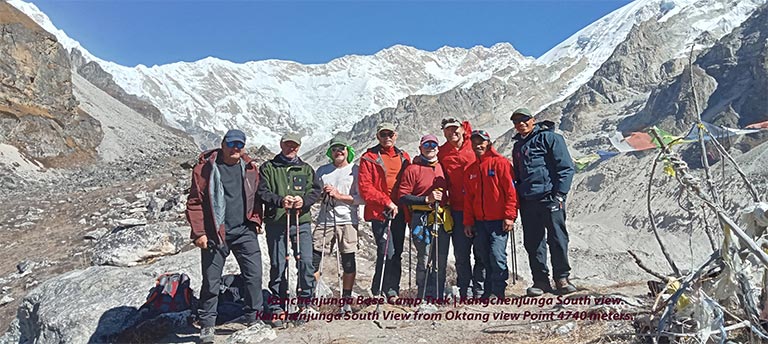
Kanchenjunga Base Camp Trek Route Map
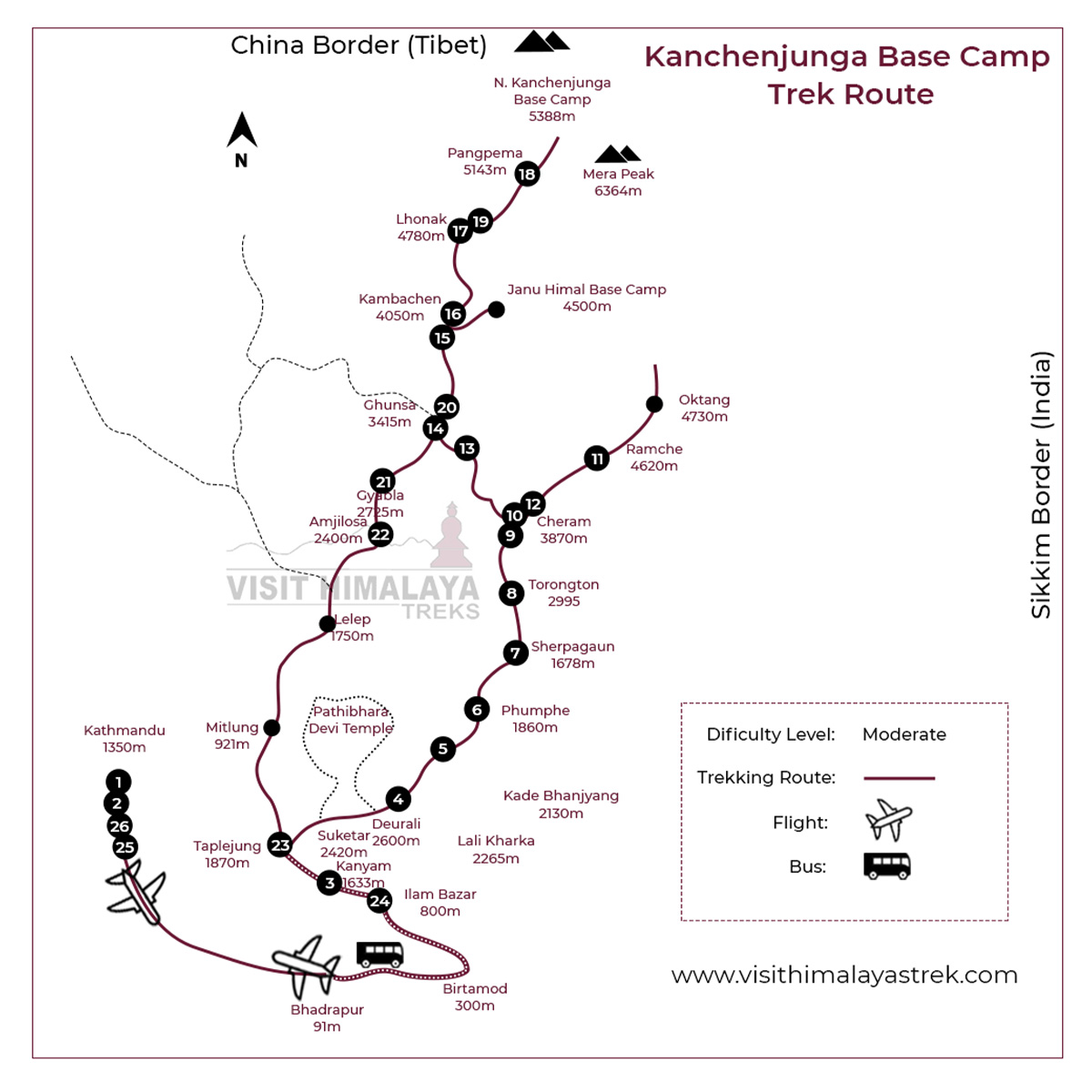
We start our trekking route by taking a flight to Bhadrapur and then embarking on a trek to reach Oktang, which serves as the southern base camp. Afterward, we retrace our steps to Tseram and trek towards the northern side at Pang Pema, before returning to Suketar.
What is the altitude of the Kanchenjunga base camp?
This chart shows the altitude from the day you arrive in Nepal, trek up to Kanchenjunga Base Camp till the Departure back to your home. Mount Kanchenjunga is located in Far Eastern Nepal, between Nepal and Sikkim. During your Trekking to Kanchenjunga, you will visit Kanchenjunga South Base Camp and Kanchenjunga North base camp. Ramche 4580 meters is the Kanchenjunga South base camp where trekking groups stop overnight here at Ramche. And they do day hikes to Oktang viewpoint 4730 meters to enjoy the super view of Mount Kanchenjunga Southside and Yalung Glacier views. After visiting Kanchenjunga's South Side, the trekking continues to Kanchenjunga North Base Camp. Pang Pema 5143 meters is the Kanchenjunga North Base Camp where trekking groups stop overnight. From Pang Pema, we can explore super views of Kanchenjunga North and Kanchenjunga Glacier.
Summary of Kanchenjunga Base Camp Trek Itinerary
Day 01: Arrive in Kathmandu (1350 meters) Day 02: Sightseeing and Trek Preparation. Day 03: Flight to Bhadrapur (91 meters) and drive to Kanyam. Day 04: After breakfast drive to Suketar and Trek to Lali Kharkha. (2265 meters). Day 05: Trek to Kade Banjyang (2130 meters). Day 06: Trek to Phumphe Danda (1858 meters). Day 07: Trek to Sherpaguan (2080 meters). Day 08: Trek to Torongton (2995 meters). Day 09: Trek to Tseram (3870 meters). Day 10: Acclimatization Day at Tseram. Day 11: Trek to Ramche (4615 meters). Day 12: Trek to Oktang viewpoint and Back to Tseram (3870 meters). Day 13: Trek to Sele La (4290 meters). Day 14: Trek to Ghunsa (3475 meters). Day 15: Trek to Kambachen (4050 meters). Day 16: Side trip to Janu Himal Base Camp (4500 meters) Day 17: Trek to Lhonak (4815 meters). Day 18: Trek to Pang Pema (5150 meters) Day 19: Day hike to Domo Ri peak view Point and back to Lhonak. Day 20: Trek back to Ghunsa. Day 21: Trek back to Gyabla (2725 meters) Day 22: Trek back to Amjilosa (2510 meters). Day 23: Trek back to Ranipul and drive to Taplejung. Day 24: Drive to Kanyam tea garden and stay overnight at Hotel. Day 25: Drive to Bhadrapur and fly to Kathmandu. Day 26: Departure.
- Trekking Boots: Sturdy, comfortable, with ankle support and waterproofing.
- Sleeping Bag: High-quality, rated for temperatures below freezing (-20°C).
- Clothing: Layered approach, including moisture-wicking base layers, insulation layers, and windproof/waterproof outer layers.
- Headwear and Gloves: Warm beanie, sun hat, thick gloves for warmth, and thinner gloves for dexterity.
- Backpack: Good quality, 50-60 liter capacity to carry gear and essentials.
- Trekking Poles: Adjustable, lightweight poles for balance and knee support.
- Sunglasses and Sunscreen: UV-protective sunglasses and high-SPF sunscreen for sun protection.
- First Aid Kit: A basic Kit with essential medications and supplies.
- Water Bottles or Hydration System: Carry at least two reusable bottles with purifiers.
Click to download the checklist for the gear list.
Necessary permits and documents
- Kanchenjunga Restricted Permits fees are $ 20 per person/Per week.
- Kanchenjunga conservation fees are $30 per/ person.
- TIMS (Trekkers information management system Card) fees are $20 per person.
- To obtain the restricted permits, a required original passport is required with a valid Visa.
- Travel Insurance: It is highly recommended that all trekkers obtain comprehensive travel insurance before trekking.
- The insurance should cover emergency medical expenses, evacuation, and Search.
01: Everything you need to know about trekking to Kanchenjunga in Nepal. 02: Best Itinerary For Kanchenjunga Base Camp Trekking In Nepal. 03: Wilderness Trekking To Kanchenjunga Base Camp . 04: Kanchenjunga Base Camp Trek Video.
Why VHT is the Best Trekking Company for Kanchenjunga Base Camp Trek
VHT (Visit Himalaya Treks) is a reputable and experienced trekking company in Nepal that prioritizes safety and offers customizable itineraries at affordable prices. VHT has always provided the Itinerary for the Best price to Travelers who want to do Trekking to Kanchenjunga Base Camp. Their team of knowledgeable guides is well-equipped to handle any unforeseen challenges that may arise during the trek. VHT is committed to responsible tourism and has supported local businesses while using eco-friendly practices in their operations since 2009. They have a proven track record of organizing successful treks in the Himalayas and are a good choice for your Kanchenjunga base camp trek.
FAQs for the Kanchenjunga Base Camp Trek
When is the best time for kanchenjunga base camp trek.
The best time to trek to Kanchenjunga in Nepal is during the spring (March to May) and autumn (September to November) seasons due to clear skies, moderate temperatures, and stable weather. Avoid trekking during the summer (June to August) due to heavy rainfall and the winter (December to February) due to snow and freezing temperatures. Consider checking out When Is The Best Time For Trekking To Kanchenjunga Base Camp In Nepal? in detail so you could better understand the best season to trek.
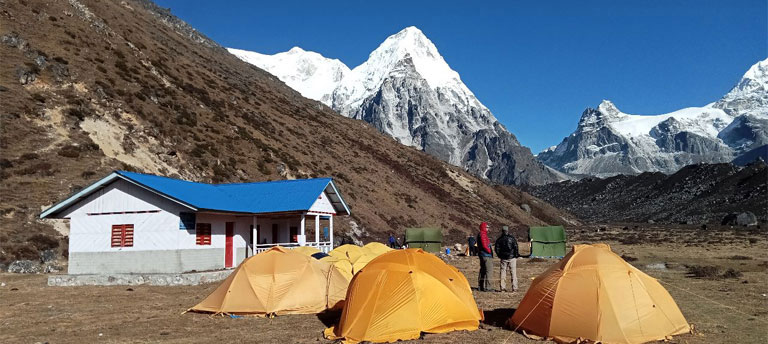
How difficult is the Kanchenjunga Base Camp Trek in Nepal?
Kanchenjunga Base Camp Trek is considered a difficult & challenging one, due to its remote location, high altitude, and rugged terrain. The trek involves steep ascents and descents, crossing several high mountain passes, and trekking through remote valleys & forests. The highest point during Kanchenjunga north base camp trek is at Pang Pema, 4785 meters. Whereas the Kanchenjunga south base camp trek's highest point is 4160 meters. Compared to South Base Camp, North Base Camp is a difficult and challenging one. The trek requires a high level of fitness and endurance, as trekkers will need to walk for several hours each day at high altitudes. Altitude sickness is also a concern on this trek due to the high elevation. It is recommended that trekkers have previous trekking experience and prepare themselves physically and mentally before attempting the trek. Hiring a local guide or porter is also advisable to navigate the challenging terrain and ensure safety on the trek.
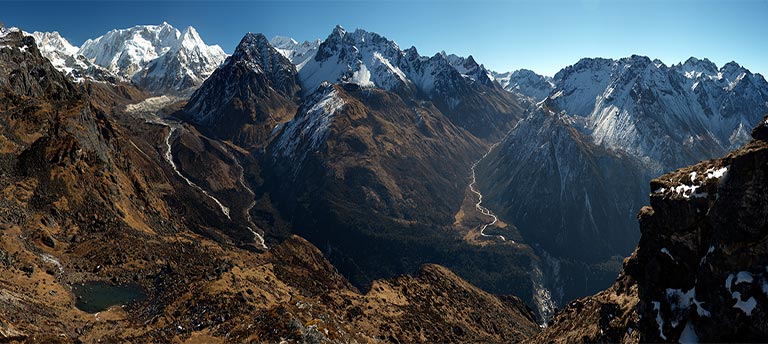
Which is the base camp of Mt. Kanchenjunga?
There are actually two base camps for Kanchenjunga: North Base Camp (Pang Pema 5143 meters) , which is located in Tibet, and South Base Camp (Ramche 4580 meters) , which is located in Nepal. The base camp of Kanchenjunga, the third-highest mountain in the world, is located on the south side of the mountain in Nepal. The South Base Camp of Kanchenjunga is the more popular and accessible of the two. It is located in the Taplejung district of eastern Nepal and can be reached via a multi-day trek from the town of Suketar. The trek to the Kanchenjunga South Base Camp offers stunning views of the Himalayan range and takes trekkers through remote valleys, forests, and mountain passes before reaching the base camp at an altitude of 5,143 meters (16,873 feet).
How much does it cost to Trek the Kanchenjunga Base Camp?
Trekking to Kanchenjunga Base Camp will cost USD 1180 per person which will be an epic 18 Days in total. And we run the Kanchenjunga circuit trek minimum group size of 2 people in the group. However, the cost of trekking to Kanchenjunga in Nepal can vary depending on several factors. Such as the duration of the trek, the route taken, and the level of service required. For a luxury Camping Trek in Kanchenjunga, we offer the Upper Kanchenjunga Yangma Valley Camping Trek for USD 6800 per person. We run the Kanchenjunga Yangma Valley Camping trek with a minimum group size of 2 trekkers and a maximum of 10 trekkers. Similarly, Visit Himalaya Treks offers Kanchenjunga South and North Base Camp tea house treks for USD 2600 per person with a minimum group size of 2 people.
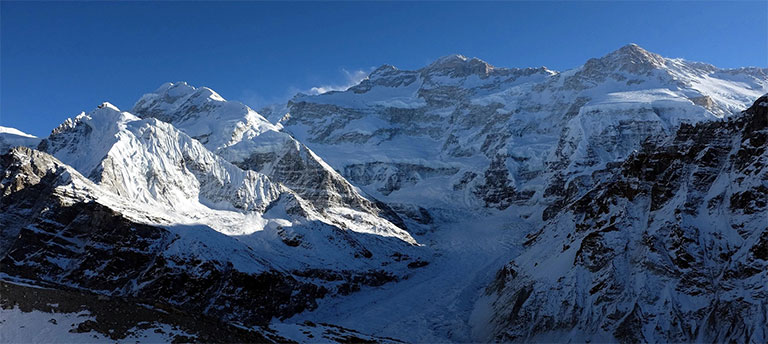
Is it possible to Trek the Kanchenjunga solo?
No, it is not possible to trek solo as the area is restricted and requires a special trekking permit. According to the rules of the Nepal government, trekkers must have a minimum of two people in their group and must be accompanied by a licensed guide or porter. This is to ensure the safety and well-being of trekkers, as the Kanchenjunga region is remote, and the terrain can be challenging and difficult to navigate. Moreover, having a guide or porter can be helpful in providing local knowledge, assistance with carrying equipment and supplies, and ensuring proper acclimatization to high altitudes. They can also help in case of emergencies or health issues, which can be particularly important in remote areas like Kanchenjunga. Therefore, it is advisable to hire a licensed guide or porter to ensure a safe and enjoyable trekking experience in Kanchenjunga.
A Real authentic destination Kanchenjunga Base Camp Trek with Visit Himalaya Treks
Kanchenjunga Base Camp Trek Detail Itinerary
A representative from Visit Himalaya Treks with the company’s display board will greet you outside the arrival terminal and transfer you to your Hotel. (Overnight at Hotel)
Full-day guided tour to several historical and spiritual attractions enlisted under the World Heritage Sites. After Sightseeing the trek leader will meet the group for a meeting and provide a detailed briefing on the trek. All the required information regarding the trek would be provided. (Overnight at Hotel. Breakfast included)
After breakfast drive to Bhadrapur airport and fly to Kathmandu, receive at the airport and transfer to Hotel, evening cultural dinner overnight at Kathmandu Hotel.
A representative from Visit Himalaya Treks Pvt. Ltd. will check your flight tickets and transfer you to the airport three hours from your flight with the hope of seeing you again in the future. (Breakfast included)
Cost Includes
- Arrivals and departure transport by car, Van, Bus (We will collect you from the Kathmandu international airport) and transfer to Hotel.
- Full-day sightseeing in Kathmandu (Swayambhunath temple, Boudhanath stupa, Pashupatinath temple, and Kathmandu durbar squire) with city guide and necessary land transport.
- Accommodation in Kathmandu before and after the trek (2 nights before the trek and 1 night after the trek) 2 in-sharing basis with Breakfast. (3-star categories hotel)
- Land transport – Hotel to airport and airport to Hotel upon arrival from Bhadrapur in the end.
- Domestic flight – Kathmandu – Bhadrapur – Kathmandu.
- Land transport from Bhadrapur – Taplejung – Suketar – and Suketar – Bhadrapur by private jeep.
- Accommodation of all meals (breakfast, Lunch, dinner tea coffee) while on the trek at the tea house.
- Kanchenjunga restricted area entry permits, Kanchenjunga conservation entry permits including TIMS Card.
- Experience government license holder trekking guide, including his accommodation, food, and wages.
- Porter (1 porter for 2 clients) including his accommodation, food, wages (porter can carry 25 to 30KG total (each client baggage’s load 12 to 15KG)
- Airfare for Guide – Kathmandu – Bhadrapur – Kathmandu. Land transport for porter Kathmandu – Taplejung – Kathmandu.
- Gears for porters (Jacket, trousers, shoes)
- Medicine Kit
- Government taxes and service charges.
Cost Excludes
- Nepal entry visa Fee.
- Entrances fee for sightseeing sports.
- Personal Travel insurance.
- Lunch and dinner in Kathmandu before and after the trek.
- Drinking water, shower, and hard and soft drinks cost.
- Telephone, Landry, personal tips for driver, guide, and porter.
Cost & Date
- Group Journey
- Personalized Journey
Start Dates are your arrival date in Nepal and End Dates are the returning date from Nepal.
The set departure dates listed are specially quoted and specified for group joining option. Let us know if the set departure dates are not suitable for you- another dates which are suitable for you can certainly be added by us.
Upcoming Trip Departure
- Guaranteed - Trip is Guaranteed to run
- Available - Trip is available to run if minimum group size is filled
- Limited - Only few space available
- Booking Closed - Maximum group size is filled
Check Available Dates
Looking for a personalized experience? We organize a privately guided trip designed to fit your taste and interest. Please fill out the form below to get started.
Reviews ( 19 Reviews For This Package )
Please wait..., howard and sue dengate, from australia, kangchenjunga base camp trek for the third time..
My wife and I have now completed 14 trips to remote areas with Visit Himalaya Treks to complete satisfaction. Our most recent trek, Kangchenjunga for the third time over 24 days in November 2023, was made particularly fantastic by guide Krishna Bohara, who was experienced, knowledgeable, and kind. In particular, he carefully assessed our capacity on a daily basis and worked within that to provide a truly outstanding and memorable trek. He is quiet and very effective, proficient, and professional. Thanks too to Tara Tamang, our always-smiling porter. Howard and Sue Dengate. From Australia Date: November 6 – 29 – 2023.
Lars Soderstrom, Sweden
Kanchenjunga basecamps trek.
There is a reason why this agency have so great reviews for sure.I was totally happy with both -the (email) service before even going-loads of info and prompt responses -the designated guide-a gem and I was even offered money by someone esle on the trek to switch-it was a joke of course but he was THAT good (ask for Tek if you do Kanchenjunga)
One caveat I did not check around for better prices elsewhere but when I heard what others were charged it seemed totally fair. This agency specializes in the more off the beaten treks I would stongly suggest (as always) that you try to book directly with a local company so the money goes to the correct place.I met a group from Europe +10 trekkers who had booked via an european trekking company and they all payed more for their trip that I did and I had a personal guide and also one porter so save money and do the right thing and go directly to a local agency. I have absolutely no problem in wholeheartedly recommending visit Himalaya Treks in fact I intend to try to do the long (42 days) extended Dolpha trek here in a year or two and I will definitely use Visit Himalaya Treks for that…and coming back is the best review of all Id say. Date - October - November - 2022.
Svein Gierbo, From - Norway
Solo kanchenjunga south and north basecamp trek.
I did the Kanchenjunga South and North basecamp trek with Visit Himalaya Treks in March 2022. I was one of the first trekkers on this trek after Nepal opened after the pandemic closedown. With Tek as guide and Dil as porter I was in very good hands. Tek knows the area as his on pocket, and knows “everyone” along the route. The tea house in Ramche had not opened so Tek arranged with tents, other equipment, and extra porter other equipment from Tseram. This is my second trip with Visit Himalaya treks, and Himal is very good at taking care of you from the first e-mail until he drops you at the airport after your trip. March -03 -30 – 2022.
Lynn Cecile Suter, From - Switzerland
Rachel javet, from - switzerland.
Amazing trek with great guide ! Thank to Himal and your guide Ishwar for this amazing trip in Kanchenjunga area. I appreciated really the flexibility with the intinerary and the great professionalism and reactivity of our guide who manage everything for one member of the group with knee injury. November - 2021
We always try to be flexible to design the trip itinerary for our client’s needs. However, if you are not convinced as our suggested itinerary then off-course you are always welcome to customize or change the trip itinerary.
Holiday should never be about making it to the final point quickly. Along your trek, we can add days at your request with additional costs to cover guides, porters, accommodation, and food.
An average physical fitness should be maintained prior to booking a trek. Any sort of illness or recent medical problems should be mentioned while booking a trip. Most of our itineraries are prepared to give you maximum time to acclimatize and pace-setting on the treks would be done according to your convenience. If you are having regular medication then tell us before the trip started which would be better for us to give you the physical feedback.
Our main concern is your safety. We never compromised on your safety during the Trekking and all our guides are properly trained and well equipped to take care of our client's safety in even the remote areas as well.
There would be always back support in case of an emergency situation like severe high altitude sickness or accident (which is least expected), you will be sent to the nearest hospital if possible otherwise rescued by a helicopter and sent you to the hospital as soon as possible. Since you are entirely liable for all the expenses incurred for the use of such emergency services, please make sure that your travel insurance covers both- medical and emergency evacuation costs.
It is not a problem at all because in a mountain most of the tea house/lodges serve vegetarian food as well and our guide will take care at the time cooking and on a camping trek, our cook and staffs will care all about the food section.
Most of the lodges in the mountains are the basic ones like a guest house or tea house style. On a few major towns or settlements, where are the possibilities we provide you with the best accommodation! Also, it depends upon the service packages.
Lately, most of the teahouses have electricity supply even with solar panels. So, charging your gadgets is not a problem at all. But charging your battery you should have to pay an additional fee (US$ 1 to 3 approx. per hour.), in order to get your gadgets to be charged.
Now a day’s most of the major village has a cell phone network connection. However, in a remote area where cell phone does not work, and even if there is not any other communication access then we send satellite phone along with our guide so you can always be in touch with your family.
Yes, either you can store the same hotel as you stayed or we can store your goods with us safely in our office free of cost.
The luggage must not exceed up to 20 kilos. A trekking helper (porter) carries baggage of less than 15 kilos. This bag can be received at the end of each day’s trek and you should carry the rest of the weight as a day bag with all your money and valuables inside it.
This is a difficult thing to gauge. We have seen everything from USD 25 to USD 900 per person for guides and porters. Tipping is not required, but a small gesture of thanks to your guides and local porters. The level of the tip should reflect the level of satisfaction from and personal involvement with your guide. However, we recommend you to spend a minimum of 10% of your total trip cost for tipping the entire local staff.
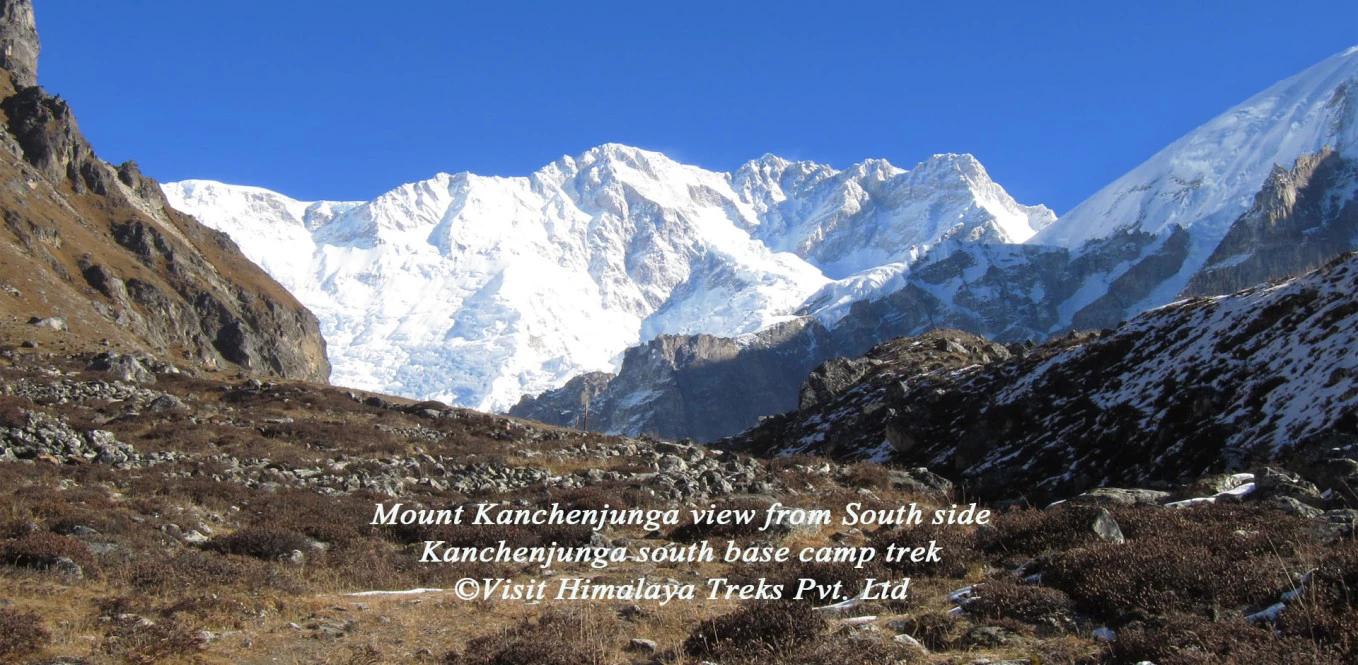
Best Selling Trip
TRIP OVERVIEW
QUICK INQUIRY
Don't have account create here.
Kanchenjunga Base Camp Trek

We Offer Group Discount
- Best Price Guarantee
- Hassle-Free Booking
- Team of highly experienced Experts
- 24/7 Customer Support
All Inclusive Cost
This famous Kanchenjunga Base Camp trek takes you to both the north and south base camps of Mt. Kanchenjunga (8586m) the third world’s third-highest mountain. This 20 day Kanchenjunga Circuit Trek is famous for its glorious snow-clad peaks, high altitude alpine crossings, lush green valleys, and raging glacial rivers - all in one complete package!
Mt. Kanchenjunga is situated on the border with Sikkim in India and Tibet. The north and south case camp of Kanchenjunga are isolated, unspoiled, and will leave you awestruck. This is a trek to divine heights and the memories will last you a lifetime.
There are some physical challenges along the trail, such as the high altitude Lapsang La Pass (5108m) and Sinon/Mirgin La Pass (4650m) and Kanchenjunga Base Camp at 5140m. You will have time before reaching these heights to acclimatize at lower levels.
Mount Kanchenjunga, meaning "Five treasures of the snow" is within the protected Kanchenjunga conservation area, established in 1997 and covers over 2035 sq km.
The World Wildlife Fund (WWF) has classified the Kanchenjunga Conservation Area Project (KCAP) as a Global Eco Region. There are a number of fascinating species in this region, such as red panda, wild bear, musk deer, blue sheep, rhesus macaw, and the elusive snow leopard. The birdlife along the trek is abundant and brings the forests alive with song. There are over 1200 types of flowering plants, 69 kinds of orchids and 30 rhododendron species that brighten the trail – most especially during spring.
As well as Kanchenjunga there are four other peaks exceeding 8,000m, one is Kanchenjunga West, also known as Yalung Kang (8,586m). There are more than 17 peaks with an altitude of more than 7000m, including Kambachen (7,903m), Janu (7,710m), Jongsong (7,483m), Kabru (7,353m), Tent Peak (7,365m) and the Twins (7,350m). Besides these massive peaks there are a number of peaks over 6,000m. Surrounded by this astounding cluster of peaks are five major glaciers: Zumu, Talung, and Rathong that run into Sikkim and in the west the Kanchenjunga and Yulang Glaciers that flow into the extraordinary swift Tamor River in Nepal.
The trek along the Kanchenjunga Circuit is rough and at times physically demanding and hard going, but this is what makes this trek different from the rest.
Day 1 : Arrival in Kathmandu and transfer to hotel (1,400m).
On your arrival at Kathmandu Tribhuvan International Airport, you will be met by Sherpa Expedition and trekking staff and transferred to your respective hotels followed by a briefing regarding Kanchenjunga Base Camp Trek.
Day 2 : Explore Kathmandu and prepare for trek
Today, we will spend the day sightseeing in Kathmandu Valley with our guide. We will visit Pashupatinath, which is regarded as the holiest Hindu temple in Nepal and where pilgrims worship Lord Shiva (situated on the banks of the holy Bagmati River), Bouddhanath, a Buddhist temple known as ‘Little Tibet’ and then on to Swayambhunath known as the Monkey Temple. From Swayambhunath we drive to Kathmandu’s famous Durbar Square, a UNESCO World Heritage-listed site and located in front of the old royal palace. Upon arriving back at your hotel you may have time to do some last-minute shopping around Thamel – the tourist hub of Kathmandu. Back at your hotel your guide will help you prepare for your trek.
Day 3 : Fly from Kathmandu to Bhadrapur (45 min) & drive to Suketar (2,420m) Duration: 8-10 hours.
Today we will pick you up from your hotel and take you to the airport for your flight to Bhadrapur and then we will drive to Suketar, a seven to eight-hour drive. We will stay overnight at Suketar.
Day 4 : Trek from Suketar to Lali Kharka (2,266m) Duration: 4-5 hours.
Today our trek begins with a relatively relaxed four to five-hour hike through lush forests and finally on to Lali Kharka Village where we stay the night.
Day 5 : Trek from Lali Kharka to Kande Bhanjyang (2,190m) Duration: 5-6 hours.
After an early breakfast we follow the trail that ascends to Simbu Village and then have a steep ascent to Kande Bhanjyang Village. Along the trail we pass through several small village and forested areas before reaching Kande Bhanjyang Village where we stay the night.
Day 6 : Trek from Kande Bhanjyang to Phumphe Danda (1,860m) Duration: 6-7 hours.
Today’s trail takes us up a steep hillside passing terraced farmlands situated high above Kabbeli Khola (river). The trail is undulating, passing through valleys and across hillsides. We will stop for lunch along the way and after lunch pass through Anpan Village before descending to c Kashawa Khola (river) which we cross and then begin climbing up through the fields until we reach Phumphe Danda Village where we stay overnight.
Day 7 : Trek from Phumphe Khola to Yamphudin (2,080m) Duration: 6-7 hours.
The trail today follows the contours of the hillside above the Kabeli Khola (river), traversing small rivers and valleys. There are several great places to stop and take a dip in the river as we follow it until reaching Yamphudin Village. We will also stop beside the river for lunch. We will stay at Yamphudin in a guest house tonight.
Day 8 : Trek from Yamphudin to Tortong (2,995m) Duration: 8-9 hours.
Our trail today leads us through cooling forests and along the way offers amazing views of the Himalayas. The trail follows the Amji Khola. Further down the trail we cross Lassiya Bhanjyang Pass before reaching Tortong where we will stay the night in a guest house.
Day 9 : Trek from Tortong to Ramche (4,610m) Duration: 6-7 hours.
We start today by following the trail next to the river, passing through lush rhododendron and conifer forests. The trail descends rather rapidly down to the valley of the Simjua Khola (river). We then climb to the base of the Yalung Glacier and through valleys until we find a good campsite for the night. The trail today takes us near-frozen alpine lakes, across crystal clear rivers and offers magnificent views of Koktang, Rathong, and Kabru peaks. Tonight we will sleep soundly due to the physical exertion at these higher
Day 10 : Explore vicinity of Ramche (4,610m) and Trek to Oktang (4,730m) Duration: 4-5 hours.
Today we have our first close up view of Mt. Kanchenjunga. Soon after beginning our trek we will have impressive views of the south face of Mt. Kanchenjunga and Jannu. After spending the morning at Ramche we head to Yalung Ri Glacier and to Oktang. From this altitude we have breath-taking views of the surrounding mountains, especially the towering east face of Jannu Peak. Tonight we stay here in a guest house.
Day 11 : Trek from Oktang to Yalung Ri Base Camp (4,840m) Duration: 4-5 hours.
Again we begin by climbing higher as we head to Yalung Base Camp. Crossing these high altitude passes requires a good energy level and fine weather. The trail is more difficult but more rewarding as the views become more spectacular, especially of the stunning Mt. Kumbakarna (Jannu), Nyukla Lachung, and other nearby Himalayan snow-clad peaks. We will stay here overnight in a guest house.
Day 12 : Trek back to Tsheram (Cheram) (3,800m) Duration: 5-6 hours.
Along the trail we continue to have awesome views of Yalung Glacier, a frozen lake, and numerous lush valleys. Tonight we stay at Tsheram in a guest house.
Day 13 : Trek from Tsheram to Selele (4110m) via Mirgin La Pass (4,645m) Duration: 7-8 hours.
The trail heads down into the valley and along the way pass the trail that leads to the physically demanding Lapsang La Pass trail to Ghunsa and the north side of Kanchenjunga. This pass is dangerous, so we will head across the southern passes crossing Mirgin La Pass. At the beginning it is a steep ascent to reach the pass. On reaching the pass we have fantastic panoramic views of Jannu, and further away in the distance Mt. Makalu, Gyakung Kang, Everest, Lhotse, and Chamalang. Today’s trek will take about six to seven hours and will leave you tired and ready for a good night’s sleep at our campsite tonight.
Day 14 : Trek from Selele to Ghunsa (3,415 m) Duration: 5- hours.
Our trek today descends through pine and rhododendron forests until we reach Ghunsa, the last village in the valley. Ghunsa is a charming Tibetan village with many wooden houses displaying fluttering prayer flags. Ghunsa has two monasteries that are worth a visit. Tonight we stay at Ghunsa in a guest house.
Day 15 : Trek from Ghunsa to Kambachen (4,145m) Duration: 5-6 hours.
The trail today ascends to the south of Ghunsa Khola (river) crossing the broad river flats until we reach the elevated pastures on the north banks of the river. Along the trail we have magical views of. Mt Jannu. Once we arrive at the small Tibetan village of Kambachen we find ourselves surrounded by mountains. Tonight we stay here in a guest house.
Day 16 : Trek from Kambachen to Lhonak (4,792m) Duration: 3-4 hours.
Our trail crosses a rocky landscape until we reach Ramtang Village (4240m) then crosses to the northwest of the Kanchenjunga Glacier before reaching Lhonak, situated on a sandy plain with magnificent mountain views surrounding us. Tonight we will find a sheltered area to set up our tents in this arid windswept region.
Day 17 : Trek from Lhonak to Pang Pema (North base Camp) (5,143m) Duration: 4-5 hours.
Kanchenjunga peak is only visible from Pang Pema, the base camp for mountaineers wanting to climb Kanchenjunga. The trail ascends across the arid plain but very quickly gets steeper as we traverse the moraine. Tonight we stay at a guest house at Pang Pema.
Day 18 : Explore around Kanchenjunga Base Camp (5,143m) and Return to Kambachen; Duration: 5-6 hours.
An early morning climb of about 200 to 300m up a ridge north of Pang Pema offers magical views of Kanchenjunga, Wedge Peak, the Twins, and Tent Peak. We will then head back to Kambachen where we will stay in a guest house for the night.
Day 19 : Trek from Kambachen to Ghunsa (3,415m) Duration: 5-6 hours.
We head back on the same trail all the way to the Tibetan village of Ghunsa where we will stay the night in a guest house.
Day 20 : Trek from Ghunsa to Amjilosa (2,498m) Duration: 6-7 hours.
After an hour’s trek we descend to Phale, home to several monasteries and juniper forests until arriving at a grassy hillside where the tiny village of Amjilosa lies. We stay here in a guest house tonight.
Day 21 : Trek from Amjilosa to Sakathum (1,650m) Duration: 5-6 hours.
The day begins with a short climb and then a steep descent for the remainder of the day. At the beginning of our trek we can see a waterfall cascading form the mountains. Out trail leads to the junction of the Tamur and Ghunsa Kholas (rivers) and finally to Sakathum where we stay in a guest house for the night.
Day 22 : Trek from Sakathum to Chirwa (1,185m) Duration: 5-6 hours.
Our trek begins with a crossing of the Simbu Khola, a river with its origins at Kanchenjunga’s south base camp. The temperature is warmer at these lower altitudes. We cross a number of small streams before reaching Chirwa, a small village set among large boulders. Tonight we stay here at a guest house.
Day 23 : Trek from Chirwa to Taplejung (1,820m) Duration: 6-7 hours.
The trail today passes through more lush forests with unique examples of various flora and fauna. Our trek today lasts for about eight to nine hours before we reach the quaint village of Taplejung where we stay in a guest house overnight. On our way, we can witness a lush forest filled with flora and fauna. About 8-9 hours of long walk we reach to a picturesque village, Taplejung, where we stay in a guest house overnight.
Day 24 : Drive from Taplejung back to Bhadrapur (2,08m) Duration: 8-10 hours.
The nine to ten hour road trip takes us through many small valleys and through villages until we reach Bhadrapur where we stay in a guest house for the night.
Day 25 : Fly back to Kathmandu & transfer to hotel Duration: 45 minutes flight.
Today we have a 45-minute scenic flight back to Kathmandu and have our final glimpses of the majestic snow-covered mountains. Sherpa Expedition and Trekking will take you back to your hotel.
Day 26 : Transfer to Tribhuvan International Airport.
Your adventure comes to an end today – but your memories will last a lifetime! Our company representative will take you to the airport approximately 3 hours before your scheduled flight. On your way home you'll have plenty of time to plan your next adventure and explore the most magnificent mountains of Nepal.
Costs Included in your package:
- Airport picks up and transports by private Car/Jeep.
- Three night’s standard twin sharing Hotel in Kathmandu with breakfast.
- Three meals a day (Breakfast, lunch, and dinner) during the trek.
- Transportation from Bhadrapur to Suketar and Taplejung to Bhadrapur by sharing Jeep.
- Trekking Lodge (Tea House)/ tent accommodation during the trek.
- All necessary paperwork including Kanchenjunga conservation area Entry Permit & Special permit.
- Kathmandu-Bhadrapur-Kathmandu flight with private airport transfer and domestic airport tax.
- A highly experienced, helpful, knowledgeable, friendly, English speaking well trained, Government license holder guide with all his salary, food, drinks, accommodation, transport and insurance.
- Strong, helpful Sherpa porters with proper safety equipment and walking equipment, his salary, food, accommodation, and insurance (one porter for two people).
- Comprehensive medical supplies (first aid kit will be available).
- Arrangement of emergency helicopter service (paid by your Travel Insurance Company).
- Use of sleeping bag, down jacket, duffel bag and walking poles (if you don’t have your own, to be returned after trip completed).
- Sherpa Expedition and Trekking T-shirt
- Government taxes and official expenses.
- Guided Kathmandu sightseeing tour with private car/jeep.
- Oxygen meter to check your pulse and oxygen saturation and heart rate twice daily (Very useful to check Altitude Mountain Sickness(AMS) symptoms) which will ensure your health during the trek.
- Assistant guide for groups of 8 or more people.
Costs Exclude
- Meals whilst you are in Kathmandu - lunch, and dinner.
- Nepal entry visa fee (easy to obtain the visa on arrival at Tribhuvan International Airport – Kathmandu). $25 USD for 15-day visa.
- Personal travel and medical insurance.
- International airfare.
- Your personal expenses.
- All the alcoholic and nonalcoholic, soup, tea, coffee, hot chocolate, cocoa, mineral water, extra food, cold and hot drinks on trek ( i.e. those you choose to purchase along the way and during evenings in the tea houses)
- All desserts & sweet things like chocolate, cake, pie, pudding.
- Hot shower and battery charging at the tea houses.
- Tips for the guide, porter, and driver (tipping is expected)
- Kathmandu sightseeing monument entrance fees($30 USD per person)
- Excess baggage of more than 20 kg for Badarpur flight.
The following information will give you some idea about what you need to bring for the trek. It is important you do not forget the essential items, as this will determine your comfort and safety on the trek. Equally important is that you do not burden yourself with unnecessary equipment on the trek.
- Sleeping Bag (Sherpa Teams will provide but need to return after completing the trip)
- Duffel Bag (Sherpa Teams will provide but need to return after completing the trip)
- Fleece jacket or pullover
- Waterproof windbreaker or windcheater
- Thermal underclothes
- Rain poncho
- Down jacket (Sherpa Teams will provide but need to return after completing the trip)
- Fleece or wool trousers
- Sun hat or scarf
- Trekking pants (two pairs)
- Mittens or woolen gloves
- Hiking socks (several pairs)
- Moisture-wicking shirts, including t-shirts
- Trekking shoes or boots with spare laces
- Flip-flops or sandals for relaxing in the evenings
- Underwear (several pairs)
- Swimsuit or swimming costume
- Headlamp or flashlight/torch
- Sleeping bag (Sherpa Teams can provide this for you)
- Trekking poles (if desired)
- Hiking backpack with a capacity of at least 40 liters
- Small lock for your backpack
- Reusable water bottles (at least two liters)
- Water purification tablets or filtration device
- Basic first aid kit
Toiletries (tissues, toilet paper, moisturizer, lip balm, sunscreen, sanitary pads, hand sanitizer, nail clippers, a small mirror, toothbrush, toothpaste, glasses, contacts, etc.)
GOOD TO KNOW
Hotel and accommodation:.
We offer you 3-star hotel accommodation in Kathmandu (3 nights) and Lodge/Teahouses during the Kanchenjunga Base camp Trek. Rooms are basic, normally just a bed with blankets and a pillow. All accommodation is on a twin share basis except at the higher elevations or after Kambachen, where you will enjoy homestay style accommodation. The Kanchenjunga trek is situated in some very areas so you may not have the same level of comfort as lower down the mountain. Sherpa Expedition and Trekking will provide you down jackets, sleeping bags, and duffle bags (which need to be returned after the trek).
Meals during the trek
In Kathmandu your hotel includes breakfast, whereas all meals (breakfast, lunch, and dinner) will be provided during the trek. A staple food of these mountain regions are potatoes, oats, buckwheat, Sherpa stew and Tibetan bread. Sherpas started farming potatoes when the first seeds were introduced to the region in the early 90s. There is a limited choice of food at higher elevations and except many potato dishes. Potatoes are high in carbohydrates – an excellent source of energy needed at high altitudes.
Transportation
We use a private car for sightseeing and for the airport to hotel pick and drop off. We do not have to use public transportation or local buses during the trek. Our only flights are from Kathmandu, Jomson and Pokhara.
Physical condition and past experience:
Kanchenjunga Base Camp trek is graded as highly challenging and a tough trek due to the terrain and high altitudes. This trek takes you to many less-traveled and undeveloped areas, making it difficult in places to traverse rockfalls, moraines, and streams Trekking in these remote areas can sometimes be difficult due to landslides. The roads at the beginning and end of the trek can also be affected too. It is recommended that you prepare yourself beforehand and get physically prepared. This will make it easier to manage the difficult terrain and high altitudes.
Remember – The better prepared – the more enjoyable your trek!
Photos/videos.
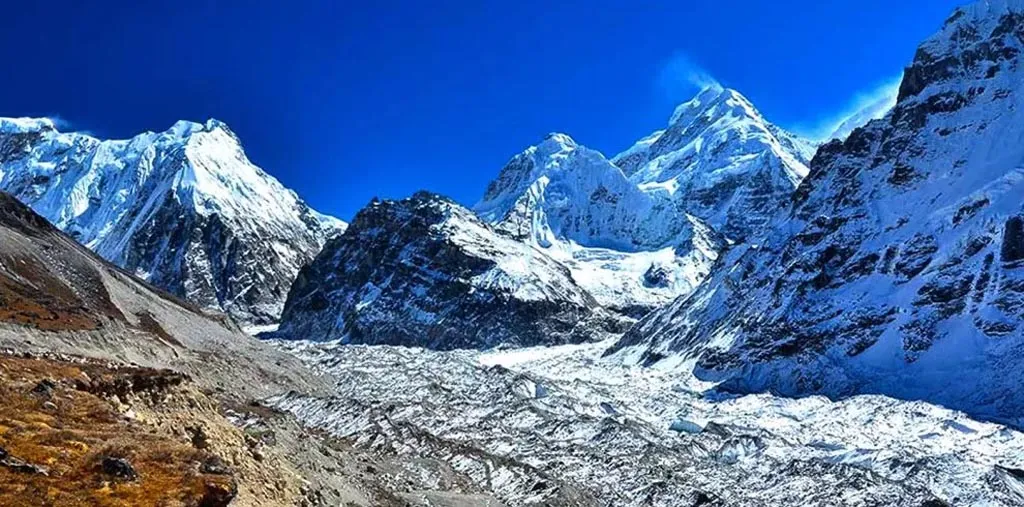
- Personalized Tour
Select a departure month
- Upcoming Departures
Fill out the form below and a Travel Expert will reach out to create your perfect tour.
Travellers(Optional)
How difficult is the kanchenjunga base camp trek.
The Kanchenjunga Base Camp Trek is considered to be a challenging trek. It involves long days of walking, steep ascents and descents, and high altitude. Previous trekking experience and a good level of fitness are recommended.
How long does it take to complete the Kanchenjunga Base Camp Trek?
The trek usually takes around 15-25 days to complete, depending on the itinerary and the pace of the trekking group.
What is the best time to do the Kanchenjunga Base Camp Trek?
The best time to do the Kanchenjunga Base Camp Trek is during the spring (March to May) and autumn (September to November) seasons. These months offer stable weather conditions, clear skies, and good visibility of the mountains.
Do I need a permit for the Kanchenjunga Base Camp Trek?
Yes, you need a special permit called the Kanchenjunga Restricted Area Permit to trek to the Kanchenjunga Base Camp. You also need to obtain the TIMS (Trekkers' Information Management System) card.
Are there any altitude sickness risks on the Kanchenjunga Base Camp Trek?
Yes, there is a risk of altitude sickness on the Kanchenjunga Base Camp Trek, as you will be reaching high altitudes. It is important to acclimatize properly, drink plenty of water, and listen to your body's signals. It is also advisable to consult with a doctor before undertaking the trek.
Are there tea houses or lodges along the Kanchenjunga Base Camp Trek route?
Yes, there are tea houses and lodges available along the Kanchenjunga Base Camp Trek route. However, the facilities may be basic and limited in some areas. It is recommended to carry your own sleeping bag and be prepared for shared accommodations.
Is it possible to do the Kanchenjunga Base Camp Trek independently?
No, it is not possible to do the Kanchenjunga Base Camp Trek independently. The trek requires a licensed guide and a minimum of two trekkers due to the restricted area regulations.
What should I pack for the Kanchenjunga Base Camp Trek?
Some essential items to pack for the Kanchenjunga Base Camp Trek include warm clothing, hiking boots, a good quality sleeping bag, a backpack, trekking poles, waterproof clothing, sun protection, a first aid kit, and a water purifier.
Can I hire a porter for the Kanchenjunga Base Camp Trek?
Yes, it is possible to hire a porter for the Kanchenjunga Base Camp Trek. A porter can help carry your heavy backpack, allowing you to trek with less weight and enjoy the journey more comfortably.
Is travel insurance necessary for the Kanchenjunga Base Camp Trek?
Yes, travel insurance is highly recommended for the Kanchenjunga Base Camp Trek. It should cover emergency medical expenses, helicopter evacuation, and trip cancellation. Make sure to check the policy details and ensure that it includes trekking activities at high altitudes.
Latest Traveller’s Reviews
Travel experiences of our clients who recently returned from their trips..
Based On 31 Reviews
Victoria Rowland
November 29, 2023, challenging, yet rewarding.
This trek is not for the faint-hearted, but it is definitely worth the effort. The challenging terrains and high altitudes make it a physically demanding trek, but the feeling of accomplishment upon reaching the base camp is indescribable. Prepare yourself for an adventure of a lifetime!
November 16, 2023
A trek that changes you.
The Kanchenjunga Base Camp Trek is not just a trek; it's a life-changing experience. It challenges you, inspires you, and transforms you in ways you never thought possible. It's an opportunity to discover your true potential and come back a stronger, more empowered version of yourself. Don't miss it!
Darcy Darcy
United states, november 8, 2023, an off-the-beaten-path gem.
The Kanchenjunga Base Camp Trek takes you through some of the most remote and untouched landscapes in Nepal. The trail is less crowded compared to other popular treks, allowing for a more authentic and immersive experience. The stunning beauty of the Kanchenjunga region is truly a hidden gem.

Write Your Review
Average Customer Ratings
How The Travellers Have Rated This Package
People Considering This Package Right Now Check availability
Write A Review
Your email address will not be published. Required fields are marked*
Download PDF
Your email address is required for downloading package details.*
Recommended On

Subscribe and Win a Free Everest Trek!
Follow us on:.

- MAKE A PAYMENT
- B2B Partner
- OUR PARTNERS
USEFUL LINKS
- Terms and Condition
- Payment Procedure
- Why Sherpa Expidition & Trekking?
- 8000m Expedition
- 7000m Expedition
- 6000m Peak Climbing
- Popular Peak Climbing
EXPEDITIONS
- Everest Expedition (South)
- Everest Expedition (North)
- Everest Base Camp Trek
- Gokyo Valley Trek
SHERPA EXPEDETION
Kuala lumpur, malaysia,, phuket, thailand, sydney, australia.

Sherpa Expedition and Trekking is one of the pioneers of Trekking, tour and expedition in Nepal which was established on January 07, 1977, with a motto: ‘Enhancing Tourism possibilities across the Globe’. Sherpa Expedition and Trekking is proud to be recognized as the fifth Trekking and Adventure company authorized by the Tourism Board of Nepal.
© Copyright Sherpa Expedition And Trekking. All rights reserved.
Made with in Nepal by TECH 101
Alliance Treks
Dream…Explore…Cherish…
- Destination
Kanchenjunga Trek 21 Days- Beauty of Untamed Kanchenjunga Circuit

The Kanchenjunga Circuit Trek is also called the Kanchenjunga North and South Base Camp Trek. It’s a challenging trek that requires some trekking experience. We provide the best price along with a detailed route plan and map. You’ll have a skilled trekking crew with you for this trek in the wildest and least touristy trekking route in Nepal.
Kanchenjunga is like a secret gem in Nepal, hiding in the Far East and touching Sikkim, India. Not many travelers know about the exciting trekking path of the Kanchenjunga Circuit. The special permits and challenging trails often stop most trekkers from trying the Kanchenjunga Circuit Trek.
The Kanchenjunga Trek leads you to the 3rd highest mountain, Mt. Kanchenjunga (8,586 m). To explain our plan better, it takes you to both the north and south base camps of Mt. Kanchenjunga. You can also check our trek map for more trail details. If you prefer, we can create a special trek just for either Kanchenjunga South Base Camp or Kanchenjunga North Base Camp.
In contrast to the named Annapurna Circuit Trek and Manaslu Circuit Tre k , the Kanchenjunga Circuit Trek stands out as an even more tough and remote trekking experience. If you’re seeking an out-of-the-world thrill in the Himalayas, then the Kanchenjunga Circuit Trek in Nepal is the ideal choice. This trail bends through lush forests, ideal fields, windy rivers, scenic waterfalls, and charming villages.
Kanchenjunga Circuit Trekking Route Excluding Kathmandu
1st Day: From Kathmandu (1,310m) at 5:00 AM and then drive to BIRTAMOD (15 or 16 hours driving) by regular Micro Bus and overnight at the local Lodge. Today is the first day of your Kanchenjunga Circuit trek.
2nd Day: Change to another regular local bus and finally arrive or reach TAPLEJUNG (7 or 8 hrs driving) and overnight at Lodge.
3rd Day: 5 or 6 hr trek to SINUWA and overnight at Lodge
4th Day: 6 or 7 hr trek to TAPLETHOK and overnight at Lodge
5th Day: 5 or 6 hr trek to SEKATHUM and overnight Lodge
6th Day: 6 or 7 hr trek to AMJELASA
7th Day: 5 or 6 hr trek GYAPLA and overnight at Lodge
8th Day: 6 or 7 hr trek to GHUNSA and overnight at Lodge
9th Day: Rest Day for acclimatization 10th Day: 5 or 6 hr trek to KHAMBACHEN and overnight at Lodge 11th Day: 6 or 7 hr trek to LHONAK and overnight at Lodge 12th Day: Visit Pangpema (Kanchanjunga Base Camp) and then 8 or 9-hour trek back to LHONAK and overnight at Lodge. This is indeed the highlight day of your Kanchenjunga trek.
13th Day: 5 hr trek to GHUNSA and then overnight at Lodge
14th Day: 6 or 7 hr trek to SELELE BASE CAMP and overnight at Lodge
15th Day: 6 or 7 hr trek to RAMCHE and overnight at Lodge
16th Day: Visit CHERAM and return to RAMCHE (6 or 7 hours walking) and overnight at Lodge
17th Day: 5 hr trek to TRONGDING and then overnight at Lodge
18th Day: 6 or 7 hr trek to YAMBUDIN and overnight at Lodge
19th Day: 6 or 7 hr trek to GUPETAR and overnight at Lodge
20th Day: 7 or 8 hr drive by local sharing Bus or Jeep to Birtamod and overnight at Lodge
21st Day: Drive back to KATHMANDU (1310m) which is almost 15 or 16 hrs and then drive by regular day Micro Bus sharing with locals. This ends your Kanchenjunga trek.
Trek cost – 21 days ex. kathmandu.
Required Minimum 2 person and above travelling: US$ 1850 per person
If you are interested in booking your Kanchenjunga Trekking then please click here to BOOK NOW YOUR EXPERIENCE
Kanchenjunga Trek Map

Kanchenjunga Circuit Trek Permit
Your permit comes with the Kanchenjunga trek package, and we’ll handle it when you book. Make sure to come at least 2 days early so we can apply for and get your permit.
If you want to know more about Nepal Visa Information then click here for Nepal Immigration
Trek booking open for 2024/2025.
Are you planning to trek or tour in 2024 or 2025? We suggest you book plans as soon as possible to avail the best cost for the trek.
Inquire about the Trek with us or you can What’s App / Viber at + 977-9851022814 / 9841451681
The Kanchenjunga Trek is a challenging and adventurous trekking expedition that takes you through the remote and pristine landscapes of the eastern part of Nepal, near the border with Sikkim, India. Here’s an overview of the Kanchenjunga Trek:
Location: Kanchenjunga is the third-highest mountain in the world, and the trek explores the region around this majestic peak. It is situated in the far eastern part of Nepal, bordering the Indian state of Sikkim.
Trekking Difficulty: The Kanchenjunga Trek is known for its difficulty and is considered one of the more challenging treks in Nepal. It involves rugged and steep terrain, high altitudes, and remote trails. Prior trekking experience is recommended, and it’s usually not advisable for beginners.
Permits: To undertake the Kanchenjunga Trek, you’ll need special trekking permits and must be accompanied by a registered guide. This helps in protecting the natural environment and ensures your safety.
Scenic Beauty: Despite the challenges, the Kanchenjunga Trek offers breathtaking views of pristine landscapes, lush forests, meadows, rivers, waterfalls, and picturesque villages. The region is rich in biodiversity, making it a paradise for nature lovers and wildlife enthusiasts.
Trekking Routes: The trek generally takes about 20-25 days to complete and offers two primary routes – the Kanchenjunga North Base Camp Trek and the Kanchenjunga South Base Camp Trek. The trek can be tailored to explore one or both base camps, depending on your preferences and the time available.
Cultural Experience: Along the way, you’ll have the opportunity to interact with local communities like the Limbu and Sherpa people, experiencing their unique culture, traditions, and hospitality.
Best Time to Trek: The ideal time for the Kanchenjunga Trek is during the spring (March to May) and autumn (September to November) when the weather is generally stable, and the views are spectacular.
Accommodation: Lodging options along the trail vary from basic teahouses to camping, depending on your preferences and the route chosen.
Overall, the Kanchenjunga Trek offers a remote and less crowded alternative to some of the more popular treks in Nepal. It is a rewarding experience for trekkers looking for a challenging adventure and a chance to explore the hidden gems of the Himalayas.
Trip Highlights
- Stunning Mountain Views: The trek provides awe-inspiring views of Mt. Kanchenjunga, the third-highest peak in the world (8,586 meters), as well as other prominent peaks in the region. The sight of these towering mountains against the backdrop of clear blue skies is truly breathtaking.
- Biodiversity: The Kanchenjunga region is rich in biodiversity, featuring diverse flora and fauna. You'll trek through lush forests with rhododendron, oak, and pine trees and have a chance to spot various wildlife species, including the elusive snow leopard, red panda, and a variety of bird species.
- Remote and Less Crowded: Unlike some of the more popular trekking destinations in Nepal, Kanchenjunga Trek offers a more remote and less crowded experience. You'll often find yourself surrounded by pristine nature and serenity.
- Cultural Exploration: Along the way, you'll have the opportunity to interact with local communities, such as the Limbu and Sherpa people. You can learn about their unique cultures, traditions, and way of life. Visiting charming villages and monasteries adds to the cultural richness of the trek.
- Variety of Terrain: The trek takes you through a variety of terrains, including dense forests, alpine meadows, suspension bridges over rushing rivers, and high mountain passes. This diversity in landscapes keeps the trek exciting and ever-changing.
- Kanchenjunga Base Camps: You can choose to trek to either the North Base Camp or the South Base Camp of Mt. Kanchenjunga, each offering its own spectacular views and experiences. Many trekkers opt to visit both base camps to fully appreciate the grandeur of the mountain.
- Challenging Adventure: The Kanchenjunga Trek is known for its challenging nature, which attracts experienced trekkers looking for a physically demanding and mentally rewarding journey. The rugged trails and high altitudes make it a test of endurance and determination.
- Natural Beauty: The trek takes you through picturesque landscapes, including pristine rivers, waterfalls, terraced fields, and traditional villages. These natural wonders provide numerous opportunities for photography and moments of pure serenity.
From Kathmandu (1,310m) – at 5:00 AM drive to BIRTAMOD (15-16 hours driving) by regular Micro Bus and overnight at the local Lodge.
Change to another regular local bus and finally arrive/reach TAPLEJUNG (7-8 hrs driving) and overnight at Lodge.
Trek to SINUWA (5-6 hours walking) and overnight at Lodge.
Trek to TAPLETHOK (6-7 hours walking) overnight at Lodge.
Trek to SEKATHUM (5-6 hours walking) overnight Lodge.
Trek to AMJELASA (6-7 hours walking)
Trek GYAPLA (5-6 hours walking) Overnight at Lodge.
Trek to GHUNSA (6-7 hours walking) and overnight at Lodge.
Rest Day for acclimatization.
Trek to KHAMBACHEN (5-6 hours walking) and overnight at Lodge.
Trek to LHONAK (6-7 hours walking) and overnight at Lodge.
Visit Pangpema (Kanchanjunga Base Camp) and then trek back to LHONAK (8-9 hours walking) and overnight at Lodge.
Trek back to GHUNSA(5 hours walking) and overnight at Lodge.
Trek to SELELE BASE CAMP (5-6 hours walking) (6-7 hours walking) and overnight at Lodge.
Trek to RAMCHE (6-7 hours walking) and overnight at Lodge.
Visit CHERAM and return to RAMCHE (6-7 hours walking) and overnight at Lodge.
Trek to TRONGDING (5 hours walking) and overnight at Lodge.
Trek to YAMBUDIN (6-7 hours walking) and overnight at Lodge.
Trek to GUPETAR (6-7 hours walking) and overnight at Lodge.
Drive by local sharing Bus/Jeep to Birtamod (7-8 hours driving) and overnight at Lodge.
Drive back to KATHMANDU (1310m) almost 15-16 hrs. driving by regular day Micro Bus sharing with local.
Services Includes
- 21 Days Kanchenjunga trek as per itinerary using local lodges as available
- Breakfast, Lunch & Dinner during Kanchenjunga trek at local lodges
- Experience trek guide for Kanchenjunga Circuit trek
- One porter (2 travellers:1 porter) to carry your luggage
- Kathmandu to Birtamod by regular public bus sharing basis
- Birtamode to Taplejung by regular bus sharing basis
- Kanchanjunga special 14 days trekking permit
- Kanchenjunga Conservation permit
- TIMS fee and permit
- Trekking crew Meals, day wages, insurance, equipment, bus transportation etc
- Government taxes as applicable
Services excludes
- Service excludes trekking equipment which can be rented in Kathmandu with extra cost, Hot water (Boiled drinking water)/Hot Shower & Battery Charges during trek, arrangements in Kathmandu and any other services not mentioned in cost includes section.
Visitors numbers to this trekking area are restricted, so to trek in Kanchenjunga, you need a local guide and at least 2 trekkers fulfil and gain the necessary permits .
Embarking on this trek leads you through the lesser-visited and more secluded regions of Kanchenjunga, providing an exceptional and genuine trekking adventure. Typically spanning a duration of approximately 20-25 days, this trek entails traversing numerous high mountain passes, notably Sele La (4,290 meters) and Sinion La (4,660 meters).
The Kanchenjunga trek is graded as a strenuous trekking destination that demands high levels of physical fitness, endurance, and mental strength.
The optimal months for trekking in the Kanchenjunga region are typically from early March to mid-May and from October to late November. It is advisable to steer clear of the monsoon season, which typically occurs from late May to mid/late September.
You can send your enquiry via the form below.
Related trips you might interested in.
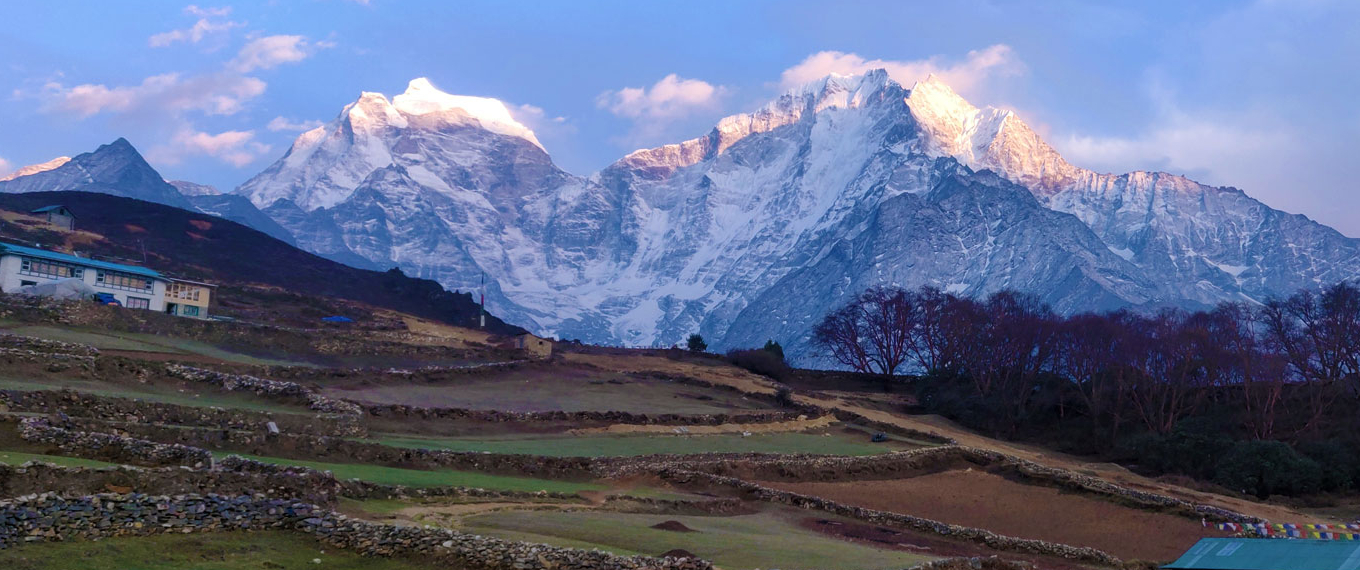
Ruby Valley Best Trek 7 Days – A Photo Diary of Nature’s Grandeur
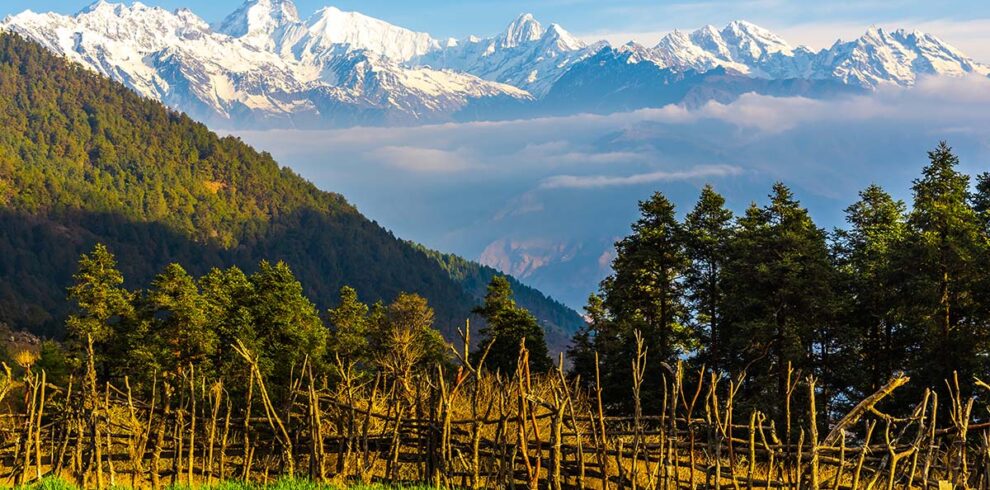
Ruby Valley Circuit Trek 9 Days – Venture Beyond Bound Paths

Bhutan Trek 9 Days Jhomolhari Excursion

Kanchenjunga South Base Camp Trek
Kanchenjunga south base camp trek overview.
Detracting all the comfort and luxury, Kanchenjunga South Base Camp Trek pledge to give sanity for a lifetime. The hiking passage of South Kanchenjunga Base Camp is pervaded with extreme wilderness consisting of bountiful cascading waterfalls, bubbling streams and tenuous medicinal floras and fauna.
Though the region is yet to go towards the way of modernization, the route has managed to convert itself from camping to the teahouse trek.
Your stay in the local teahouse endorses wallowing in the daily chores of ethnic Kirati Rai and Limbu. Nonetheless, for adventure rookies, this Kanchenjunga Base Camp trek tenders a camping trek.
Setting off the journey from the lowland of Bhadrapur or Birtamod, the trail enchants you with eye-pleasing views of the massive Tea Plantation in Ilam.
Interesting Story behind the name of Kanchenjunga
Before it was baptized Kanchenjunga, the mountain was spelt Kang-Chen-Zod-Nga, which in Tibetan alludes to Five Jewels of Snow. Locals give credence to Kanchenjunga as the sanctuary of Limbu’s goddess Yuma Sammang(Faktalung).
However, for the mountaineers, Kanchenjunga is the alias of challenge and adventure. It makes no difference whoever calls Kanchenjunga with whatever alternatives, you just engulf in the jaunt to the world’s third-highest Kanchenjunga South Base Camp Trek.
Espouse Sedulous mountain vistas from the trek route of Kanchenjunga South Base Camp
In the passage from Tseram to Oktang, trekkers can delve amidst the vistas of the enticing mountain scenery of Nepal’s various top-rated mountains. Along with some other of Nepal’s highest Himalaya peaks, Mt Jannu, Yalung Glacier and Mt. Makalu are seen as incredibly beautiful from the path of the south Kanchenjunga Base Camp.
Soul-catching isolated Kanchenjunga Village offering overwhelming hospitality
Inhabited densely by the Limbu and Rai tribes of the Kirati Group, the Kanchenjunga trekking trail serves well for cultural explorers too.
The benefaction of cultural Limbu and Rai people is experienced profusely on this trek route. After the strenuous day’s walk, the time you get to spend with these local tribes leaves you with eternal happiness.
The inhabitants of Kanchenjunga, mainly Limbhu are habitual in offering homemade millet beverages to their local guests. Thus to give your tongue a new taste, make sure to try this beverage. Locally, the millet Juice is called Tongba.
To have a deep insight into the Limbu culture and tradition visit Limbu Cultural Central Museum at Mamankhe. Mamankhe is the ethnic Limbhu village on the trekking trail of Kanchenjunga South Base Camp in eastern Nepal.
Saunter around the cardamom farmlands and appreciate local’s hard work
As you make the journey towards Taplejung, the cardamom farming land in the Kanchenjunga South Base Camp trek route accompany you. Witnessing the Cardamom farmland, there is no denying that cardamom has been the major income source for the locals of this region.
Scads of vegetation witnessing meagre trekkers
Traversing the jaunting route from the lower elevation of Taplejung to the higher altitude of Ramzher and Oktang, the trail showcases how much difference is there in vegetation in between.
From the prospect of Nepal, 8586m elevated Kanchenjunga is the second highest peak. Unlike the trek to the base camp of the world’s highest Mount Everest, the trekking route of Kanchenjunga Base Camp sees a trickle of trekkers all year round.
The presence of few people on this hiking route is the reason why it is much more challenging and adventurous. Offering you the full wilderness, a trek to this route urges high endurance capacity. The presence of plentiful wooden bridges over the streams adds more thrill to your journey.
Protected under the title of Kanchenjunga Conservation Area , the ambience of this area provides the best exploration of wildlife and vegetation. The lush forests are sure to give the most appealing scenery to visitors. Moreover, looking at the slanted hill explores how the crops are cultivated in this region.
Trekkers are unaware of what they are missing by ignoring this eastern region trek of Nepal .
At which season, trekkers can enjoy the most out of all seasons in Kanchenjunga Base Camp?
With some trekkers on the way, the route of Kanchenjunga Base Camp during the Autumn and Spring season calls the trekkers with their unique ornaments.
Where the spring season, gives you a glance at the newly produced animals and wild vegetation, the season of Autumn amplifies your luck by letting you linger amidst the forest of Rhododendron, Juniper and Pine. Another striking attraction of this Kanchenjunga Base Camp trek in Spring and Autumn is the azure reflecting superb mountain views.
Full of water sources, the trek for this reason during winter and summer is not recommended for trekkers. Further, the route of the Kanchenjunga Base Camp is strenuous on its own and does not see many trekkers all its way.
During these seasons, the high snowfall and excessive water flow on the trail make the trek most challenging. Thus, with such risk and no one to help during difficulties, it is suggested to skip the Kanchenjunga trek during the offseason period of Winter and Summer.
Available Extensions and Side trips for Kanchenjunga South Base Camp Trek
Do you have an extra vacation left? Are you not sated with merely the Kanchenjunga South Base Camp trek? Don’t worry, the trek in the Kanchenjunga region repletes all your needs.
Pathivara-At the top hill of Taplejung(3794)
Either at the trek start, or end day make sure to visit Pathivara and experience Hindu culture. If you want to spend one extra day then, a trip to Pathivara temple at the start or end of the trek is the foremost option for every trekker reaching here. If possible go for this trip on the return day to Taplejung from the Kanchenjunga South Base Camp trek.
Situated at the hilltop of Taplejung at 3794m altitude, Pathivara is revered by both Hindu and Limbu pilgrims. For Hindus and Limbus, there are separate priests. Called Mukkumlung by Limbu’s, this holy spot is reachable within one and a half hours of driving before hiking for around 2 hours. Pilgrims believe that a visit to this temple fulfils all their wishes and desires if played properly.
Extension with Kanchenjunga North Base Camp
Instead of making the way towards Tortong from Tseram, for this extension, divert your way towards Sele La Pass. Before you reach Sele La Pass, you have to cross other Sinion La Pass and, Mirgin La Pass. From Sele La Pass, make your way to Gunsa from where a trek to Kambachen and Lonak leads to Pangpema. Pangpema on the north side of Kanchenjunga Base Camp.
Fitness required
With the sheer level of fitness, the trek is specially dedicated to thrill and adventure seekers. Though not the extreme one a little bit of hiking experience is mandatory to overcome the encountered challenges in the Kanchenjunga Base Camp trekking trails. The normal fitness level does not work here.
If you are a tyro and wish to wallow in the allure of the Kanchenjunga region, first give yourself some time for short and easy Nepal trekking .
Transportation
Comfortable way.
Flight option 1
Fly Kathmandu to Suketar and drive around 30min to reach Taplejung. From Taplejung the official Kanchenjunga South Base Camp Trek starts.
Flight Option 2
Kathmandu to Biratnagar and Drive 11 hours to Taplejung (Phunlingbazar)
Flight Option 3
Kathmandu to Bhadrapur flight and drive around 9 hours to Taplejung return respectively
20-hour Kathmandu to Taplejung drive
Internet, Wifi Connection
- On 1st day at Taplejung strong internet connection
- On the way up to Ranipul LTE connection
- Gunsa also LTE connection (For those opting for the extension of the north Kanchenjunga Base Camp Trek )
- Above Gunsa only satellite telephone works (no work of other networks)
Drinking water
No scarcity of water throughout the route but normally use water purification tablets else buy hot water. Carry two water bottles one thermal and another normal bottle to carry cold water. Bottled mineral water is not available.
Selection of viands is limited during Kanchenjunga South Base Camp Trek
If you seek food variety, get ready for disappointment. But, if you are thankful to simple Nepali Dal Bhat, there remains nothing to regret for. Besides Dhal Bhat other available basic foods are Tibetan bread, Chappatte, noodles, boiled egg, and seasonal vegetables (cabbage, cauliflower).
For beverage lovers, a traditionally prepared millet juice is available in the Limbhu settlements. The millet juice is called Tongba.
Locally called Churpi, dry cheese made out of Yak milk is there in the settlements to give you a new taste.
Essential Permits for South Kanchenjunga Base Camp Trek
Kanchenjunga region at the India-Sikkim border in the eastern section of Nepal is a restricted region of Nepal. Thus to trek to Kanchenjunga South Base camp, trekkers have to issue a special permit which can be acquired from the registered trekking companies in Nepal.
If you are planning to do the Kanchenjunga Base Camp Trek solo, then immediately skip that thought from your mind. To opt for this trek, you have to be in a group of a minimum of two people. Further, along with your group, a government licenced Guide should also be there during your entire journey.
Besides, the special permit another required permit is the entry permit for the Kanchenjunga Conservation Area. Unlike other regions’ treks, you needn’t have to carry Trekker’s Information Management System(TIMS) card while joining this trek.
Kanchenjunga South Base Camp Trek Itinerary
Day 1: arrive at the kathmandu airport and ride to the hotel room.
Walking Hours: 30 Minutes Drive
Meals Included: Welcome Dinner
Accommodation: 3 Star Standard Hotel
Max. Altitude: 1355M
As you show up at the Tribhuwan International Airport, one of the crew members of Mission Himalaya Treks and Expedition gives you the warm welcome before driving you to your hotel room. After you arrive at the hotel we will help you with all the check-in procedures. Thereafter you can give yourself some time to drag away all your travel hangover.
Further, if you feel some kind of jetlag, sleep for some time. Later step out of the room and put on your foot on the rakish streets of Thamel. From buzzing pubs and Discotheqs to the Karokee music stations, you get to experience the best nightlife in this tourist hub of Nepal. Spending some time here you will realize why this place is narrated best tourist hub by the general public.
Day 2: Trek preparation and Kathmandu Sightseeing Tour
Walking Hours: 6 Hours Day Tour
Meals Included: Breakfast

The day is specially allocated for the organization of permits and other necessary documents. Further, if there is still something to be shopped for, you can do so on this day.
No wonder, your maximum time today will indeed be grabbed by the trek preparation and similar other stuff. But, we will help you manage some time for the sightseeing tour of the Kathmandu Valley.
The tour will let you explore a maximum of four UNESCO world heritage cultural sites inside this commercialized Kathmandu city. The names include Pashupatinath temple, Swayambhunath Stupa, Boudha Nath Stupa, and Kathmandu Durbar Square.
Sauntering around all these attractions, you can experience the historical and cultural glamour of Nepal. Further, at the very time, you can’t skip the fact that the valley has experience in terms of modernization and commercialization.
Day 3: Kathmandu to Suketar Flight and trek to Lalikharka
Walking Hours: 30 Minutes Drive, 1 Hour Flight And 4 Hours Trek
Meals Included: Breakfast, Lunch, And Dinner
Accommodation: Basic Tea House

Normally it’s difficult to find a flight from Kathmandu to Suketar. If you find, feel yourself a more than a lucky person. Joining the morning flight from Kathmandu to Suketar you can adore the best aerial views of mountains views, emerald forest, and tiny settlements of east Nepal.
The destination of this day is set to Lalikharka. To reach Lalikharka from Suketar, ignoring the left split toward Chhatedhunga leading to Pathivara Temple, we will follow the right way towards Deurali(2600). After that, you just descend to Lalikharka from Deurali.
Day 4: Lalikharka to Kande Bhanjyang
Walking Hours: 6 Hours Trekking
Max. Altitude: 2129M

The foot journey to Kande Bhanjyang from Lalikharka normally lasts for around 6 and half hours. We will amble through the tiny Limbu settlements of Tembewa, and Simbu. Here we will get to explore the rice fields and the daily lifestyle of the ethnic Limbu groups. Furthermore, the waterfalls and streams along this route never cease to amaze us.
We will spend the night at Kande Bhanjyang.
Day 5: Kande Bhanjyang to Phumphe Danda via Phunhpung Danda(1794m)
Max. Altitude: 1858M
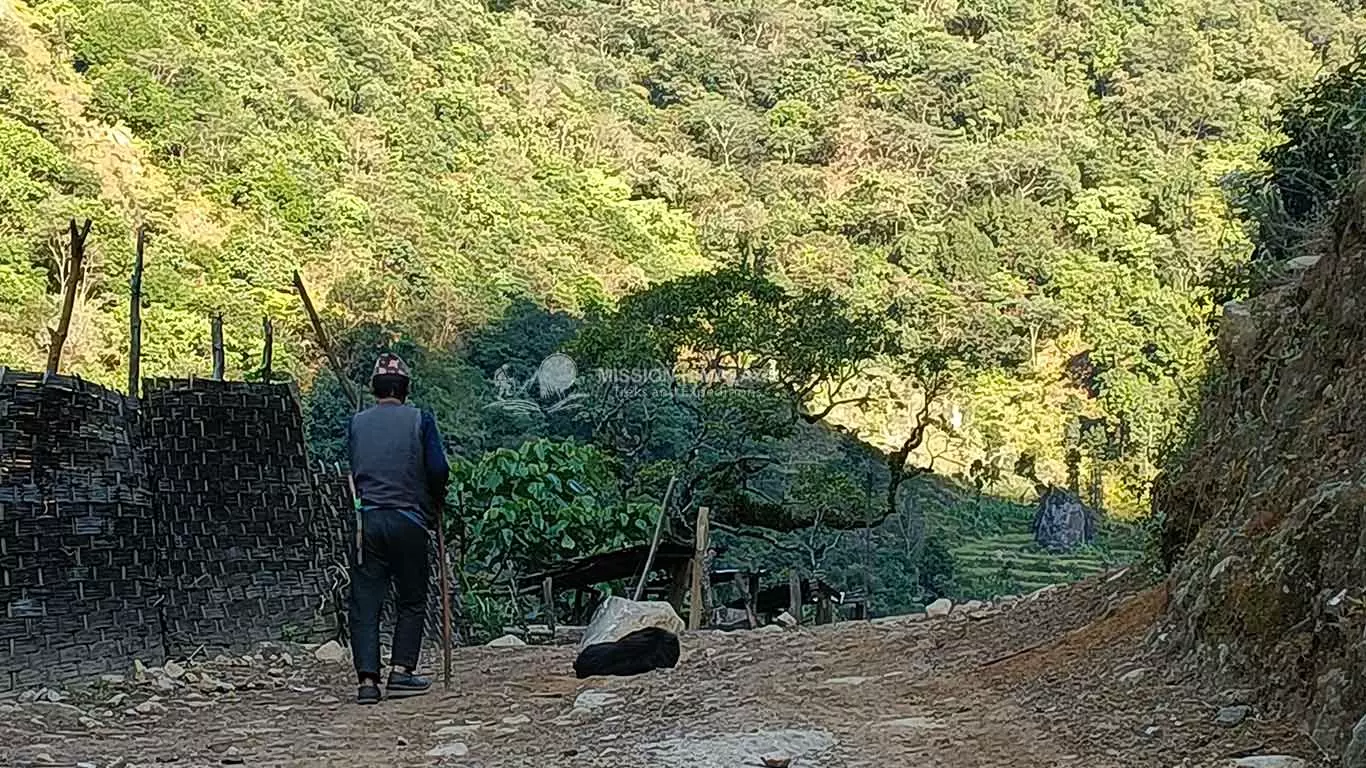
Early morning trek through the Phunhpung Danda from Kande Bhanjyang to Phumphe Danda.
Day 6: From Phumphe Danda (1858) trek to Yamphuding via Mamangkhen(1785m)
Max. Altitude: 2080M

This is the shortest trekking day of our entire South Base Camp Trek. Following the Kabeli Khola, we will walk on this treading route until we arrive at Mamangkhen.
Mamangkhen is the tiny settlement of the Limbu people where we can make our exploration of the Limbu Cultural Center and Museum. Giving some time for these communities’ exploration, we later proceed our jaunt to Yamphudin which is alternatively known as Sherpa Gaun by locals.
Day 7: Yamphudin to Tortong
Walking Hours: 6 To 7 Hours Trekking
Max. Altitude: 2995M

Unlike the previous day’s trek, the trek of this day is slightly daunting. We will start this day with a simple breakfast at Yamphudin. Later, we will continue our trek with a very steep ascent of around 4 and half hours before making four hours of a long descent.
Day 8: Tortong to Tseram via Anda Phedi(3370m)
Walking Hours: 5 To 6 Hours Trekking
Max. Altitude: 3870M

Walking from Tortong to Tseram takes us around 5-7 hours. The walk is set amidst a Rhododendron, Pine, Chestnut, and Juniper forest which is indeed all rejuvenating.
Day 9: From Tseram follow the route to Ramche

Full excitement of being close to the South Kanchenjunga Base Camp gives us extra energy while heading to Ramche from Tseram. 3 hours of a walk along the alpine grassland takes you to our today’s destination.
Day 10: Trek to Oktang (4730m) at the South Kanchenjunga Base Camp and return to Tseram

Early in the morning, we will make our way to Oktang to enjoy the best views of Mt Kanchenjunga’s southern face. After spending some blissful time at Oktang we will return to Tseram.
Day 11: Tseram to Tortong
Max. Altitude: 2295M

We will trace the same way back to Tortong from Tseram.
Day 12: Tortong to Ranipul (Trekking along the Simbu Khola pass Yasan)
Max. Altitude: 2380M

After the early breakfast, we will proceed our trek towards Ranipul from where we will be taking a ride to Suketar. Thus officially it is the last day of our actual trekking. Though last, the trek of this day is there to imprint its own identity in every trekker’s mind who opts this way.
If someone asks about the most strenuous trek days of all Kanchenjunga South Base camp Trek days, within a second mention the trekking day of Tortong to Ranipul. One of the main regions for being such strenuous is the long hours of trekking on the narrow and steep trail.
The other one includes the absence of a lunch savoring spot. There is only one stop in between Tortong and Ranipul namely Yasan to take the lunch. Most of the time, the lunch station remains closed so it’s recommended to bring the packaged lunch.
The route obviously has several hurdles on its way. However, the presence of vibrant butterflies, colorful flowers, and other wildlife make this day’s trek quite rewarding.
Day 13: Ranipul to Suketar drive
Walking Hours: 4 Hours Drive
Accommodation: Basic Guest House
The day today is the easier one. Saying goodbye to all the Kanchenjunga region trekking routes, be ready to spend a blissful night at Suketar.
Day 14: Contingency Day
Walking Hours: Depends Where You Trek
The trek to the Kanchenjunga South Base Camp is challenging on its own. The remoteness, wilderness, and presence of few populations on this trek route might not always let you complete the trek fluently. Sometimes, you might have to spend an extra day on the trek route.
In addition, the flight to Suketar, Biratnagar, or Bhadrapur is also not always available due to climatic conditions or other similar reasons. So, before embarking on the journey to the Kanchenjunga Base Camp, paste this thing in mind and be ready to tackle every hurdle which you might encounter on your way.
Day 15: Return to Kathmandu
Walking Hours: 1 Hour Flight And 30 Minutes Driving
On this day we will finally leave for Kathmandu from Suketar. There may not be a direct flight from Suketar to Kathmandu due to which we might have to first fly Suketar to Biratnagar and then catch Biratnagar to Kathmandu flight.
Day 16: Depart Nepal
Walking Hours: 30 Minutes Driving
Accommodation: None
It’s time to say good bye to Nepal. As per your flight schedule our member will escort you to thr Tribhuwan International Airport.
Kanchenjunga South Base Camp Trek Cost
- Internation and domestic airport transfer 4 times according to the itinerary.
- Rooms in twin sharing in basis tea houses during the trek.
- 3-star standard accommodation in Kathmandu for 3 nights according to Itinerary.
- Breakfast, Lunch, And dinner during the trekking which is very basic provide by tea houses.
- Day tour in Kathmandu 4 World heritage sites with guide and drivers.
- Restricted Area, Conservation Area, and National park permits.
- Trekkers Information Management System permits.
- Trekking guide who is experienced, English speaking, and first aid trained.
- Strong trekking porter who can carry a two-person duffel bag(not exceed than 25 Kgs).
- Insurances for Guide and porters.
- Flight cost and airport tax from Kathmandu to Suketar and Suketar to Kathmandu.
- First Aid Kits with Guide.
- Certificate after Trekking signed by your guide and company owner.
- Trekking map, Welcome dinner, and oximeter for measuring your oxygen level during the trek.
- International Airfare from and to Your country.
- Extra night accommodation and food in Kathmandu rather than an itinerary.
- Personal drinks like hot water, beverages, extra Drinks, Snacks, Hot Shower, Battery charging, Wi-Fi.
- Travel Insurances and emergency evacuation.
- Visa for Nepal which can apply after you arrive at Nepal Airport.
- Tips for your Guide and Porter.
- Entrance fees during the Kathmandu Tour.
- Items not included rather than above include sections.

Microspikes

Sandle For Teahouse Stay

Thin Hiking Socks

Waterproof Trekking shoes

Woolen Socks

Half pants For Day Hike

Inner Thermal Wear

Long Trousers for Trek

Stretchable Underwear

Waterproof Trousers For Rain

Short Sleeve Tshirt For Day Hike

Stretchable Sporty Bra For woman

Thermal Tshirt For co

Long Sleeve Lightweight Fast Dry Tshirt

Woolen Upper Base Layer
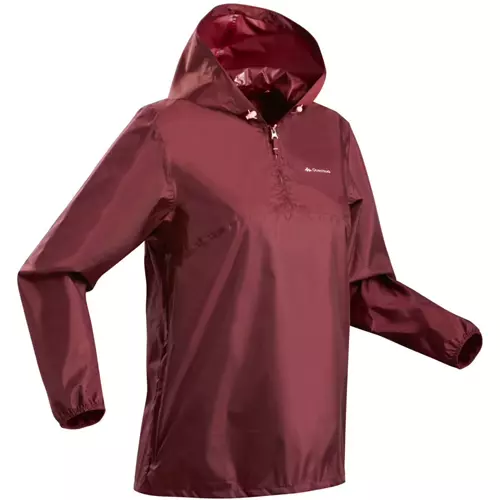
Waterproof Jacket For Rain

High Quality Down Jacket

Warm Wind Stopper
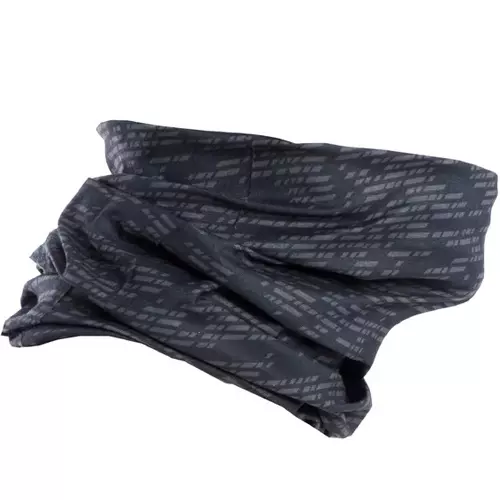
Bandana Or Neck Warmer

Handkerchif For Sweating

Sun Cap For Strong Light

Uv Protected Sun Glass For Sun And Snow

Warm Woolen Hat For Cold

Headlight For Night Or Sunrise Hike

50+SPF Sun Cream

Lightweight And Fast Dry Travel Towel
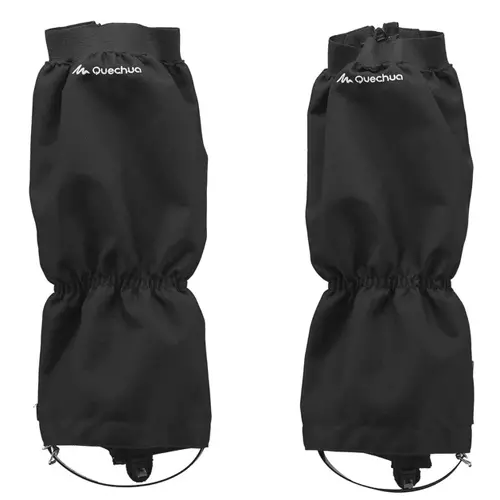
Gaiters For Snow

Hydration Water Bladder

50+SPF Lip Balm

Tharmel Water Bottle For Hot Water

High Quality Trekking Poles

Day Bag For Trekker Own Hiking

Backpack For Porter

Sanitery Pad For Lady

Sleeping Bag

Warm Waterproof Gloves

Padlock And Key For Safe Backpack

Snacks & Energy Bars

Toilet Paper For Teahouse Use

Toiletries For Man And Woman

Waterproof Bag For Your Water Safety

Spare Of Batteries

Camera For Photo And Video Of Trek

Power Bank For Mobile Charging

Two-Pin Travel Adapter

6 Month Validated Passport

Enough Cash And Credit Card For Mountain

Notebook For Your Diary

Printed Flight Ticket

Reading Book For Teahouse Free Time

Trekking Trail Map

First Aid Medicines For Trekking in Nepal
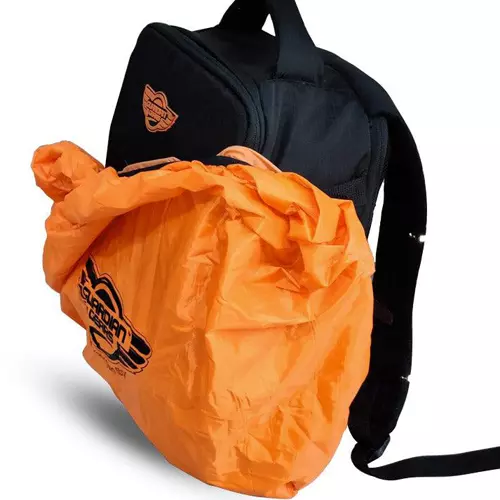
Waterproof Backpack Cover

High Altitude Covering Travel Insurance
Kanchenjunga south base camp trek map.

Kanchenjunga South Base Camp Trek Support
- Super basic(just one or 2 beds in one room)
- The bathroom is far in distance
- Accommodation not so clean so it’s better you carry your own sleeping bag
- For hot showering pay some extra
- Accommodation is clean in Gunsa(For those who choose to extend this trek to Northside)
Kanchenjunga South Base Camp Trek Reviews
- No Hidden Cost
- Customer Care And Safety
- Trustworthy Team
- Financially Secure
- Repeated Guests
- Flexible Departure Dates
- Different Group Sizes.
- High Successful Rate/Safety.
- Stress & Worry Free Travel
- Staffs Welfare

Kanchenjunga Base Camp Trek

Kanchenjunga North Base Camp Trek

Tsum Valley Trek

- The Ultimate Guide to Kanchenjunga Circuit Trek
- Kanchenjunga Trek
- 08/05/2023 04/04/2024
If you’re seeking a challenging and rewarding trek, the Kanchenjunga Circuit Trek could be the perfect choice. This magnificent journey will lead you through the breathtaking landscapes of Nepal’s Kanchenjunga region, providing awe-inspiring views of the world’s third-tallest mountain. However, preparing and knowing what to anticipate is essential before embarking on this adventure. This comprehensive guide to the Kanchenjunga Circuit Trek will provide all the necessary information to ensure your experience is as enjoyable and fulfilling as possible.
The Kanchenjunga Trek is a spectacular trekking experience that guides you through East Nepal’s most impressive landscapes. It’s known as one of the best trekking experiences in the world and offers incredible vistas, fascinating villages, and tremendous cultural diversity.
The Kanchenjunga Circuit Trek refers to visiting both North and South Kanchenjunga Base Camps so that tourists of the 3rd highest mountain and the greatest massif in the world can be close to the top and get up close and personal.
The Kanchenjunga Trek is one of the most challenging treks in the Himalayas. It takes place mainly in the mountains of Nepal and India and involves traversing three mountain ranges – the Kanchenjunga massif, the Kumbhakarna range, and the Yalung. Throughout this guide to Kanchenjunga Circuit Trek , you’ll find all the information you need to make your journey one to remember.
Table of contents
Kanchenjunga circuit trek – getting there and away, trekking into the kanchenjunga conservation area, what to expect, routes and itineraries for the kanchenjunga trek, kanchenjunga south base camp trek itinerary, itinerary for kanchenjunga base camp trek (north to south base camp), kanchenjunga circuit trek map, the altitude of kanchenjunga base camp trek, kanchenjunga circuit trek permits, best time to go to kanchenjunga circuit trek, food & accommodation on the trek, kanchenjunga circuit trek difficulty, packing list for kanchenjunga base camp trek.
There are many ways to get from Kathmandu to the beginning of this trek. You could alter your itinerary based on what you have on your travel list and availability. Flights are typically available from Kathmandu to Bhadrapur.
From there, you can fly or drive to Suketar Airport near Taplejung. It’s the best way to get from Kathmandu to Taplejung. In addition, Tara Air, Summit Air, and Nepal Airlines often schedule charter flights.
The Kanchenjunga Conservation Area (KCA) is spread over 2035 square kilometers and is one of the first places to explore the Himalayas. So, Kanchenjunga Circuit Trek offers an opportunity to discover the less traveled Himalayan routes.
It presents contrasting ecosystems, varying between alpine grasslands and subtropical forests—from the down-valley of rivers to the glacial moraine with rugged slopes.
The area is home to plenty of vegetation, wildlife, and numerous animals such as the musk deer, black bear of the Himalayas, snow leopards, boar, red panda, and many more. You can see the spectacular mountain panorama, taste local food, and observe Rai, the Limbu, and their culture.
So you’re finally ready for an adventure. You’ve researched, planned, and trained and are prepared to conquer the Kanchenjunga circuit trek in the Nepal Himalayas!
What do you need to know? What are the top five things you should know before you go?
Here’s a short list of what to expect based on what we’ve done to prepare ourselves for the trek:
- Expect it to be challenging. There will be a lot of hills, a lot of climbing, and a lot of scrambling. It won’t be easy, but you will feel good and strong once you start.
- Expect it to be cold. While there’s no snow, it gets cold, and the nights can be freezing. Bring warm clothes, layers, and wool socks. You can always add a sleeping bag if you want to, but remember that the weather can be unpredictable, so you may need to leave it at home.
- Expect to get sick. You may contact the stomach bug or worse. It’s happened to a few people. So be prepared, and don’t put yourself in a position where you’ll likely get sick.
- Expect to be challenged. You’ll feel challenged, and you’ll need to overcome obstacles. But, of course, you won’t be able to avoid challenges, and that’s part of the fun.
- Expect to be inspired. Beautiful, inspiring mountains surround you.
The Kanchenjunga Circuit Trek offers a variety of routes, each with a different level of difficulty and duration. Options include the 7-day Pangpema Trek that takes you to the Kanchenjunga North Base Camp and offers incredible views of the gigantic mountains.
Finally, for those looking for something longer, the 17-day Mt. Kanchenjunga Base Camp trek will take you to Yalung Base Camp or the Jannu Base Camps to explore two sides of one mountain!
The peaks of the Himalayas are visible from many parts of the hike. During the trek, you will be treated to stunning views of the spectacular Himalayas.
So, how do you plan for your Kanchenjunga Base Camp Trek ? Have you visited Kanchenjunga North Base Camp or Kanchenjunga South Base Camp Trek ? If you want to go for the views of the mountains, then you should go to the Kanchenjunga Circuit Trek.
This trek is a once-in-a-lifetime experience, and it would be a shame to miss out on such a trek for the views. However, if you have limited time and resources, consider opting for the Kanchenjunga North Base Camp . This way, you will enjoy the magnificent views and be back in time for the last day of your trek.
There are several maps available for the Kanchenjunga Circuit Trekking. You may purchase the Kanchenjunga Circuit Trek map in Thamel or buy it online with Amazon.
But we will provide the Kanchenjunga Circuit Trek map while you travel with us. Here is the GPS coordinate to navigate the daily walking distance and other essential information.
The below graph shows an elevation profile for the Kanchenjunga Base Camp Trek. The name position on the horizontal axis indicates the usual progression of a trek with the extreme ends on the route.
Before embarking on the Kanchenjunga Circuit Trekking, obtaining the necessary permits and paying the required fees is mandatory. You will need a Restricted Area Permit (RAP) and a Kanchenjunga Conservation Area Permit (KCAP) to enter the region.
The RAP costs USD 10 per person per week, while the KCAP costs USD 20 per week. Additionally, you will need to hire a licensed guide and porter, which can cost around USD 25-30 per day. Remember that these fees are subject to change, so it’s best to check with a local trekking agency for the most up-to-date information.
Featured Trip
Kanchenjunga base camp trek, kanchenjunga south base camp trek.
We want to tell you the best time to visit the Kanchenjunga circuit trek . If you are considering doing the tour, please know that you can do this at different times of the year. It is always a good idea to plan around autumn, generally from October to November. The trek is long, so you’ll have to allow plenty of time to complete it.
The trek is best when the weather is not too hot or cold; this is when people are least likely to be sick. It would help if you did the trek when it is not raining and, ideally, without wind. If you plan to do the tour during monsoon season, you should expect to encounter heavy rain.
The Kanchenjunga trek is an adventure, and you should not come with a set itinerary and expect the expedition to unfold as you planned. An excellent trekking guide can make the experience much more exciting and fun, so take one if you want to enjoy yourself fully.
To understand what the Kanchenjunga region offers, consider early March through mid-May and mid-October to late November. Generally, the monsoon season runs from late May to late September, making trekking impossible.
In recent years, trekking has become much more comfortable. Travelers in those days had to bring everything from food to tents.
Kanchenjunga is now a teahouse trek in northeast Nepal, as basic hut accommodation on the way has grown relatively recently. It may not be as easy as on the other famous Nepalese routes, but it will take a hot cup of tea and a sunset in the mountains at the end of the day.
You have no alternative or preference for accommodation while hiking. There is no toilet in the tea houses in Lhonak, Sele Le, and Ramche.
It is available simple food in Kanchenjunga. Daal Bhat, thukpa, chowmein, and instant noodles are the most common foods. But Macaroni and pasta are available in a few places.
The elevations spread from 200 meters to 5,175 meters in the Kanchenjunga Trek. Following a few rules, the Kanchenjunga Base Camp Trek is NOT DIFFICULT. Previous trekking experience or any mountaineering skills are optional. AMS (Acute Mountain Sickness) and the extreme, unpredictable climate are the major issues of every trek.
Kanchenjunga is a beautiful trek with a tea house and basic accommodations. Nevertheless, the services are fundamental. Bringing the correct clothing and equipment while trekking in the Kanchenjunga region is crucial. Appropriate clothing and supplies are essential for a safe and enjoyable trek.
You can sometimes spoil your trip with under-packaging or over-packaging. So, before you take your first trekking trip, let me share with you what you need to pack and what to avoid.
First things, what kind of gear should you bring? Let me introduce you to your ideal hiking equipment:
Hiking shoes: You may have the right hiking shoes for you. But you don’t. The best hiking shoes are called boots and have rigid, flexible soles.
Water bottle: Every trekker needs a water bottle. Please feel free to bring your own, or choose wisely. There are so many good options out there.
Extra clothes: When hiking, you are bound to get cold. Bring extra clothes and wear layers. Don’t forget to bring sunblock, a hat, a sweater, and socks.
Hiking poles are light and easy to carry, and you must have them while trekking.
Money: I know you don’t want to lug around a heavy backpack with you, but you still need money. So I recommend carrying a small amount of cash.
First aid kit: A first aid kit on your trek is essential. You never know when you will get injured or sick, so you must be prepared.
The cost of permits for the Kanchenjunga Trek is 1. Kanchenjunga’s restricted Area Permit cost is US$ 20 per week for the first four weeks. 2. Kanchenjunga Conservation Area Entry fee NPR 3000 per person
It depends on the chosen routes and whether you wish to do an entire Kanchenjunga Circuit Trekking; then, it will be demanding. Likewise, deciding on the Kanchenjunga South Base Camp Trek is easy to moderate, although you should walk 5 to 8 hours daily. This complete guide to Kanchenjunga South Base Camp Trek will help you plan and prepare for this adventure.
I need help putting a price on since you need to consider how much you will spend to reach the highest spot in the world and back, and then the price of your food and accommodation. However, the base cost for this trek should be around USD 2660 for the whole circuit. Including the flights to and from Kathmandu, there are some different options that you can choose from to make this trek cheaper and more manageable.
Mt. Kanchenjunga is one of the most pleasurable trekking destinations in Nepal on the eastern border of Nepal and is ideal for people in need of astonishment and who have time to travel here. But, unfortunately, the campsites were only accessible in the past.
But basic tea houses are also available for specific periods. In addition, more inexpensive routes pass through spectacular Himalayan vistas, ancient forests, prime wildlife, and the core of traditional cultures and communities.
The best guide to Kanchenjunga Circuit Trek will help you prepare for your travel adventures, such as packing, planning, and preparing your luggage, health, vaccinations, permits, itineraries, and more.
For adventure seekers looking for a challenge beyond what they have experienced before, Kanchenjunga Circuit Trek is worth considering due to its unique combination of natural beauty and cultural exploration opportunities throughout your journey.
Adding Kanchenjunga Circuit Trek to your bucket list will provide professionals with unforgettable memories and valuable insights into diverse cultures. This Kanchenjunga Trek offers something unique that no other trekking destination can offer! So take advantage of this opportunity for an incredible experience!
About Author
Leave a reply.
You must be logged in to post a comment.
Elektrostal, Moskovskaya oblast'
Path of health.

IMAGES
VIDEO
COMMENTS
The Kanchenjunga Base Camp Trek is a challenging and rewarding journey that usually takes around 23-26 days to complete. The total distance covered during the trek is approximately 231 kilometers (143.5 miles), including both ascent and descent. The trail winds through remote villages, lush forests, cascading waterfalls, and high mountain ...
Kanchenjunga Base Camp Trek is a well-trailed route despite being a journey into the wilderness, as the region bears a mild topography and is easily accessible. Kanchenjunga, meaning Treasures of Snow, stands 28,198ft tall, the third-highest peak in the world. Considered a remote trek through Eastern Nepal, the trail passes restricted areas and ...
Kanchenjunga Base Camp Hike. Kanchenjunga, meaning "five great treasure houses of the snow," is the third-highest mountain in the world and the second highest in Nepal. Until 1856, it was believed to be the highest of all. The Kanchenjunga hike is one of the longest treks in Nepal, taking from 23 to 29 days.
Planning for Kanchenjunga Base Camp Trek in Nepal - Know about Kanchenjunga Base Camp Trek Guide 2023 - Cost, Map, Itinerary, Permit Kanchenjunga, the third-highest peak in the world at 8,586m, is an exciting option for anyone wanting to trek a route that remains relatively undiscovered.The number of trekkers allowed on the route has long been restricted by the government to preserve the ...
Kanchenjunga Base Camp Trek Difficulty: Kanchenjunga Base Camp Trek has one of the toughest trails in the Himalayas. Due to its remote, gravel terrain, difficult passes, steep routes, and many ascents and descents, the route can be considered as difficult. Also, the unpredictable weather in this region can cause the difficulty level to increase.
The Kanchenjunga Base Camp Trek is a long and challenging trek that covers a distance of around 120 km. The trekking route is divided into two parts - the north and south base camps. The north base camp is situated in Tibet, while the south base camp is located in Nepal. In this trek, you will visit both the north and south base camps ...
KANCHENJUNGA BASE CAMP TREK MAP. Our route begins by flying to Biratnagar and trekking to Pangkema which is the north base camp, then going back to Ghunsa and trekking to the south side at Ramche, and then coming back to Suketar. Kanchenjunga Conservation Area is in the far east of Nepal near the border with Sikkim. A flight from Kathmandu to ...
The place is also culturally rich. Kanchenjunga Base Camp Trek tinerary & Cost gives you insights into how to plan this beautiful trek. During the trek you can see several high mountains, including Mt. Everest (8848m), Mt. Kanchenjunga (8586m), Mt. Makalu (8485m) and many more other mountains. ... Route Map. Close.
This 22-day trek takes you to the base camp of the magnificent mountain Kanchenjunga. Kanchenjunga Trek is a wilderness and unspoiled trekking trail that was opened to foreigners for trekking only in 1988. Kanchenjunga Mountain is in the eastern part of Nepal. Mount Kanchenjunga is the third-highest mountain in the world, with a height of 8,586 ...
Mt. Kanchenjunga (8,586 m) is the third highest mountain in the world, and the Kanchenjunga Circuit Trek takes you to the north (5,160 m) and south (4,780 m) base camps of this giant mountain. The region was long prohibited from entering for foreign travel and only opened in 1988. And thanks to that, to this date, Kanchenjunga is thriving in ...
Mount Kanchenjunga base camp trek overview. Kanchenjunga base camp trek is an ideal trekking trial in the far eastern Nepal.Kanchenjunga base camp trek is opened in 1988 for foreign travelers. Put your own courage to the test with the Kanchenjunga base camp trek, coming in from the Nepal side. Kanchenjunga is the third highest mountain in the world at 8,586m and the 2nd highest peak of Nepal.
The Kanchenjunga Base Camp Trek is of 26 Days, with actually 22 days of challenging and unforgettable trek that will take you through some of Nepal's most beautiful landscapes.The entire trek to Kanchenjunga Base Camp covers a distance of 220km which offers an exhilarating and captivating experience. With breathtaking views of the Kanchenjunga massif, remote villages, and high-altitude terrain ...
Kanchenjunga Base Camp Trek. This famous Kanchenjunga Base Camp trek takes you to both the north and south base camps of Mt. Kanchenjunga (8586m) the third world's third-highest mountain. This 20 day Kanchenjunga Circuit Trek is famous for its glorious snow-clad peaks, high altitude alpine crossings, lush green valleys, and raging glacial rivers - all in one complete package!
The trek cost for Kanchenjunga North Base Camp Trek is $2510 which is the same as that of the Kanchenjunga South Base Camp Trek. Once you book this trip to Kanchenjunga North Base Camp with Mission Himalaya, you will notice the cost really genuine. Through our service and hospitality, you will feel more connected with the Himalayan locals and ...
Trekking Routes: The trek generally takes about 20-25 days to complete and offers two primary routes - the Kanchenjunga North Base Camp Trek and the Kanchenjunga South Base Camp Trek. The trek can be tailored to explore one or both base camps, depending on your preferences and the time available.
Day 16: Day Trip to Kanchenjunga South Base Camp. Trek time: 6 hours; Accommodation: Tea House; Today we trek to Ramche where we stop for lunch before walking on for around 40 minutes to reach Kanchenjunga South Base Camp. The Base Camp is right on the edge of the glacier, and surrounded by Tibetan prayer flags.
Kanchenjunga is the world's third-tallest mountain. It is a restricted trekking trail that leads us to the Kanchenjunga base camp to see the picturesque view of Mt. Kanchenjunga and the remote countryside. Located in the far north-eastern corner of Nepal, Mt. Kanchenjunga is considered to be one of the most beautiful mountain massifs in the ...
Flight option 1. Fly Kathmandu to Suketar and drive around 30min to reach Taplejung. From Taplejung the official Kanchenjunga South Base Camp Trek starts. Flight Option 2. Kathmandu to Biratnagar and Drive 11 hours to Taplejung (Phunlingbazar) Flight Option 3. Kathmandu to Bhadrapur flight and drive around 9 hours to Taplejung return respectively.
The Kanchenjunga Circuit Trek refers to visiting both North and South Kanchenjunga Base Camps so that tourists of the 3rd highest mountain and the greatest massif in the world can be close to the top and get up close and personal. The Kanchenjunga Trek is one of the most challenging treks in the Himalayas.
www.RussianMetro.ru Relevant map during 2013 year. Sheremetyevo international airport You can get to the airport by the bus from Planernaya (bus №817) and Rechnoy vokzal (bus № 851) stations or by the «AirExpress» from the Belorusskaya station. Map of Moscow metro Butovskaya Symbols Station of metro Station with the transition to another line
Elektrostal Elektrostal is a city in Moscow Oblast, Russia, located 58 kilometers east of Moscow.Population: 155,196 ; 146,294 ; 152,463 ; 135,000; 123,000; 97,000 ...
Path of health is a 2.9 mile (6,500-step) route located near Elektrostal, Moskovskaya oblast'. This route has an elevation gain of about 6.6 ft and is rated as easy. Find the best walking trails near you in Pacer App.
Ukrainian military had 45 combat engagements with Russian forces near Bilohorivka of Luhansk region, Terny, Yampolivka, Rozdolivka and north to Vesele of Donetsk region, Klischiyivka of Donetsk region, Berdychi and Pervomayske of Donetsk region, Novomykhaylivka, Staromayorske of Donetsk region, south-west Bilohirya and north-west of Verbove of Zaporizhzhia region, - General Staff of Armed ...